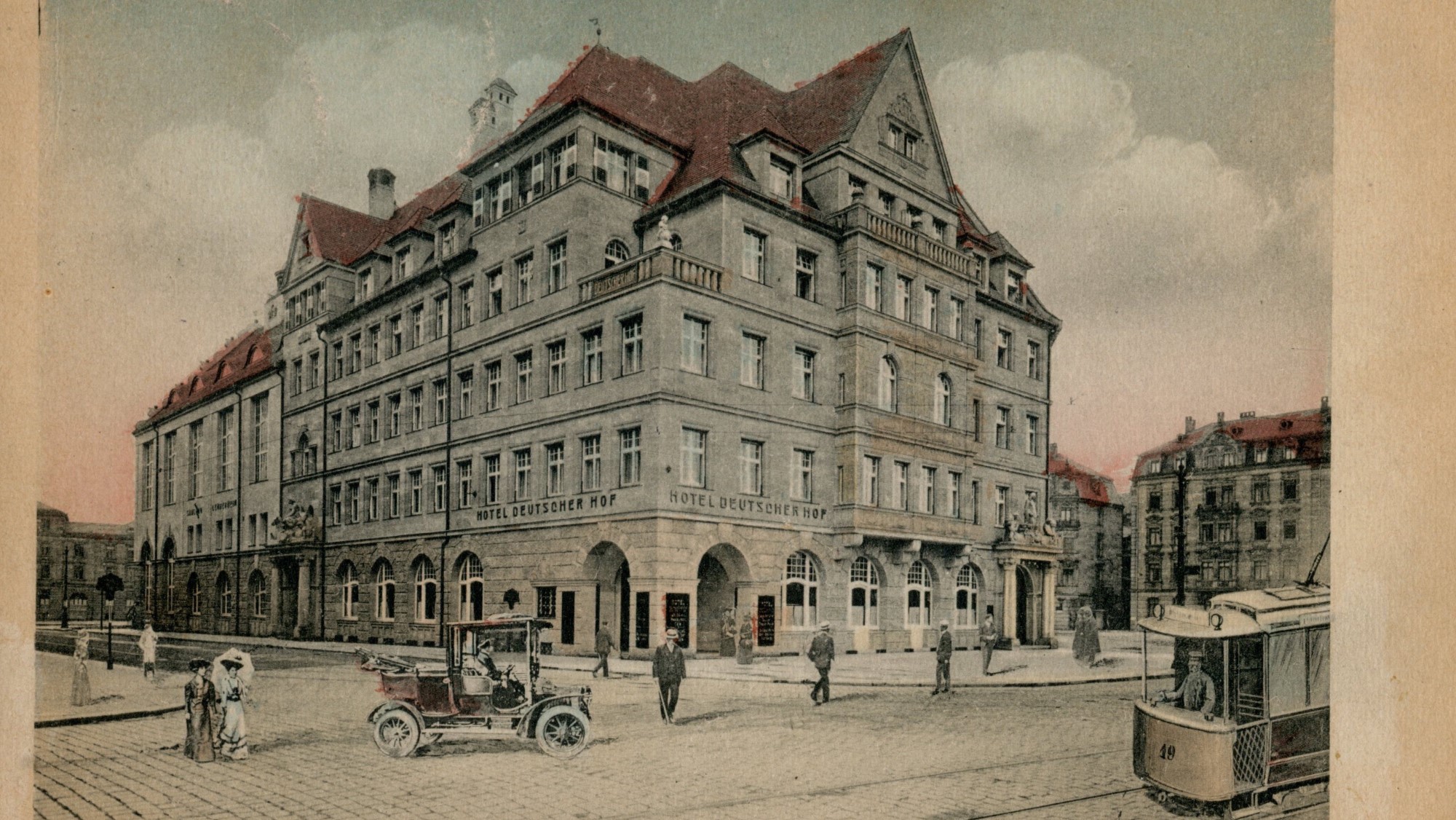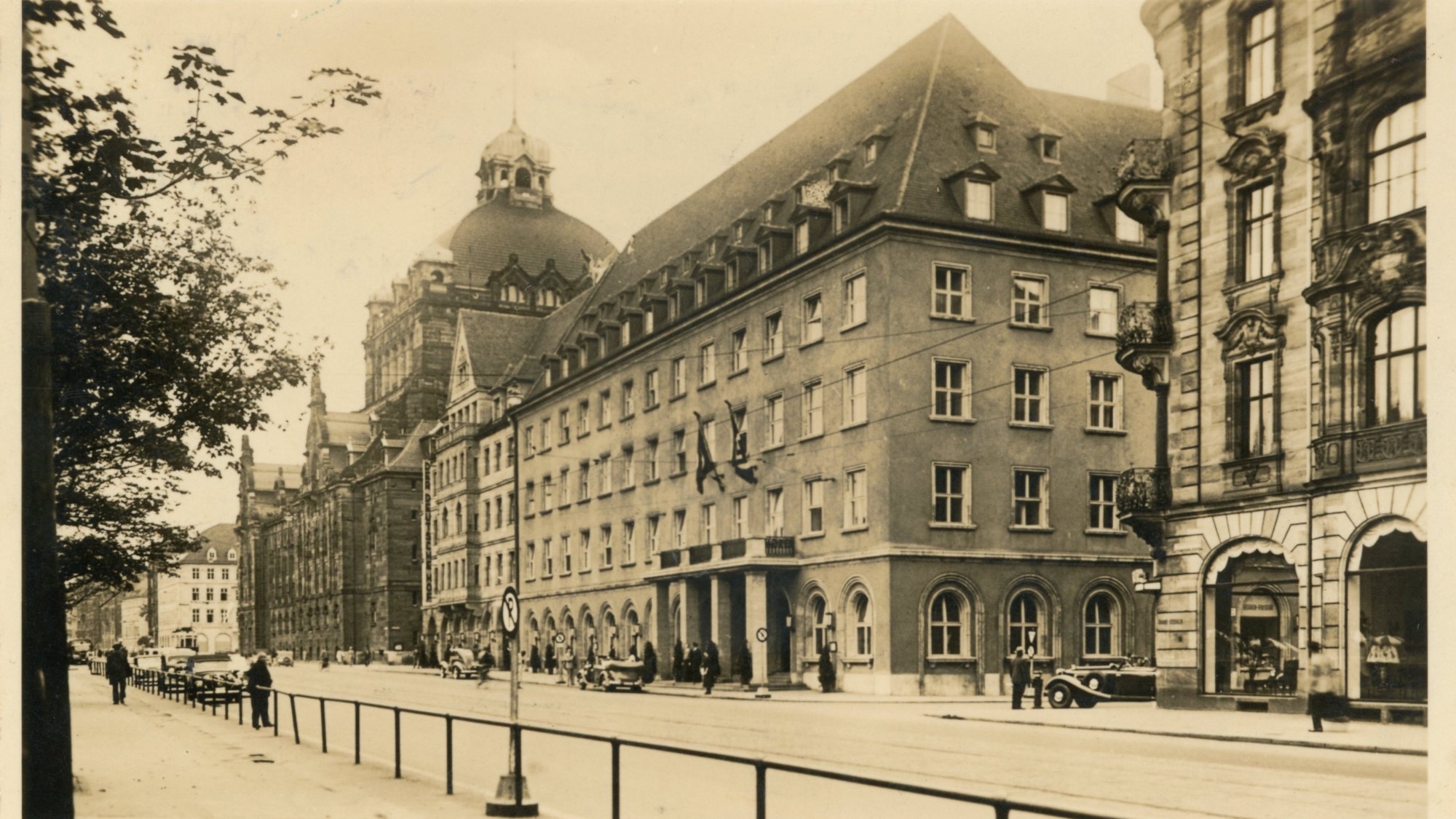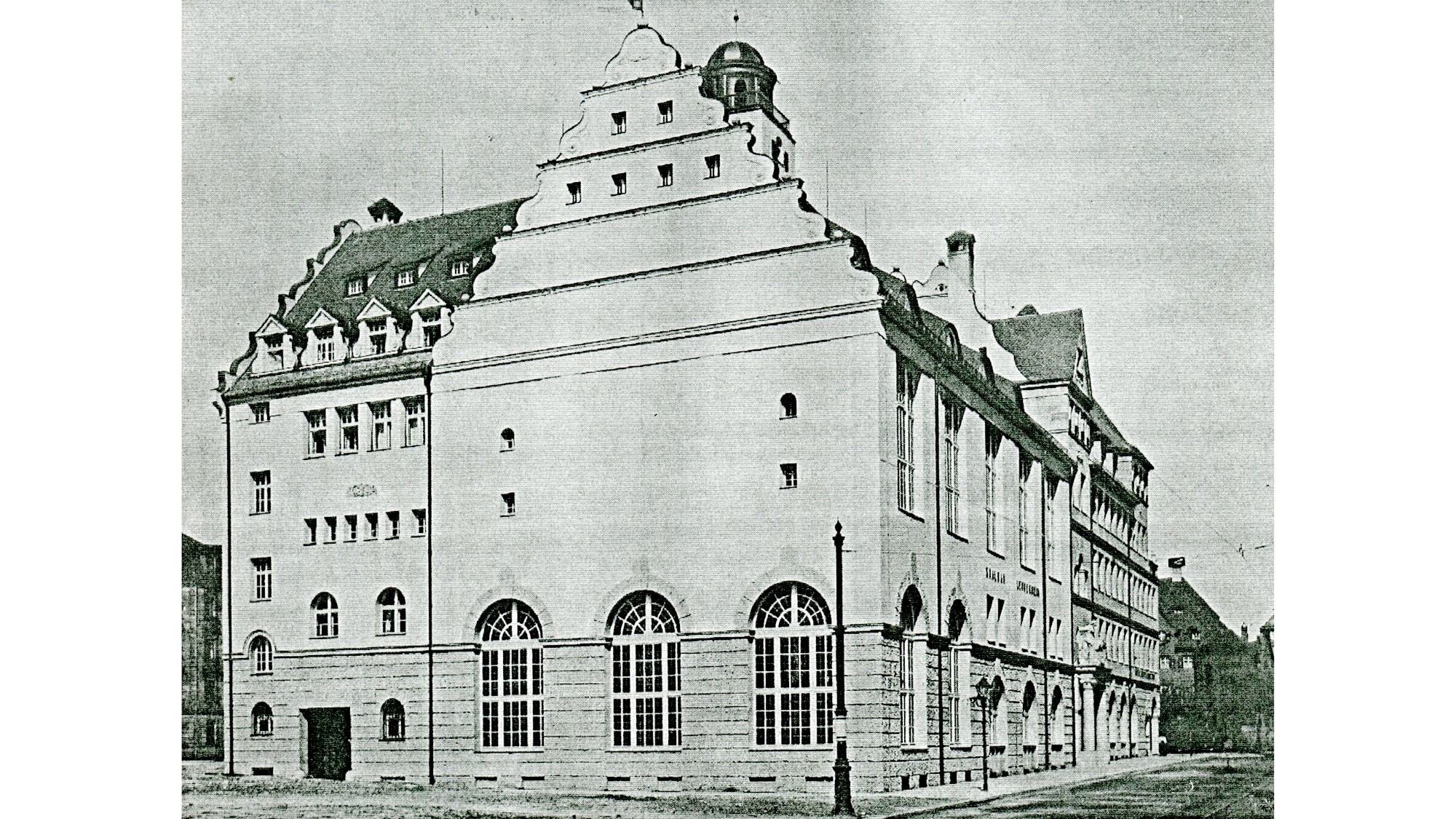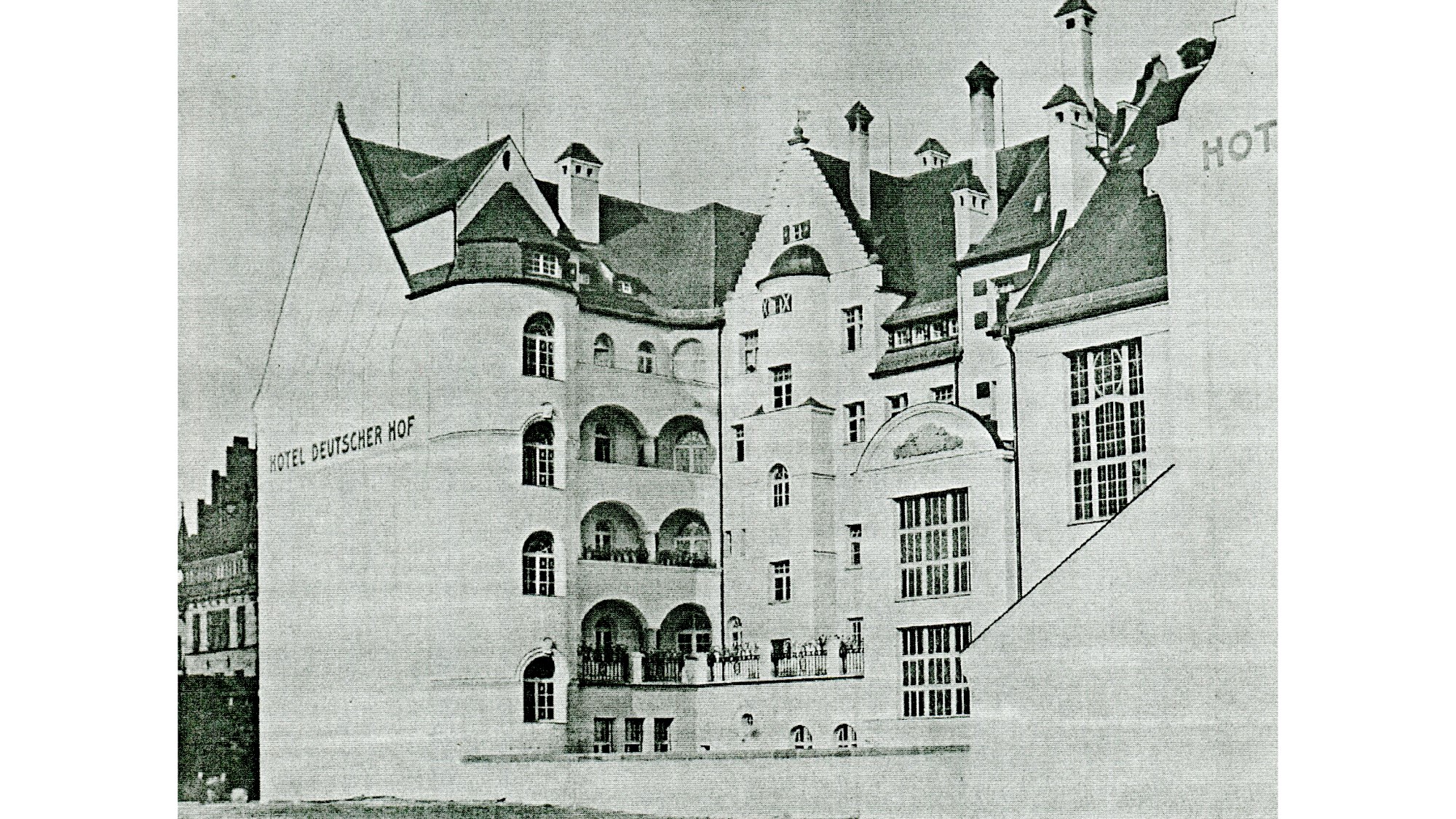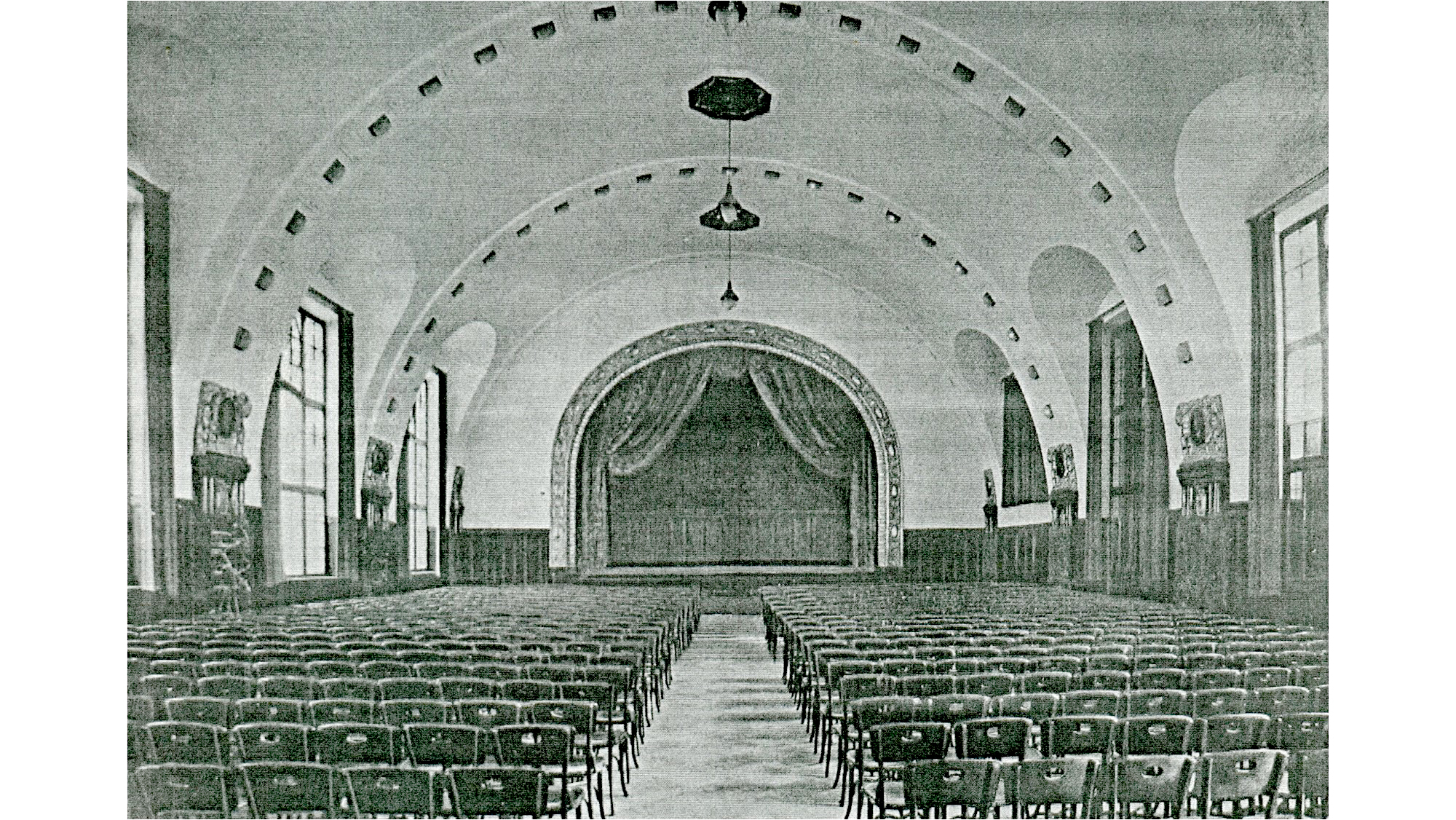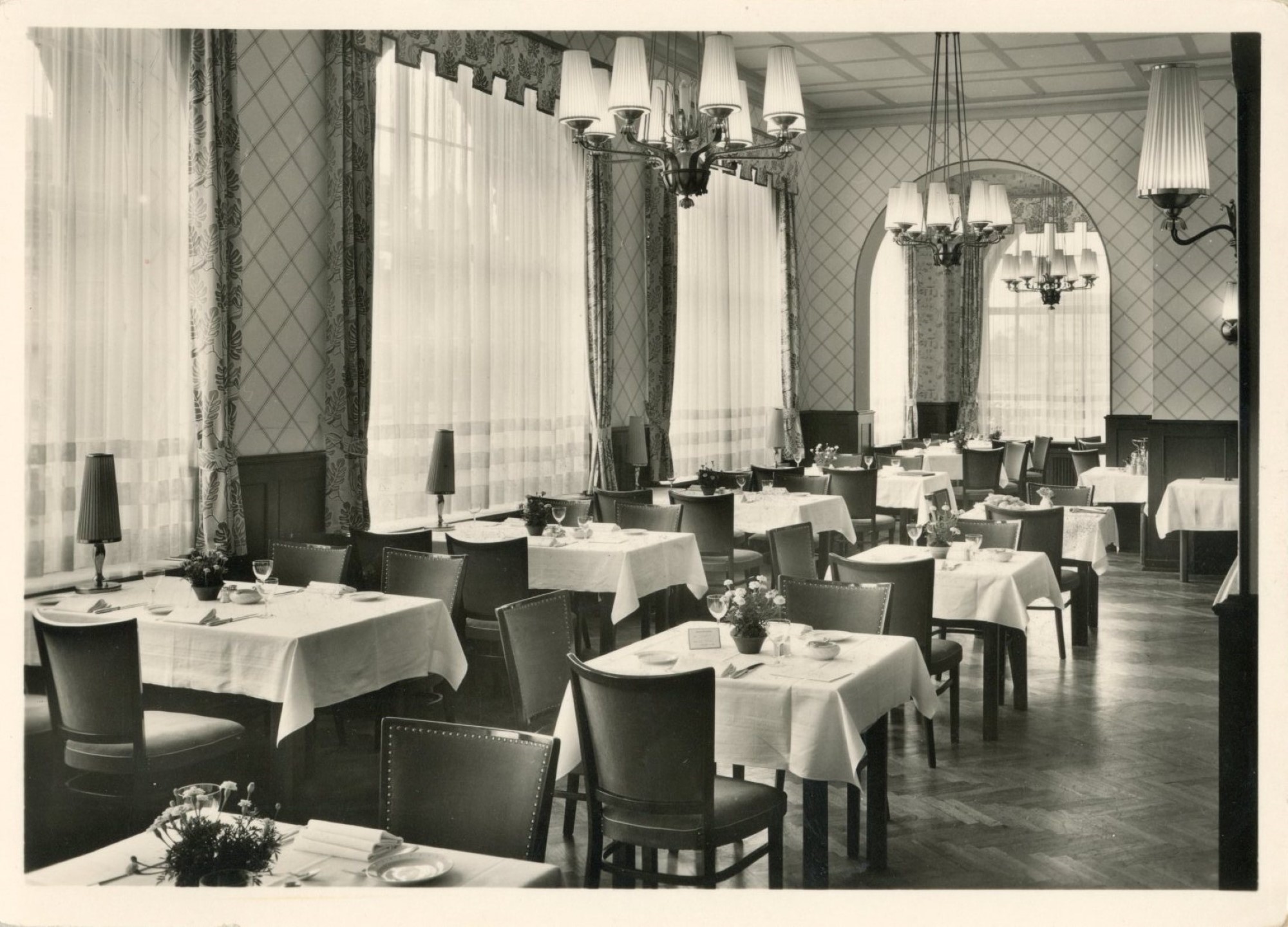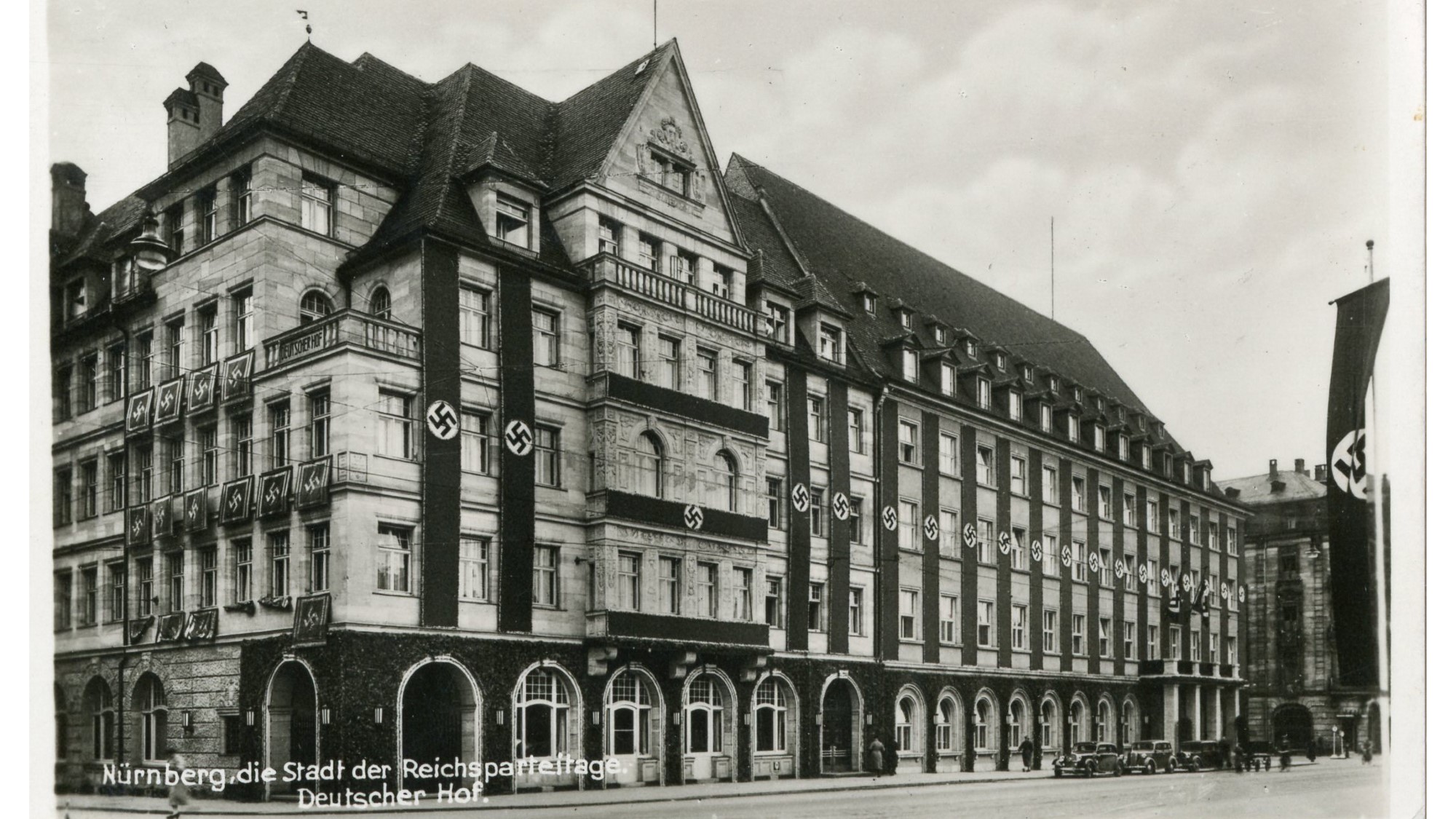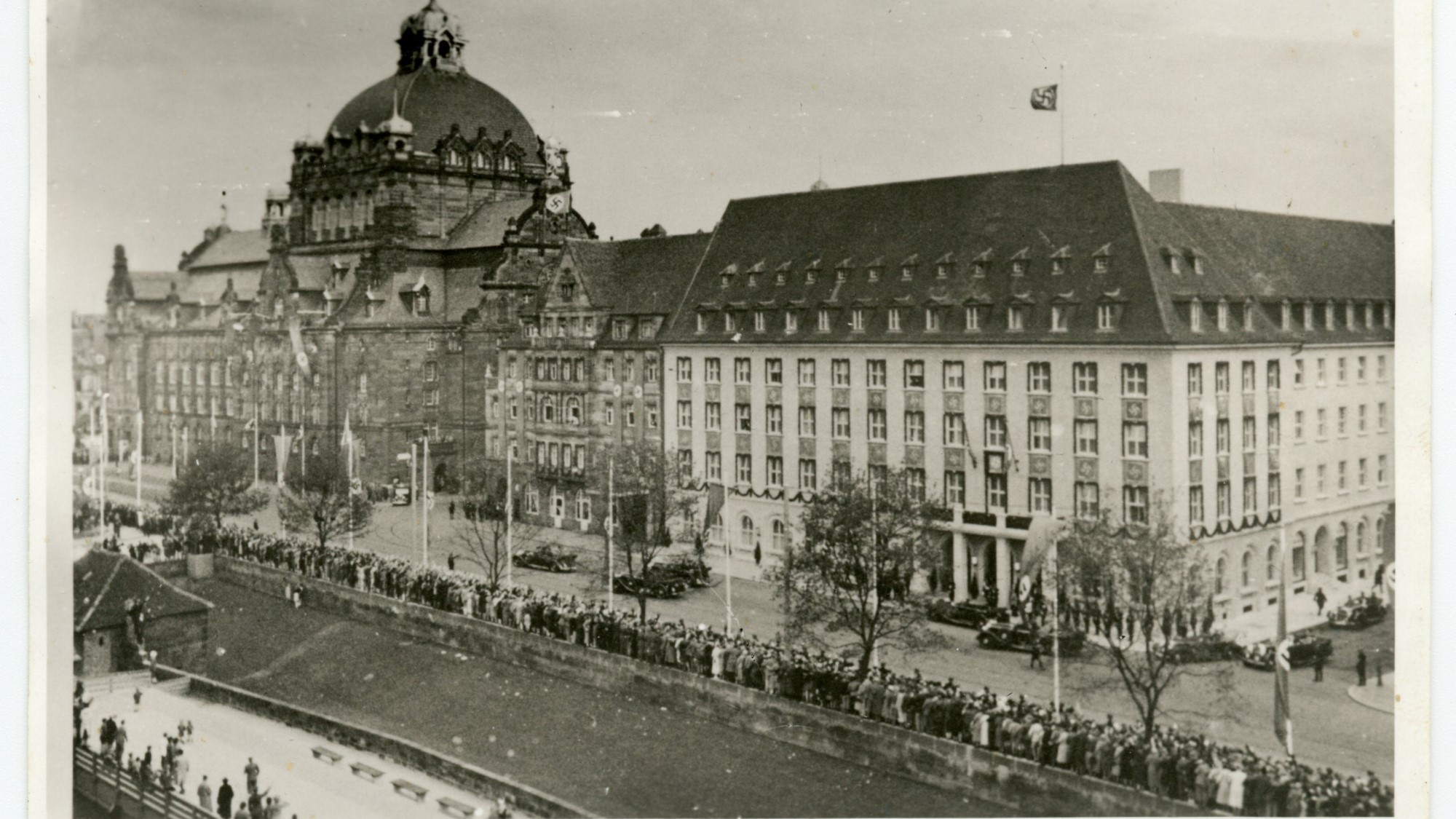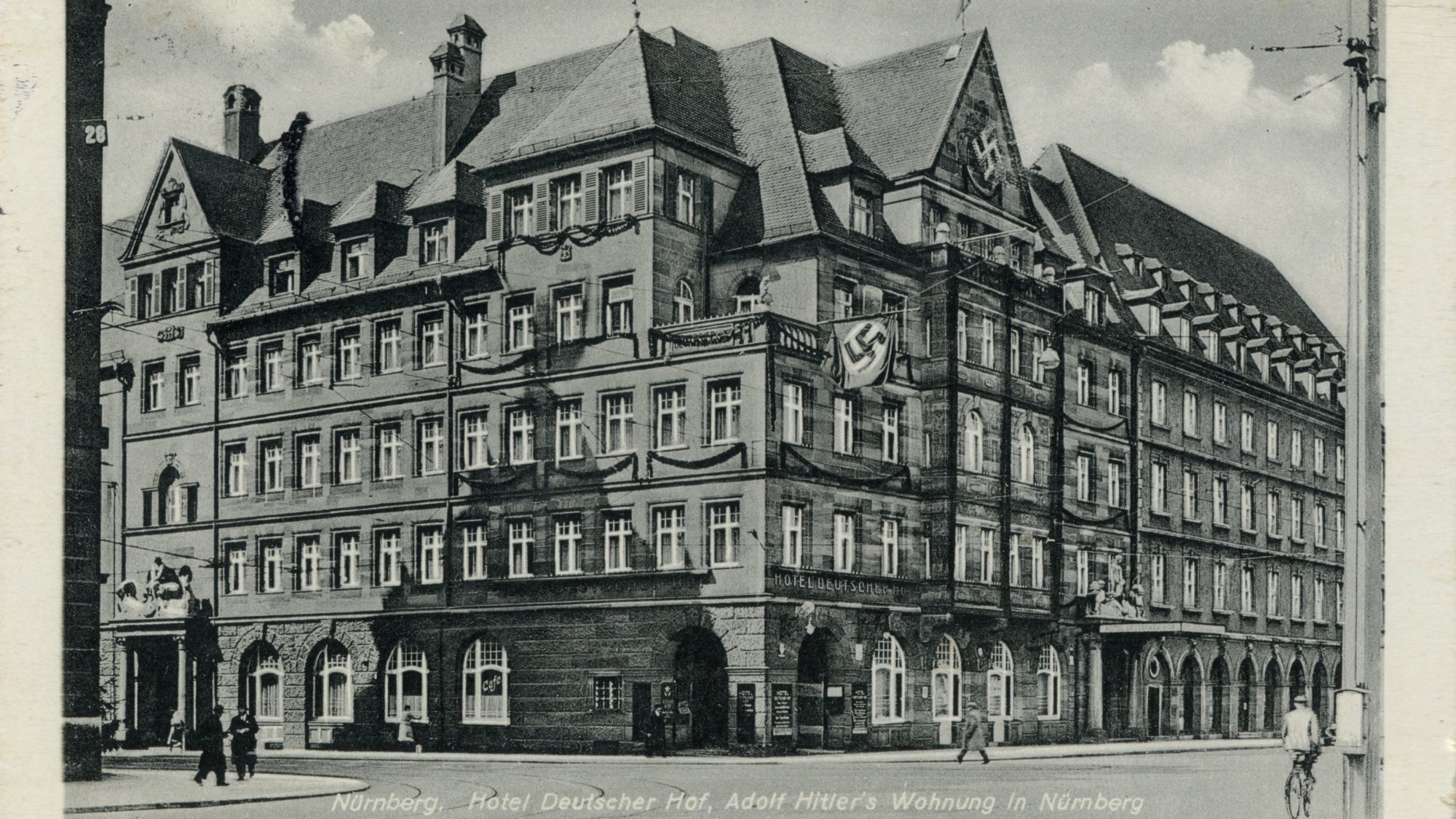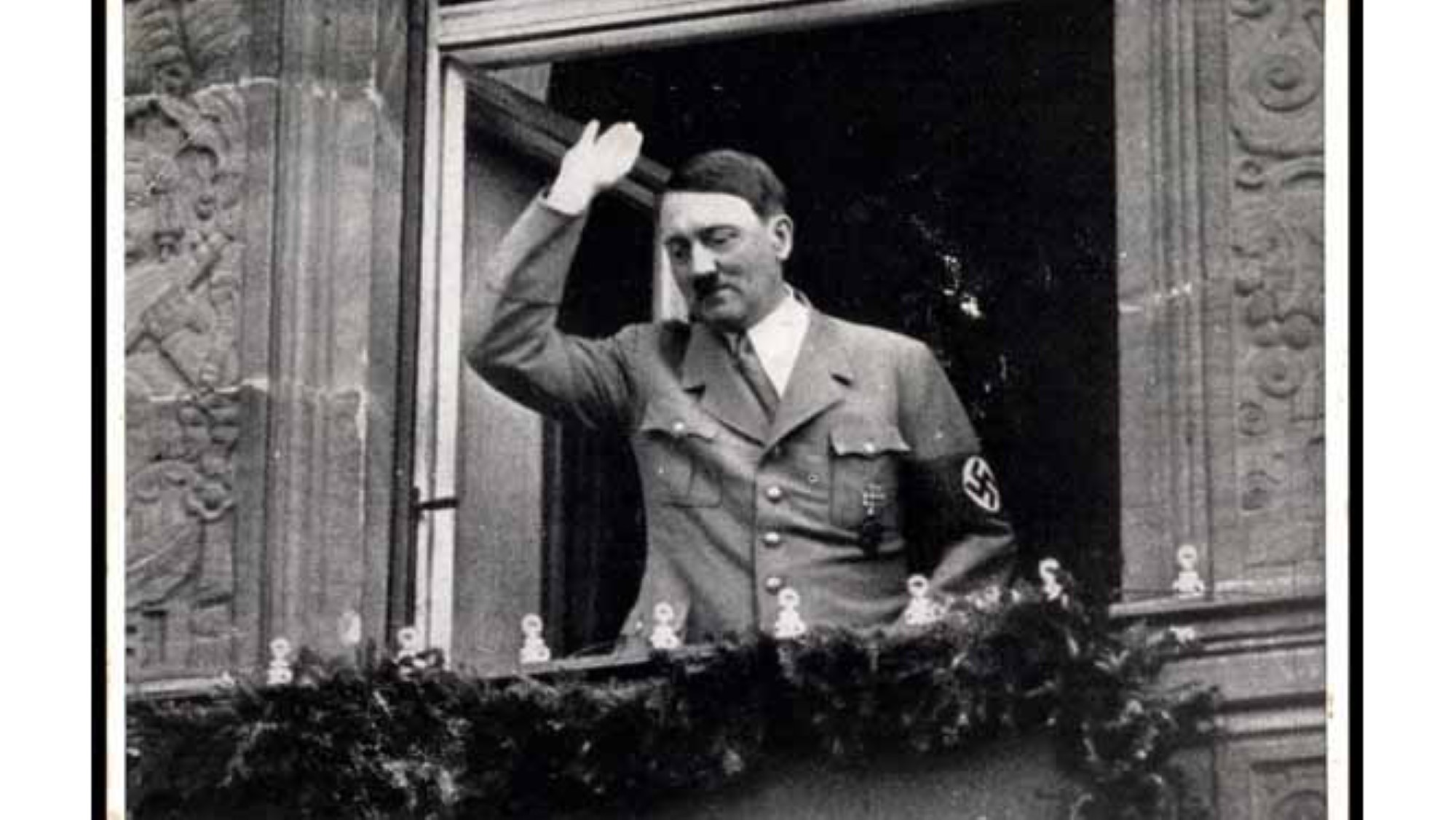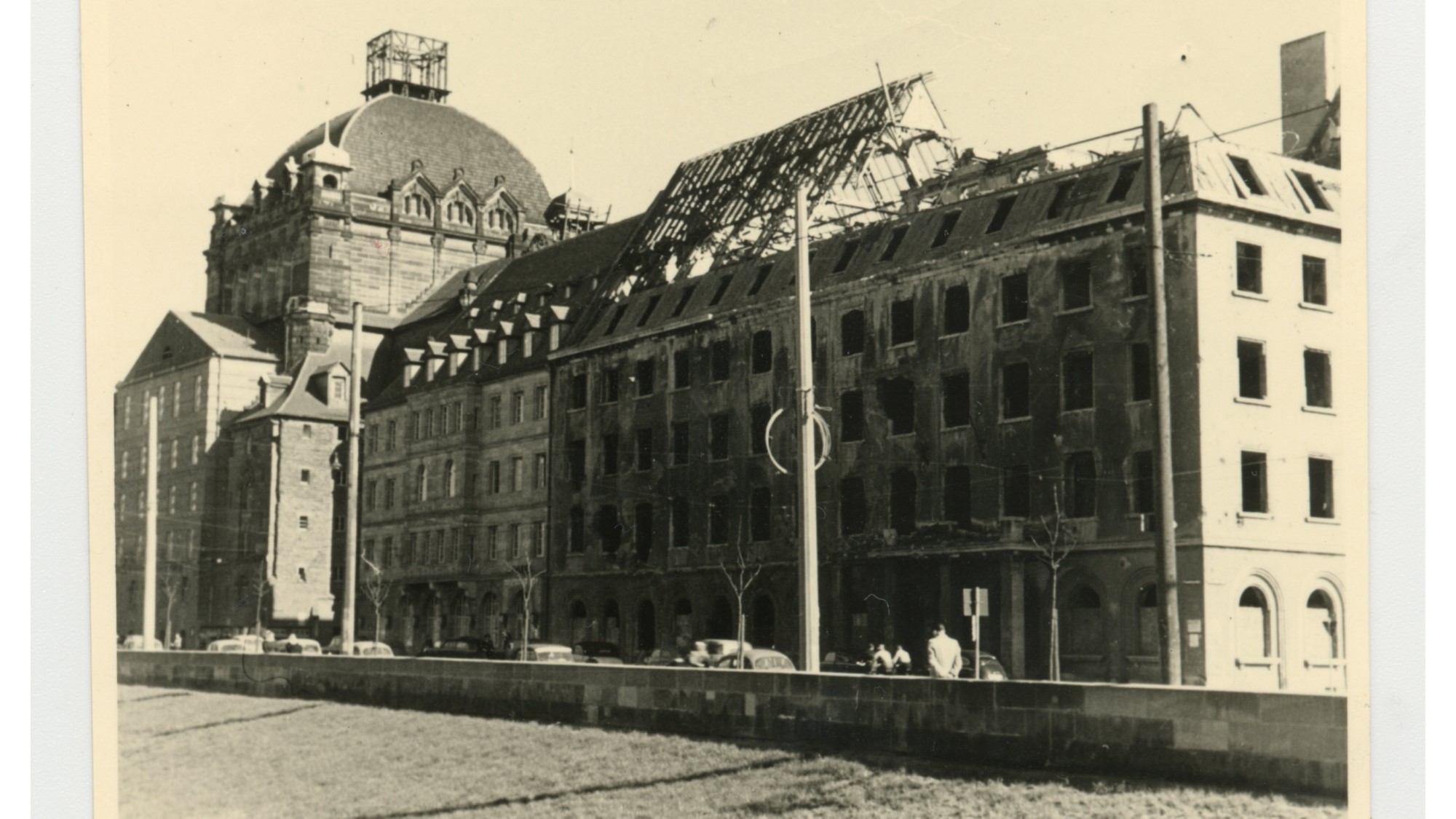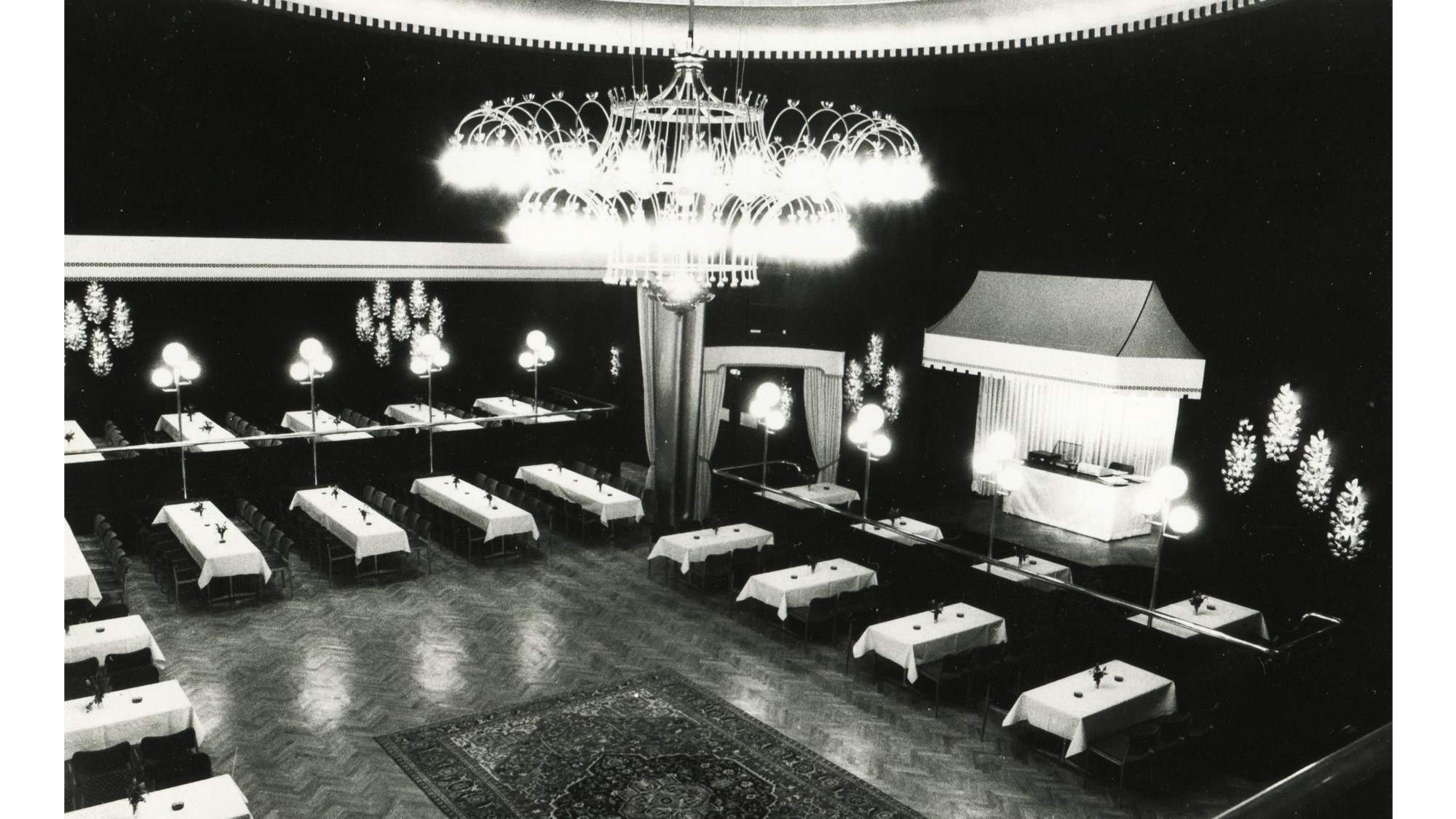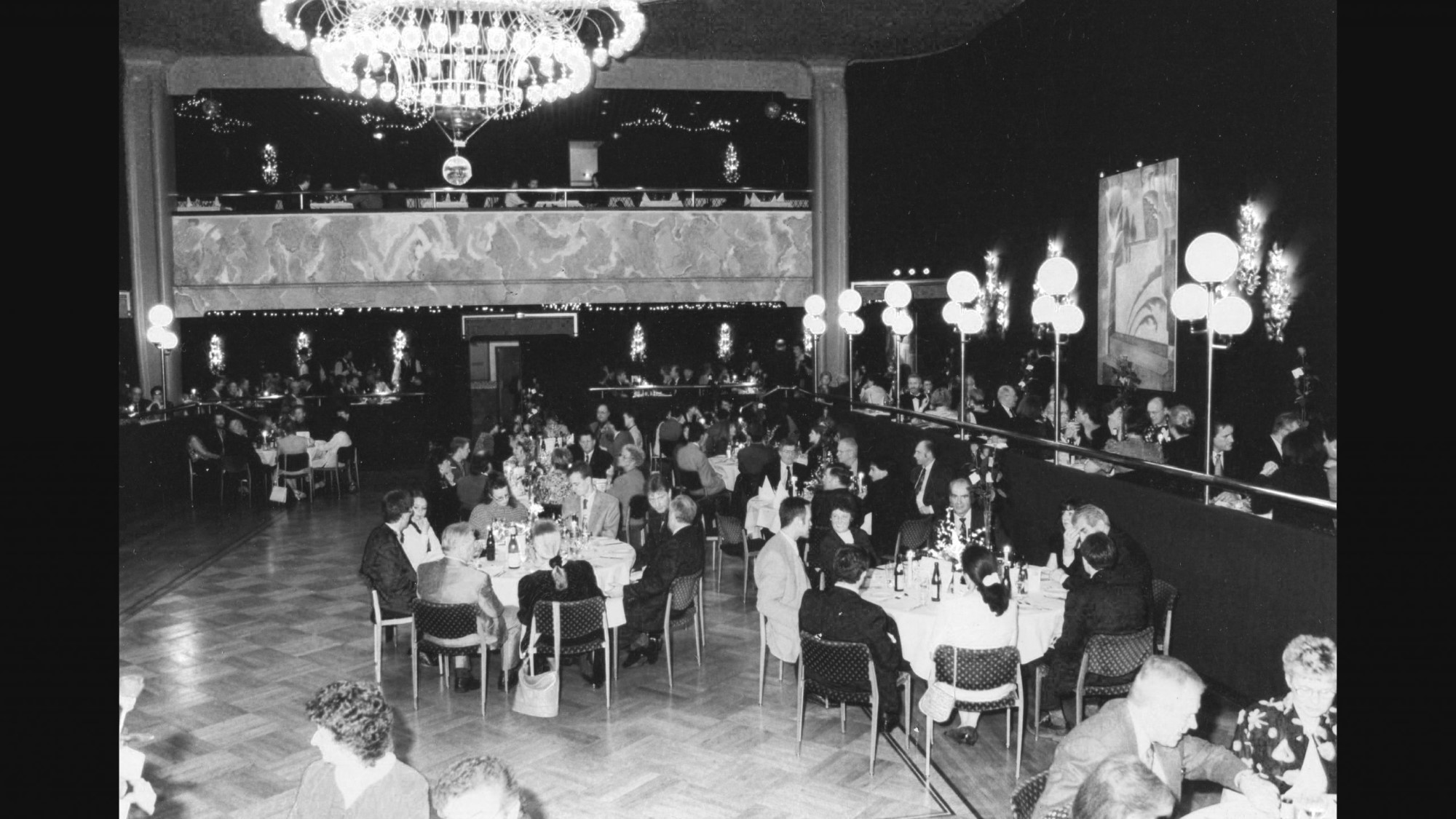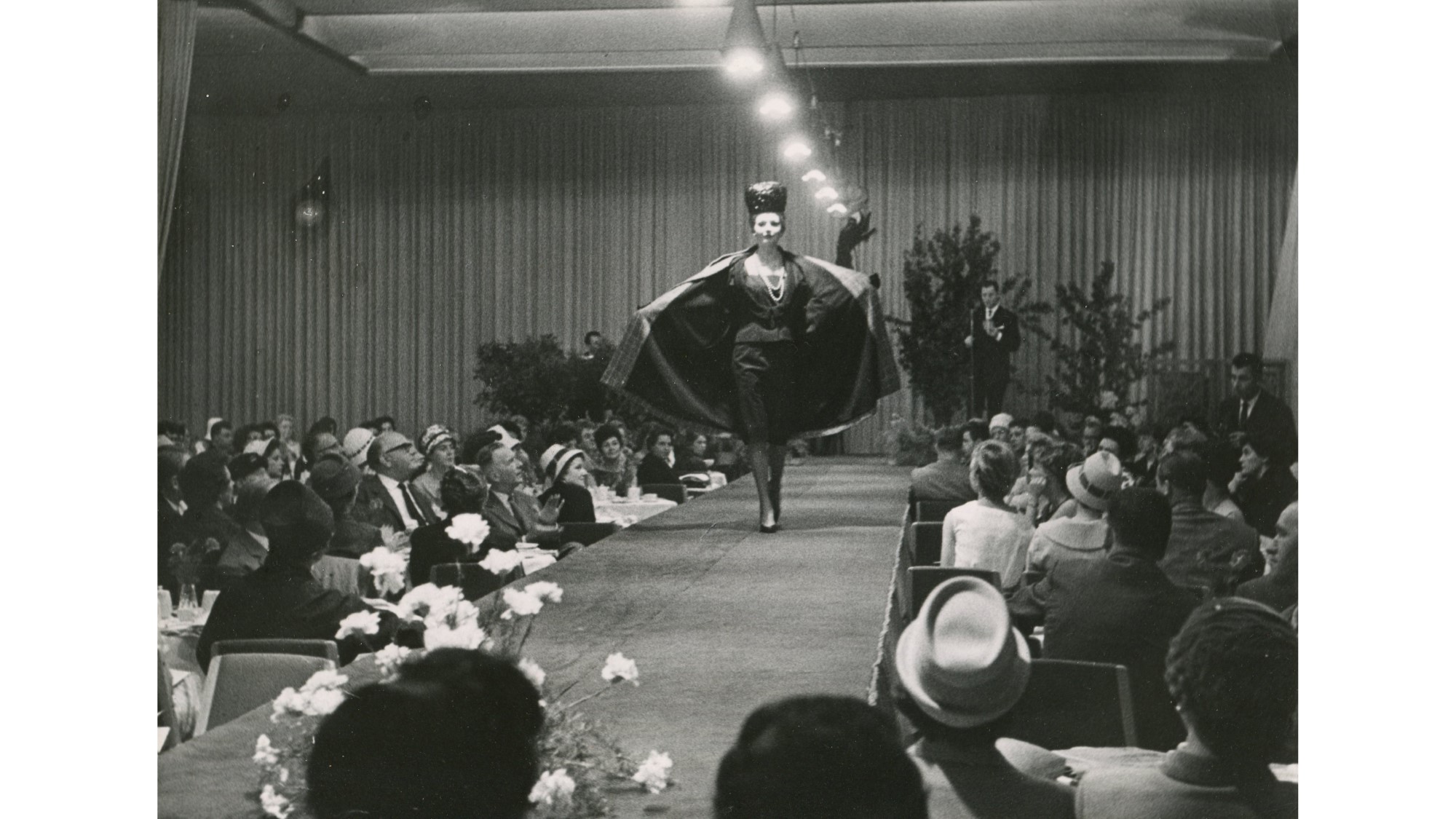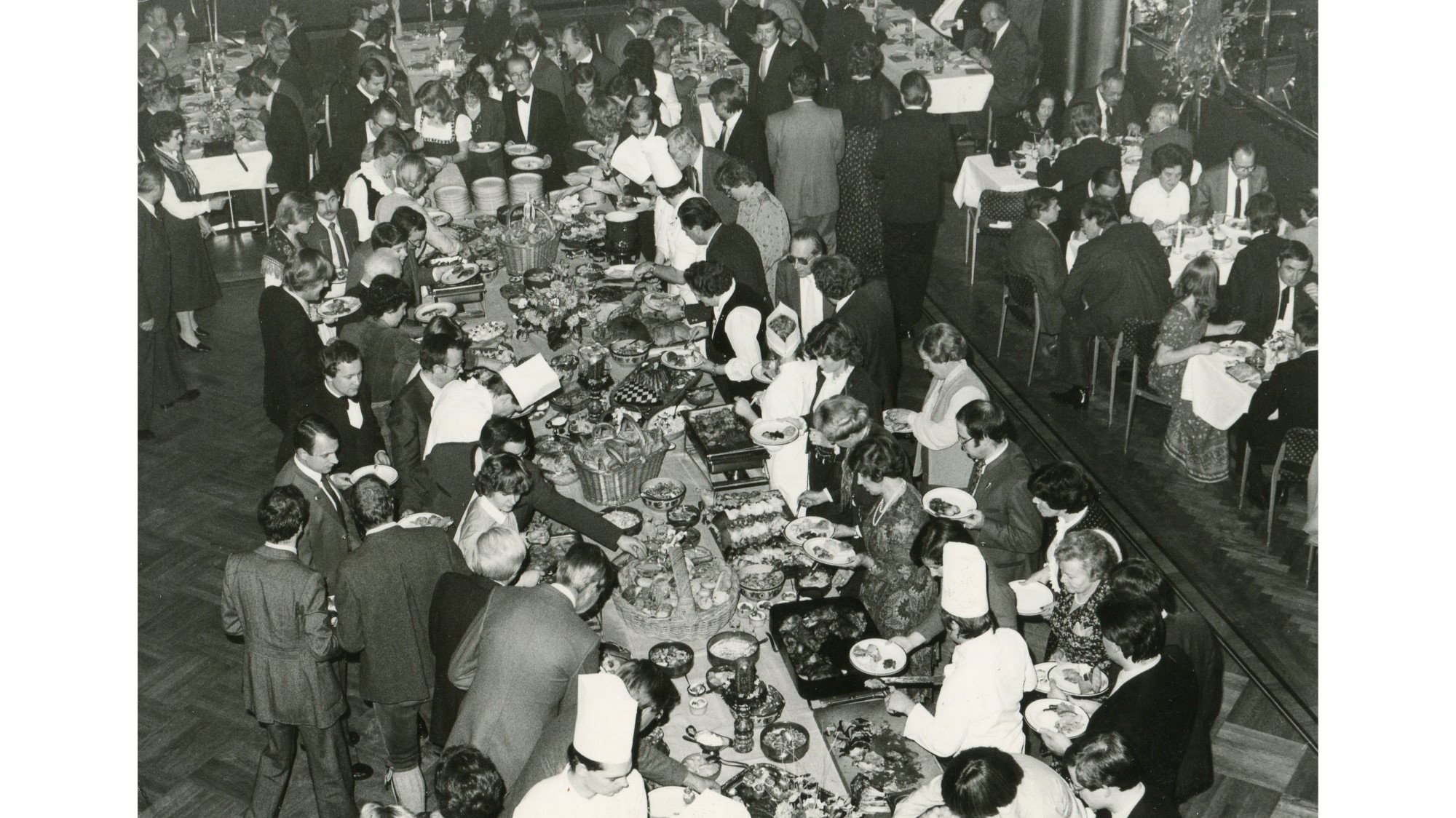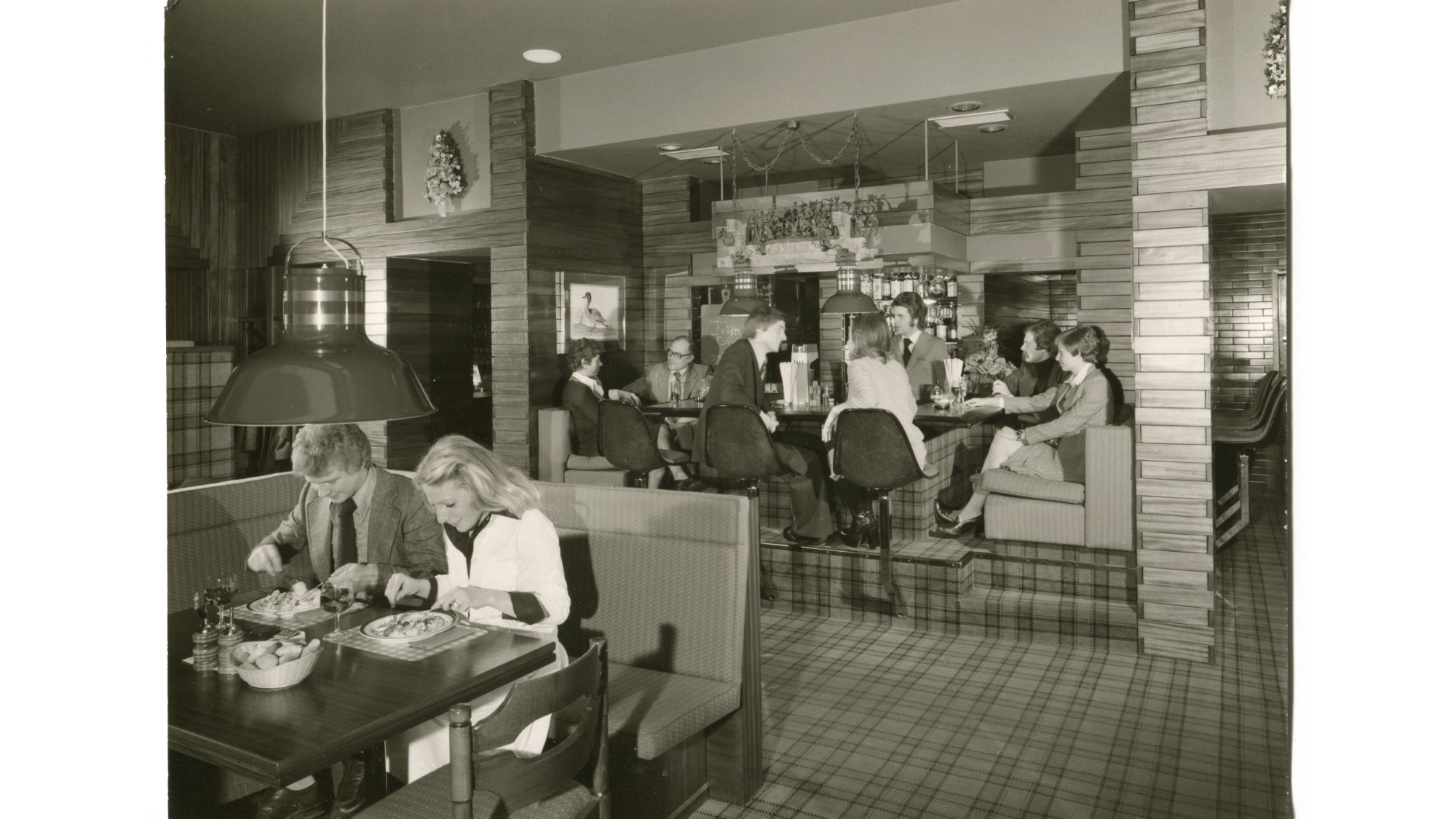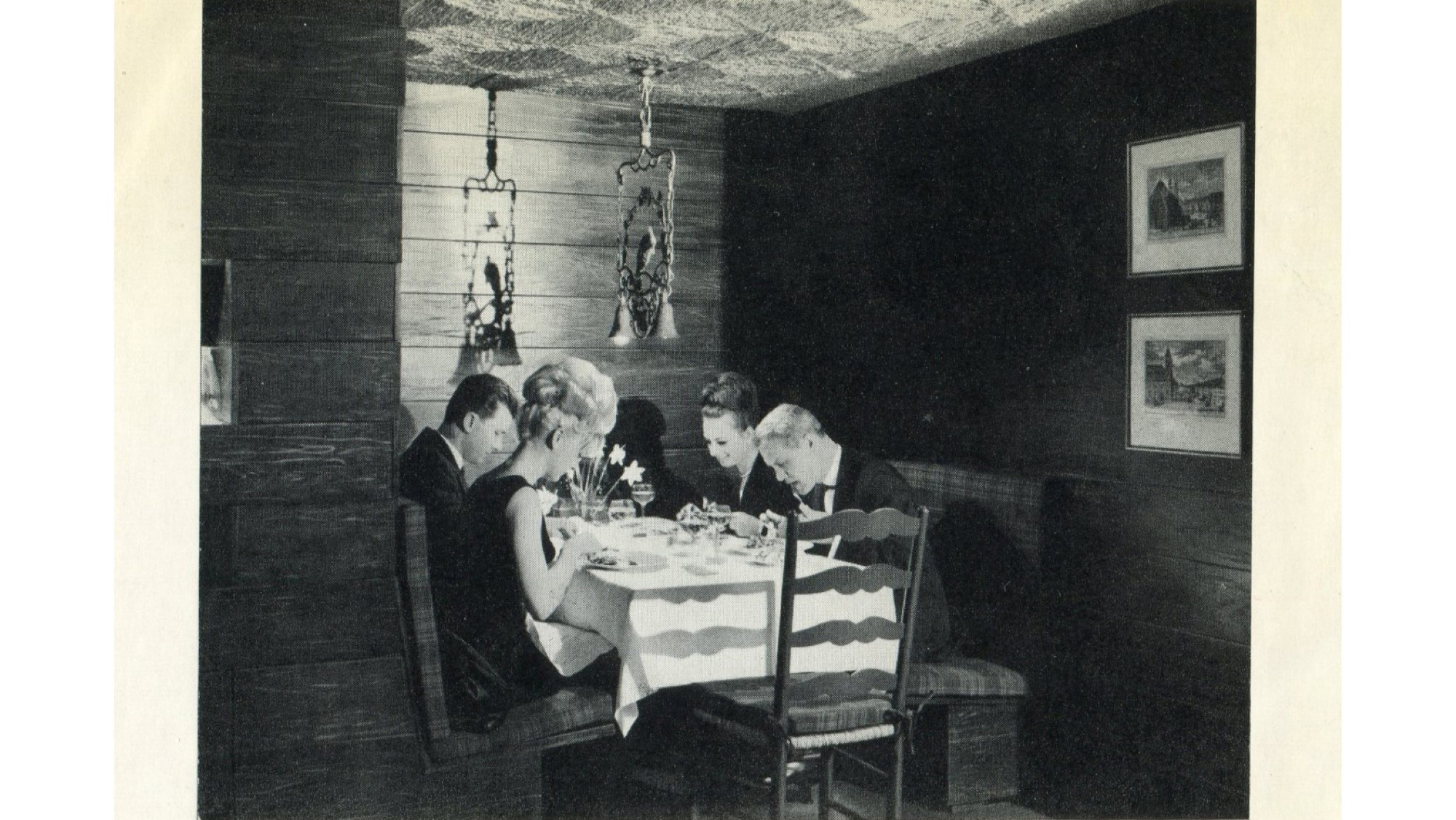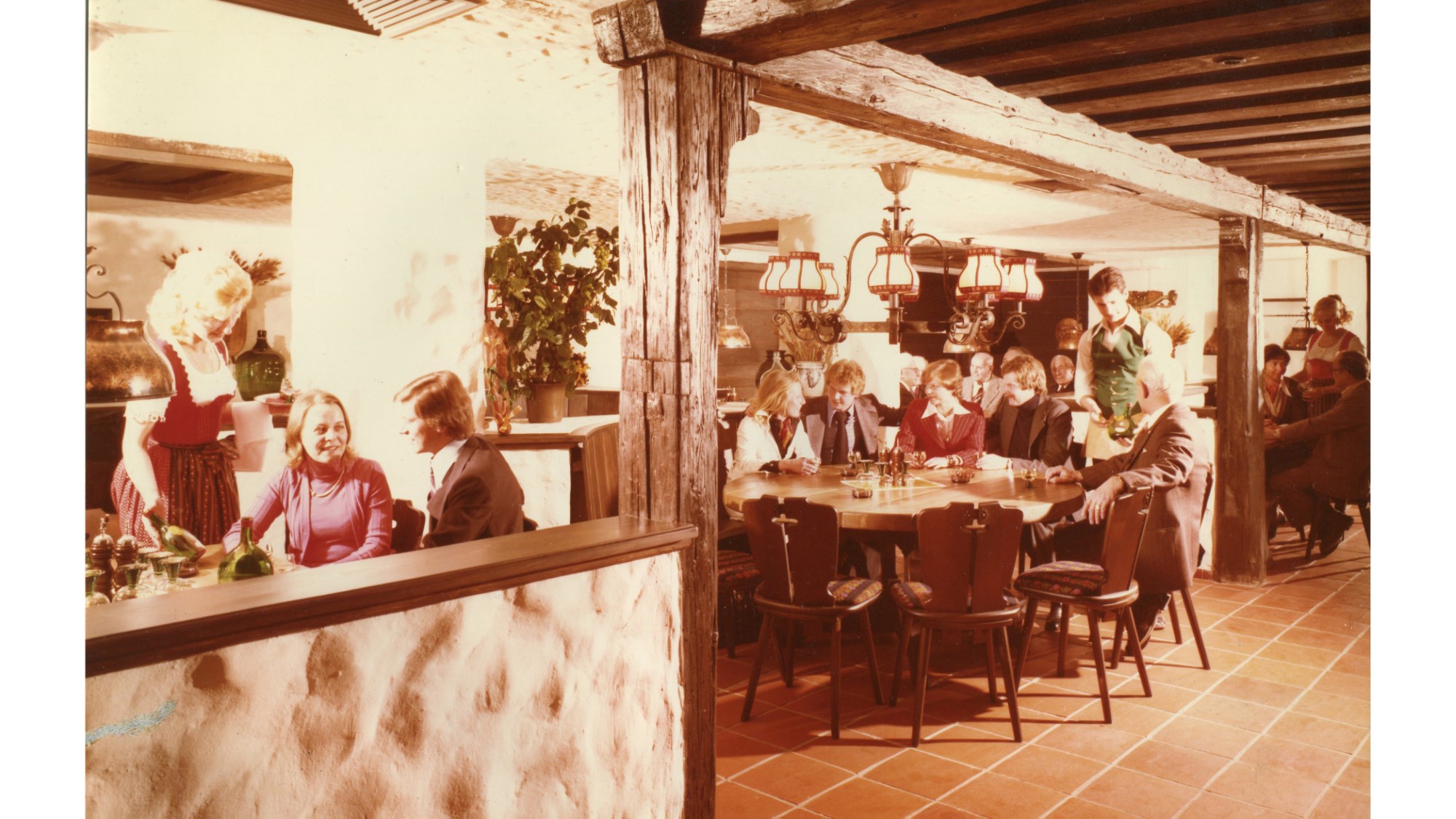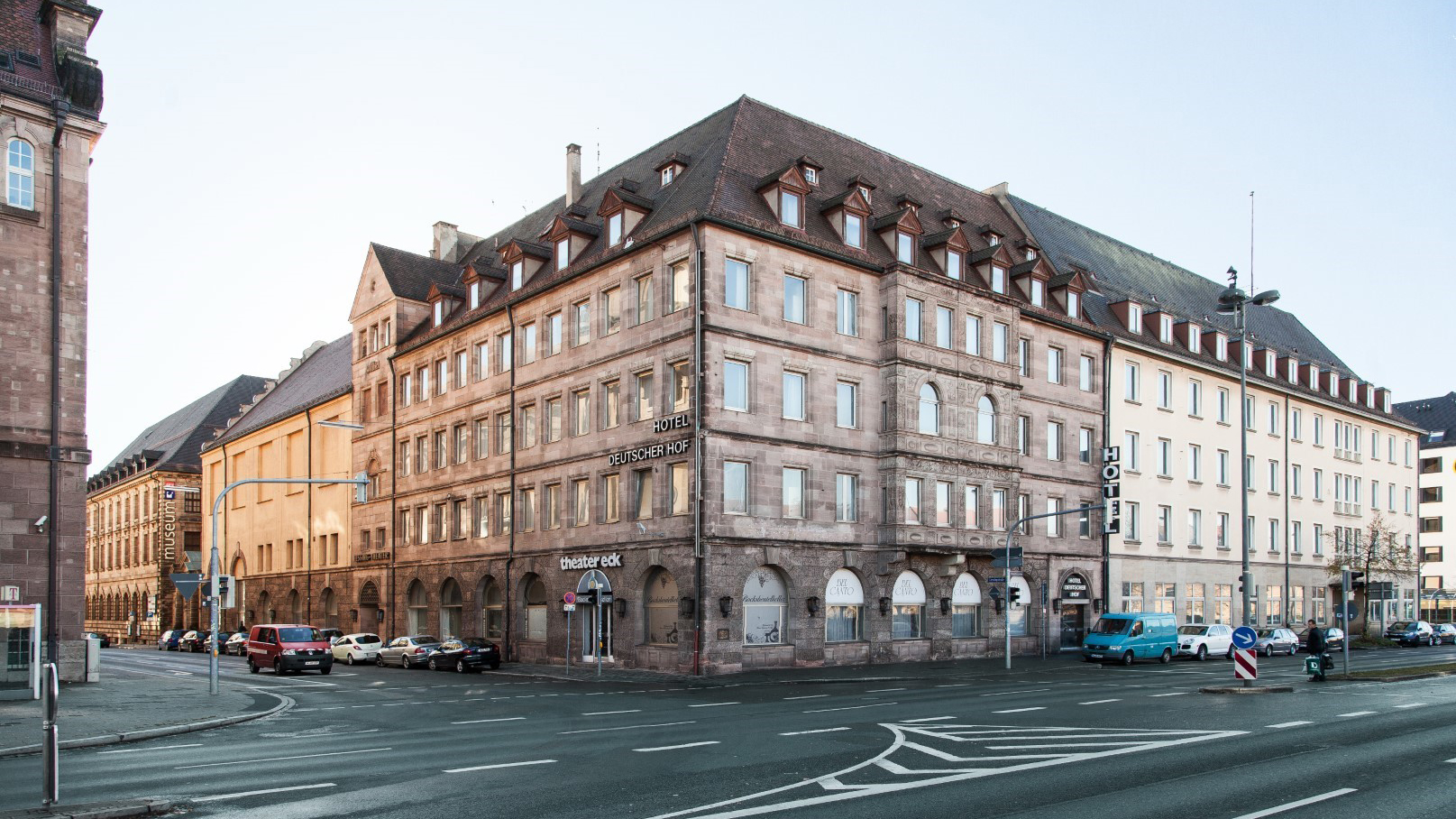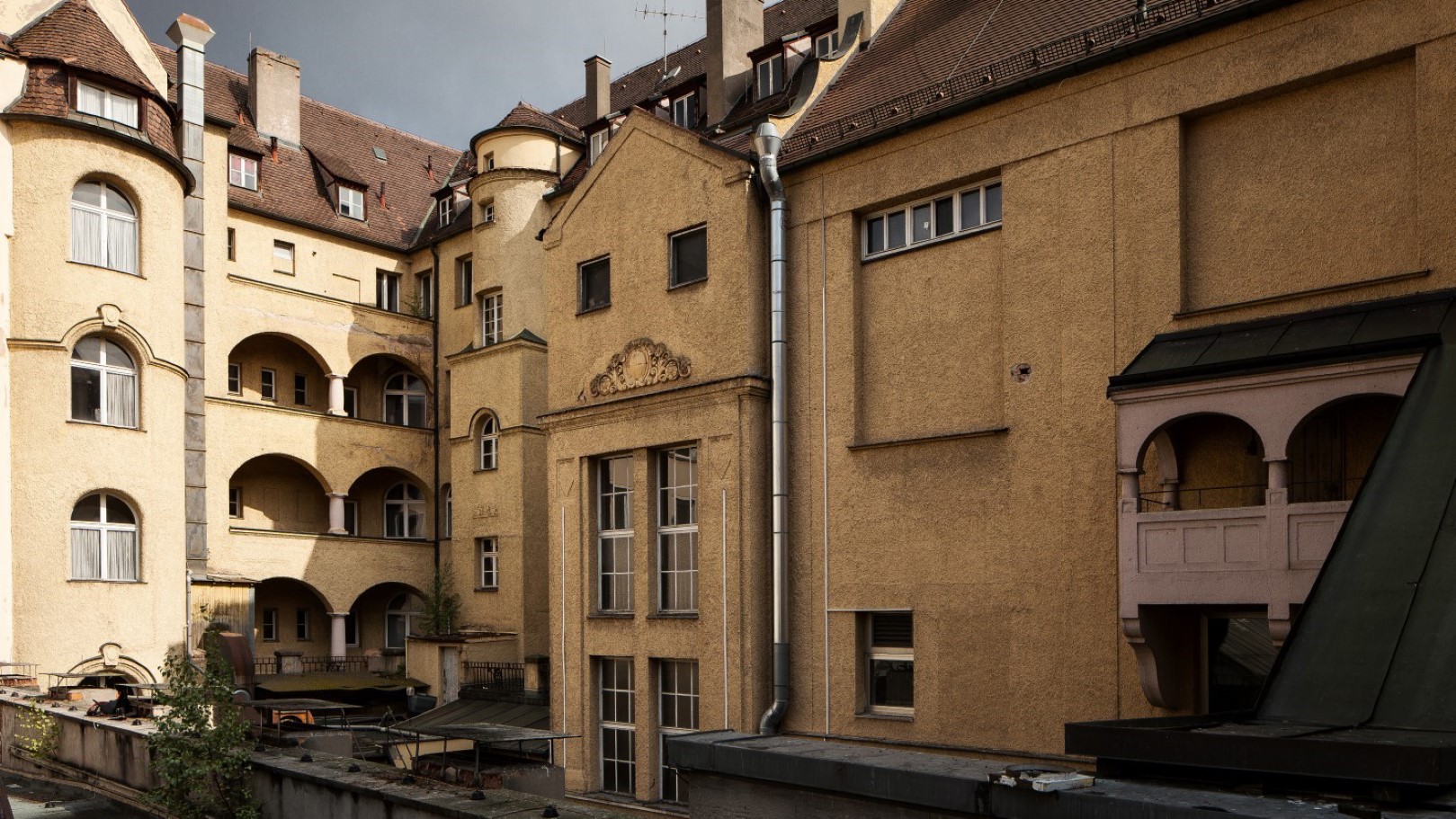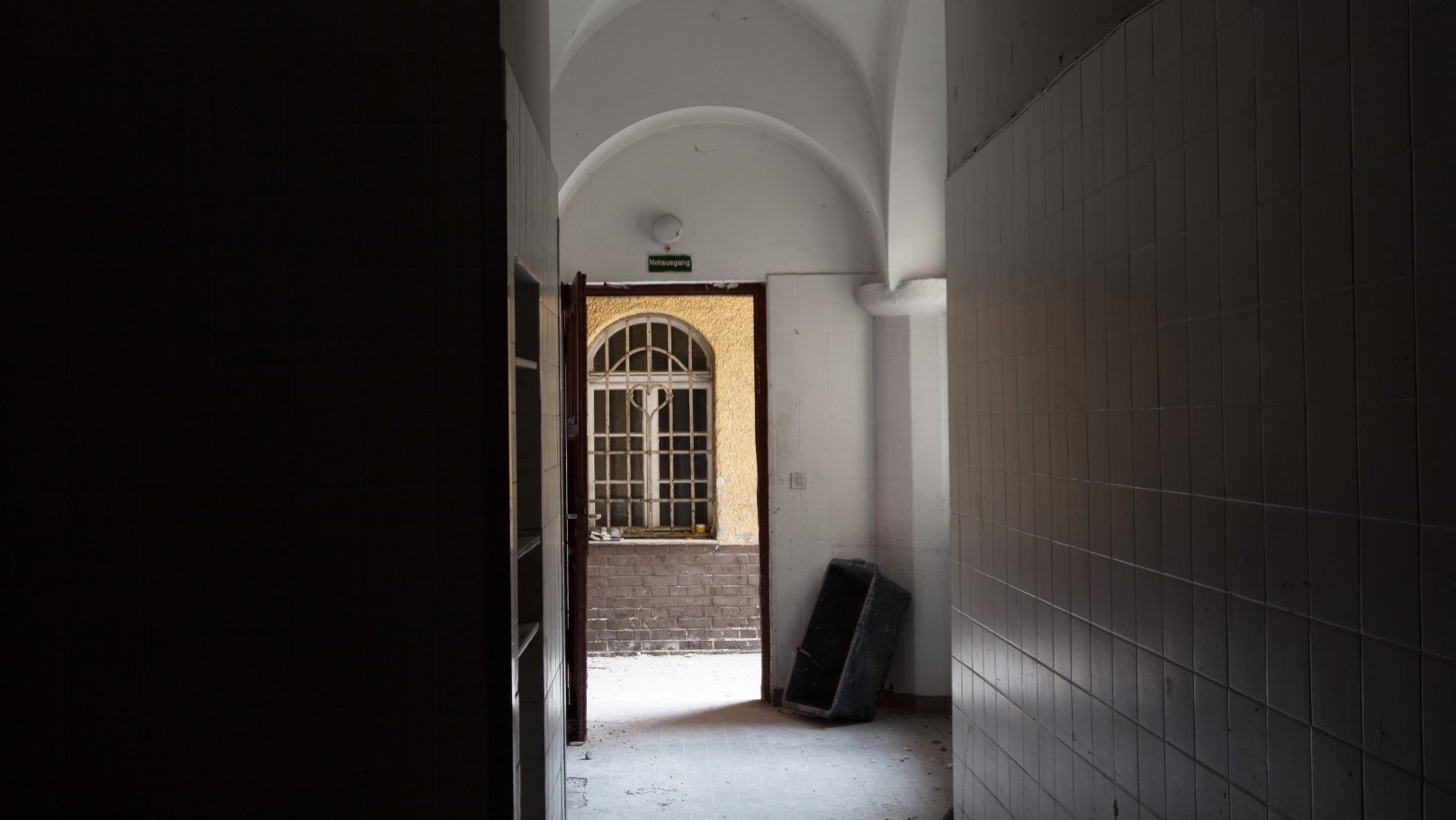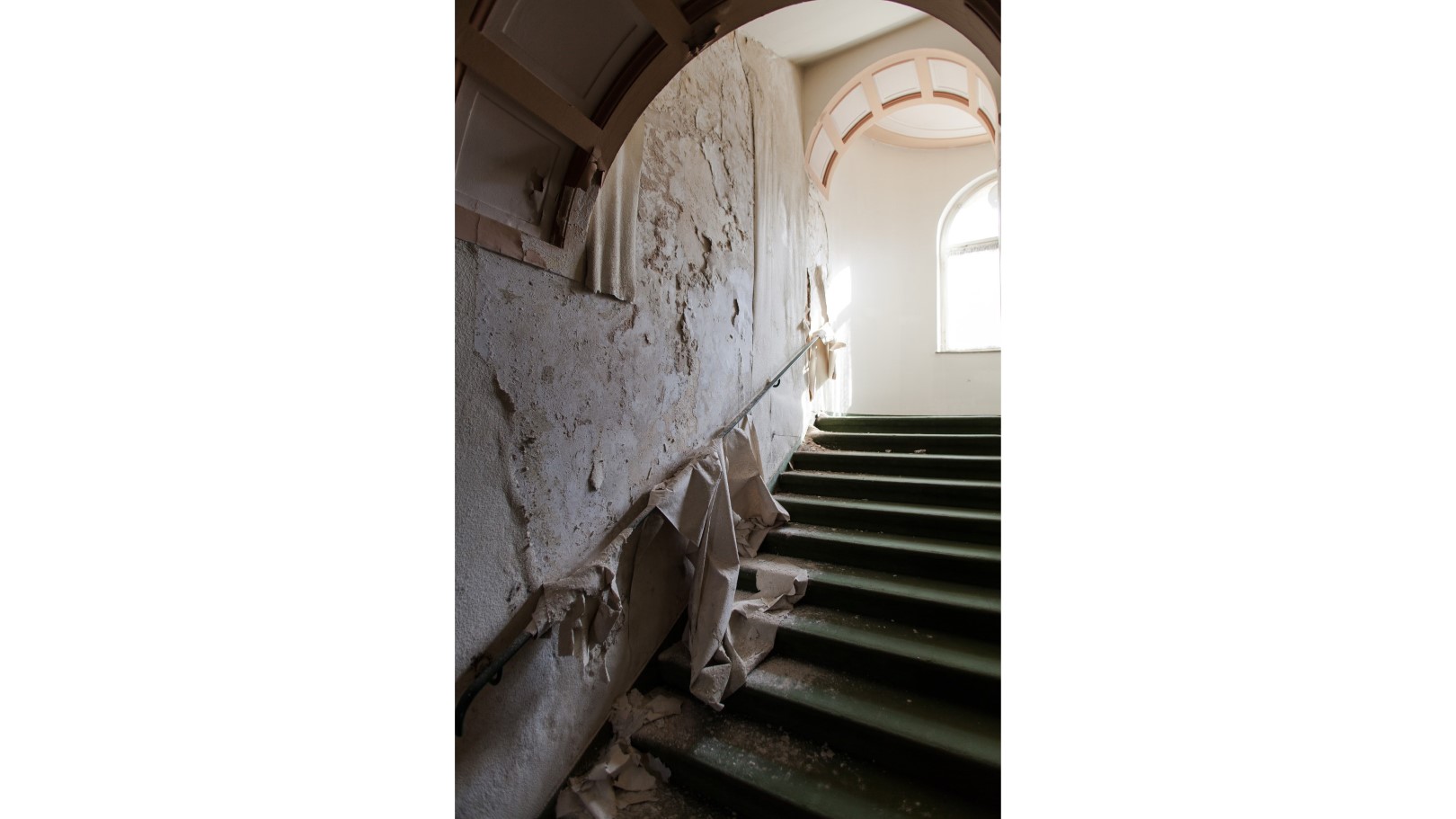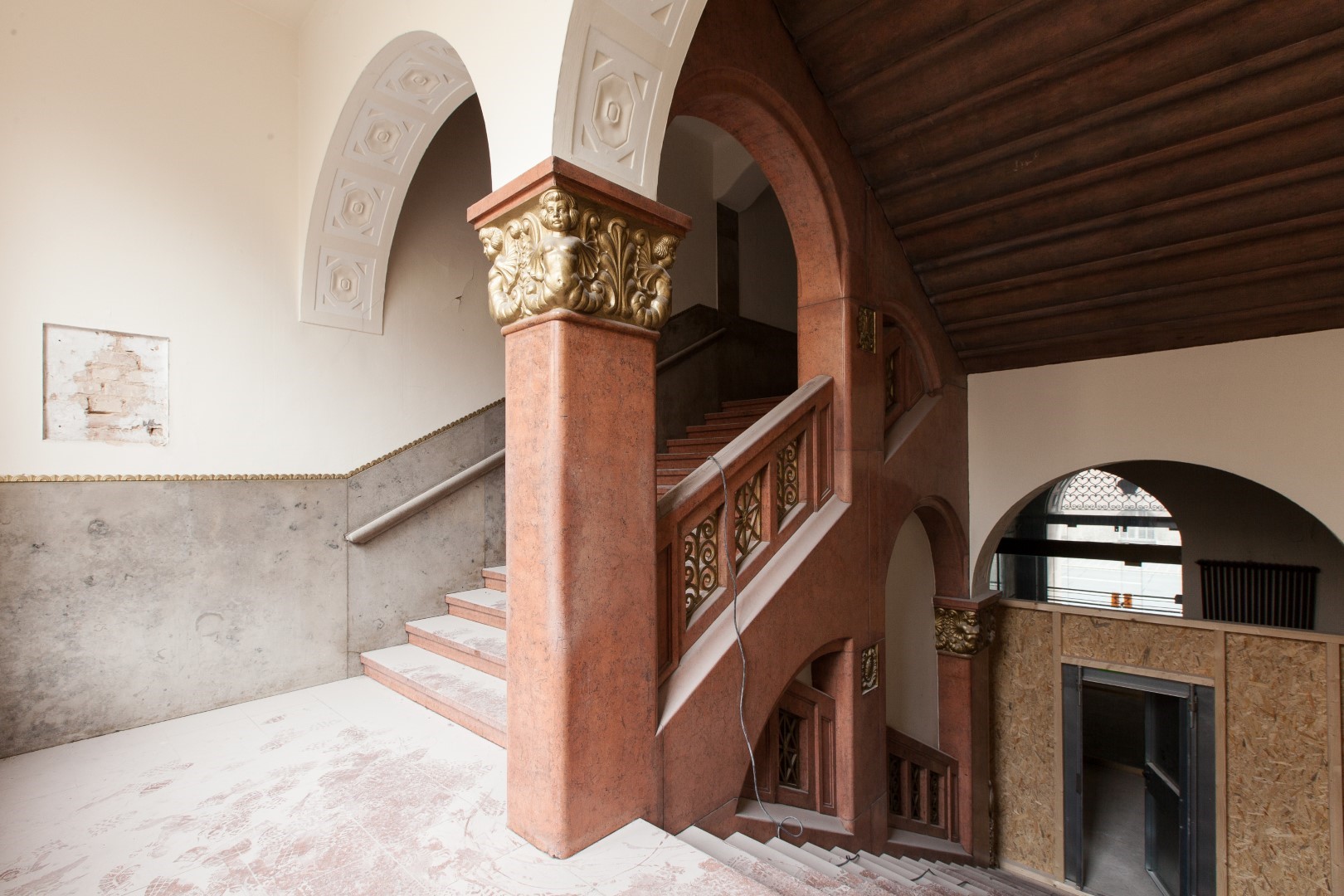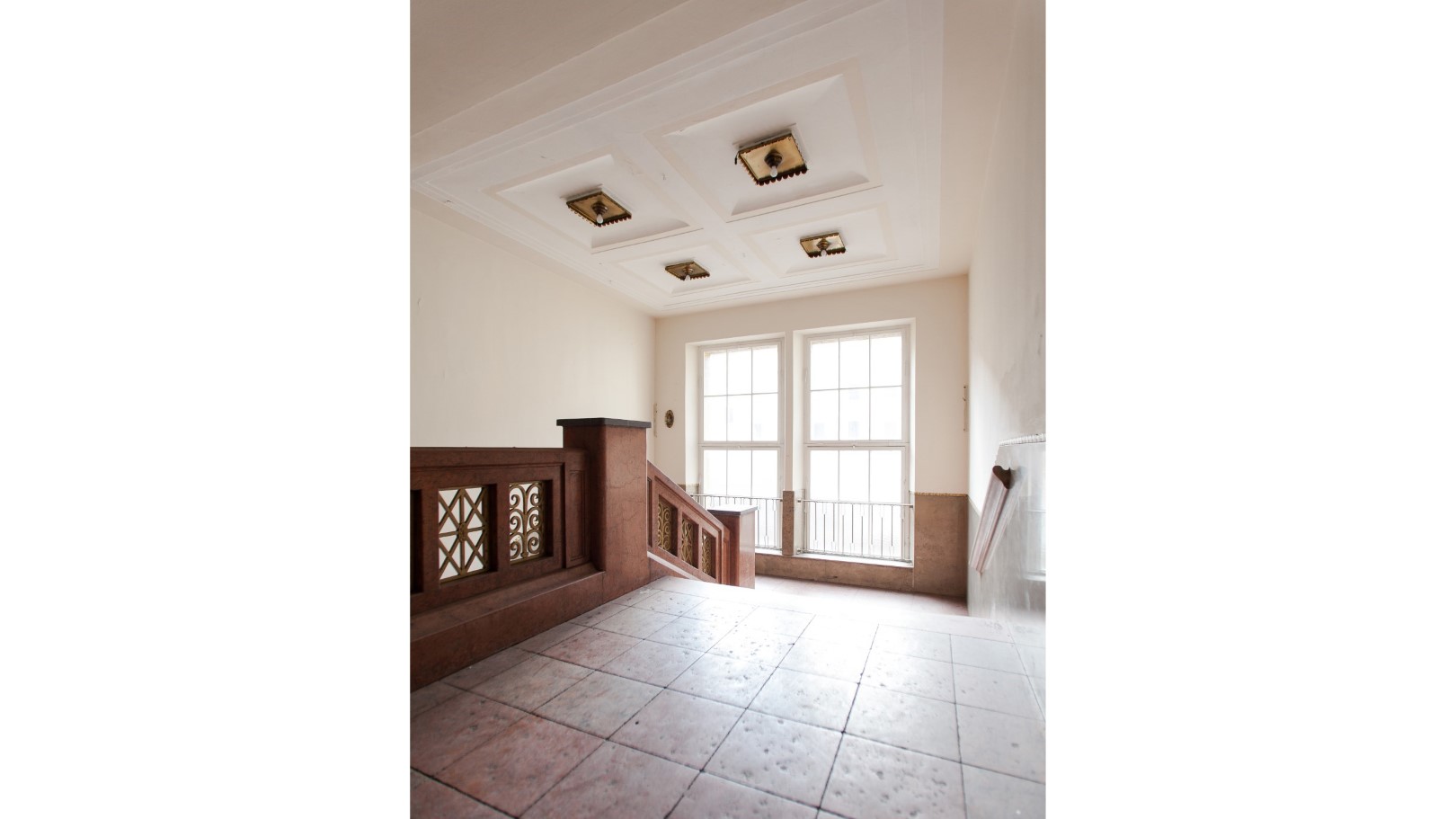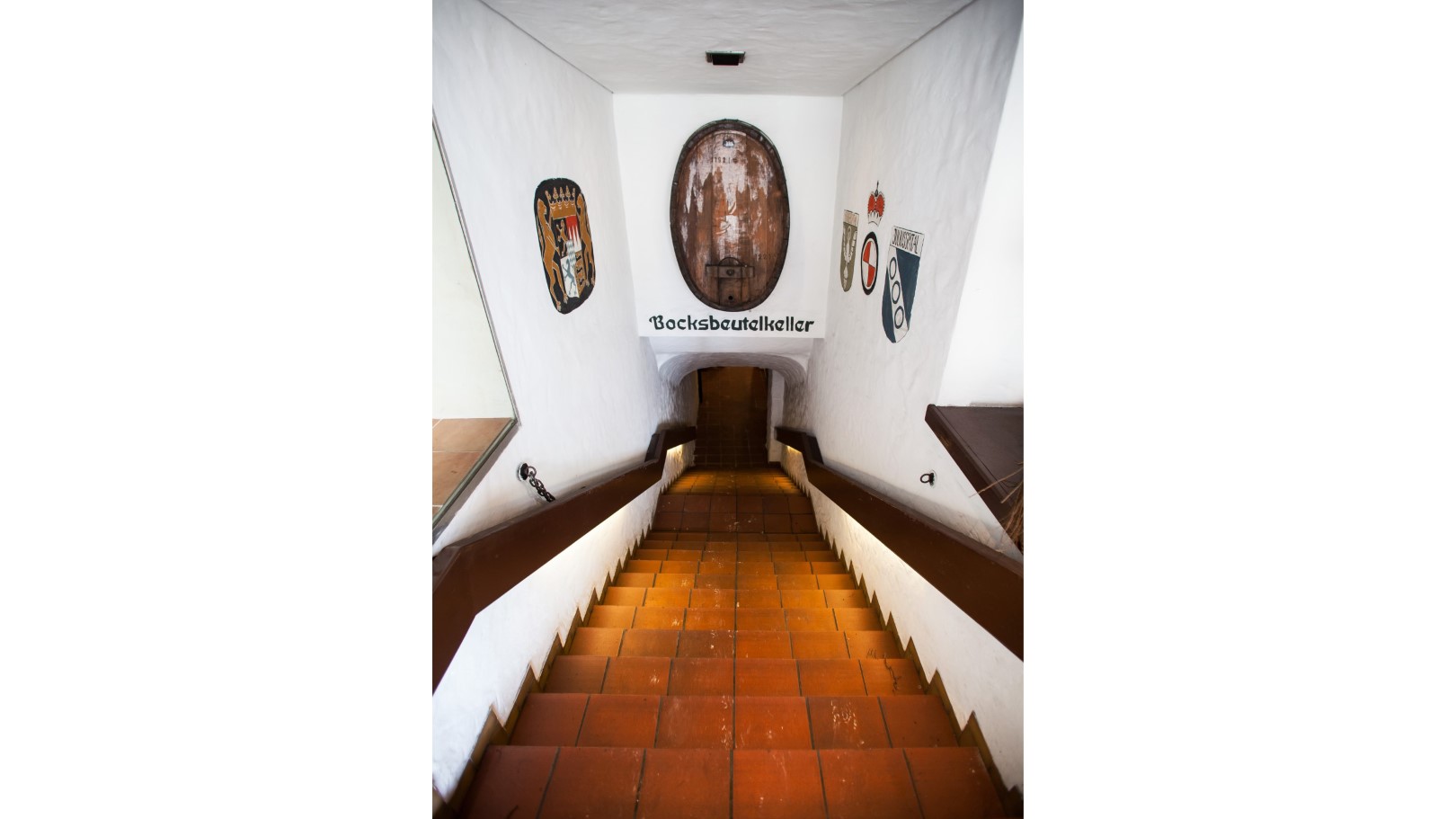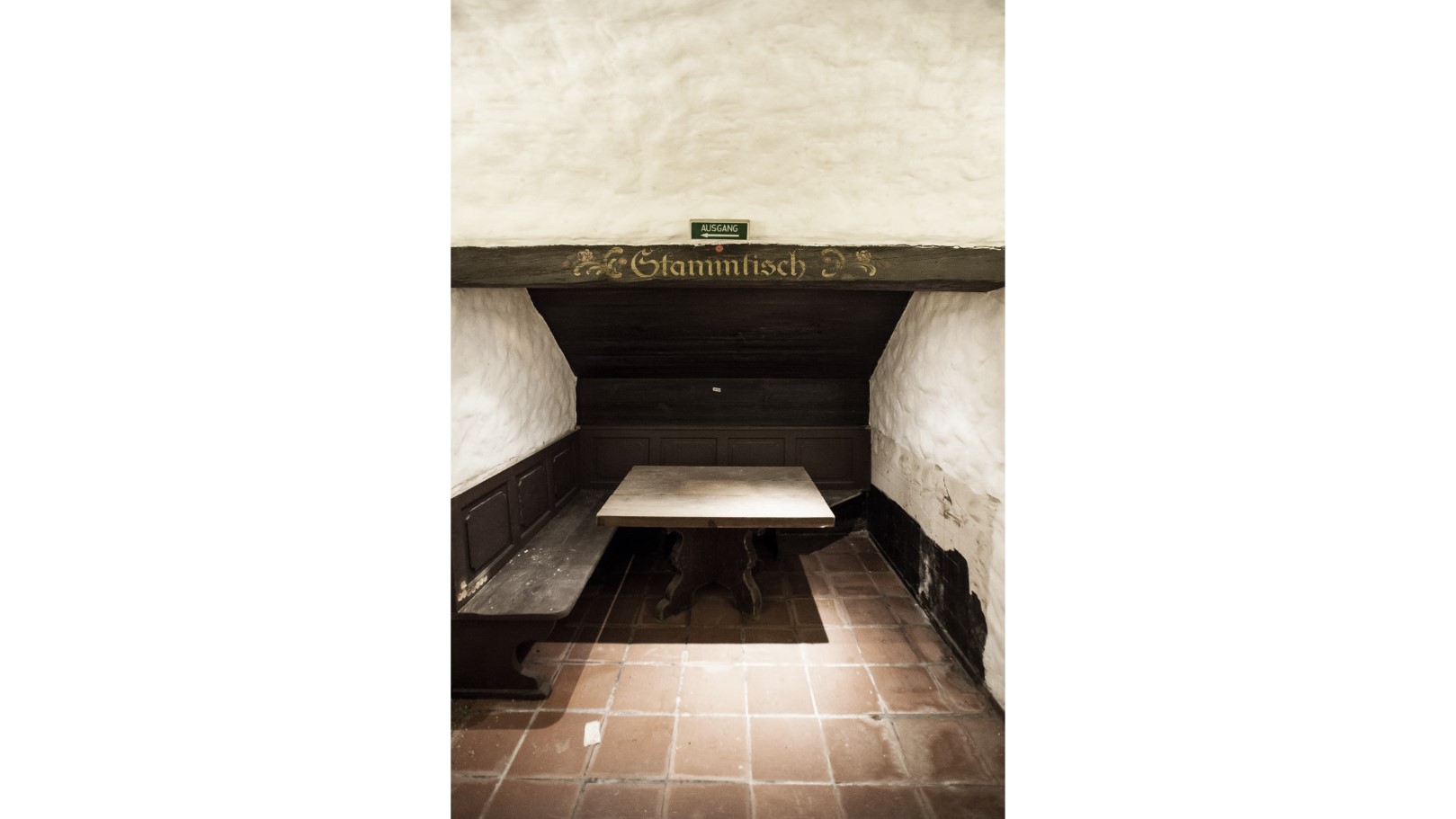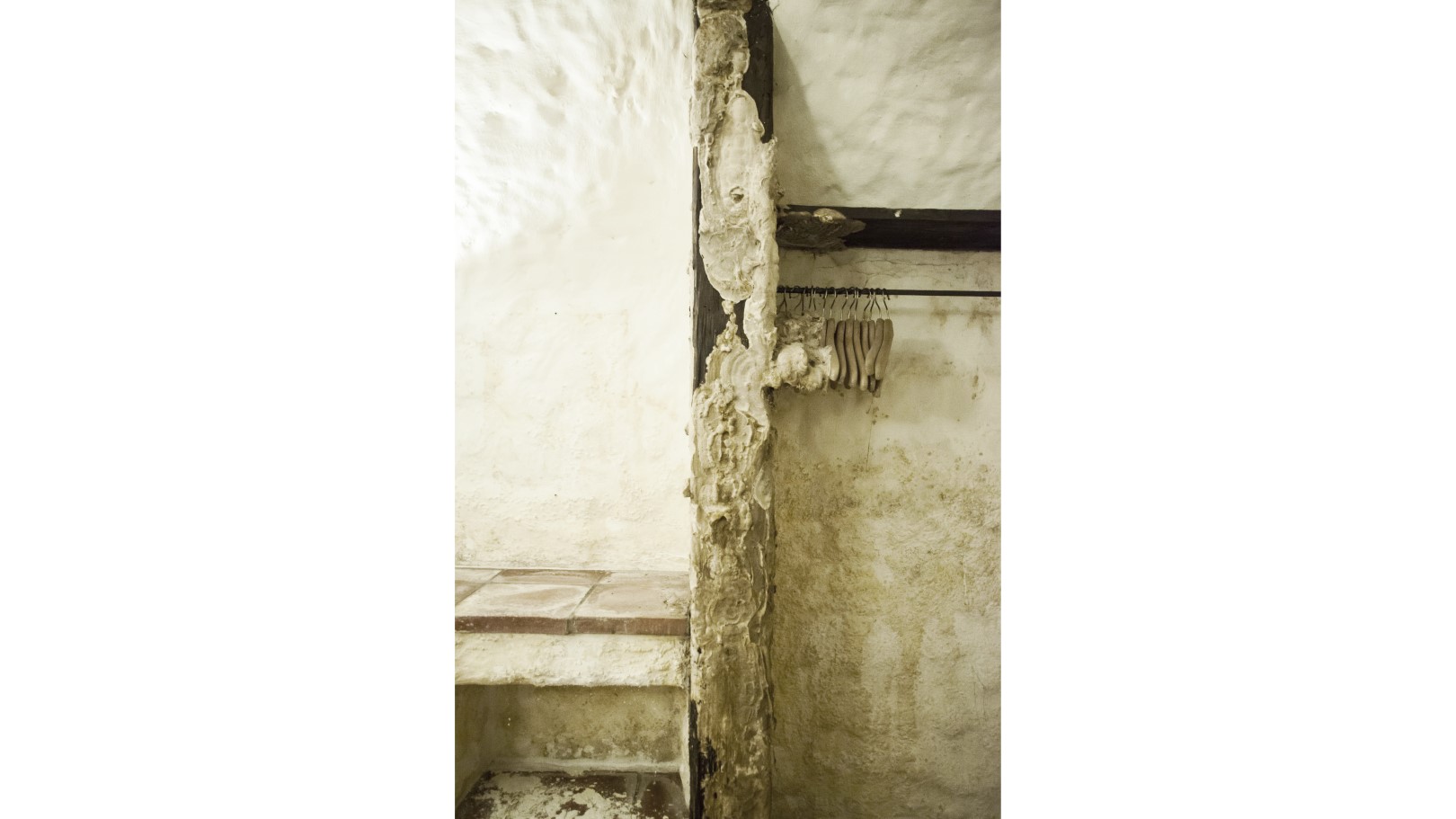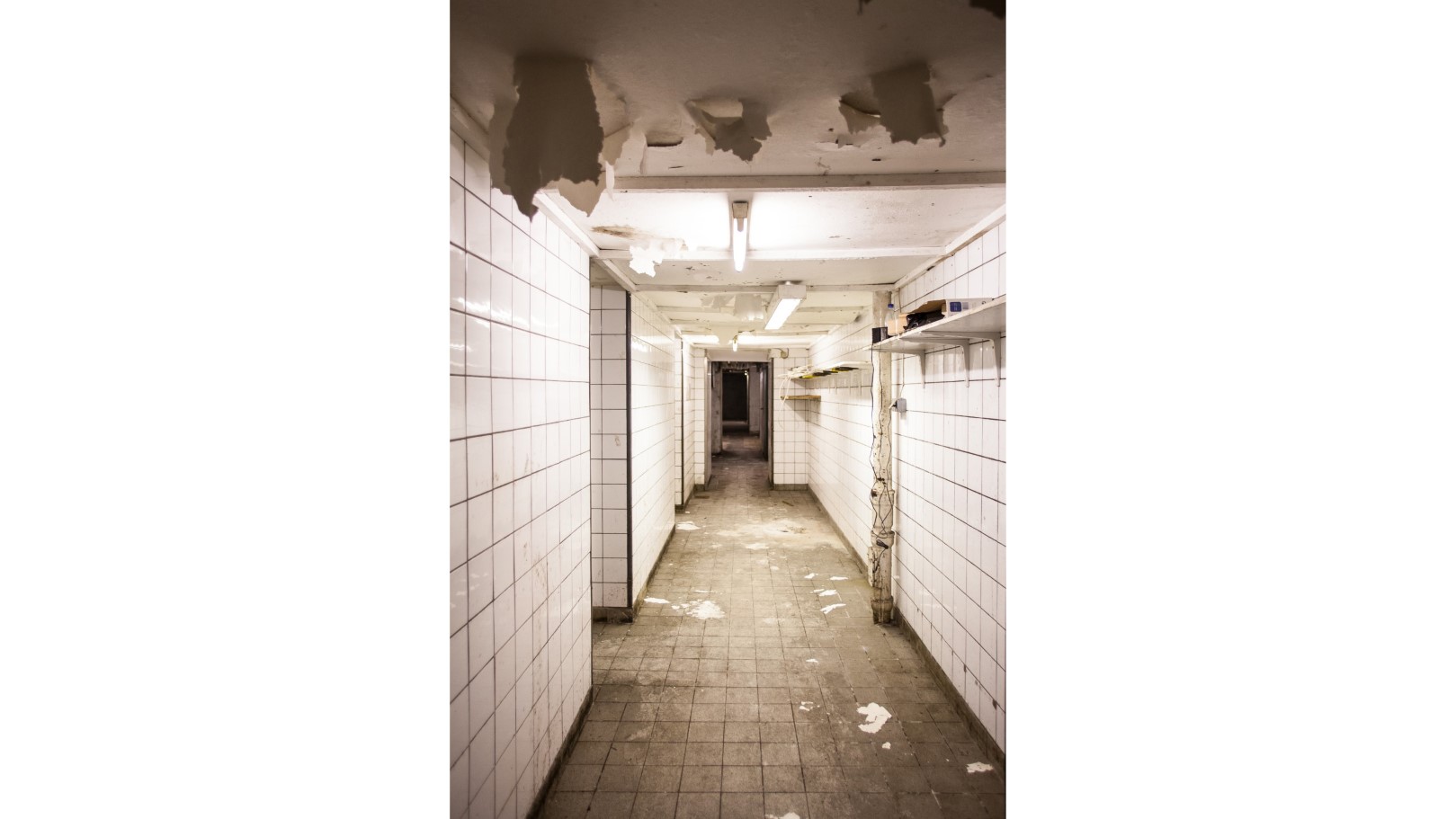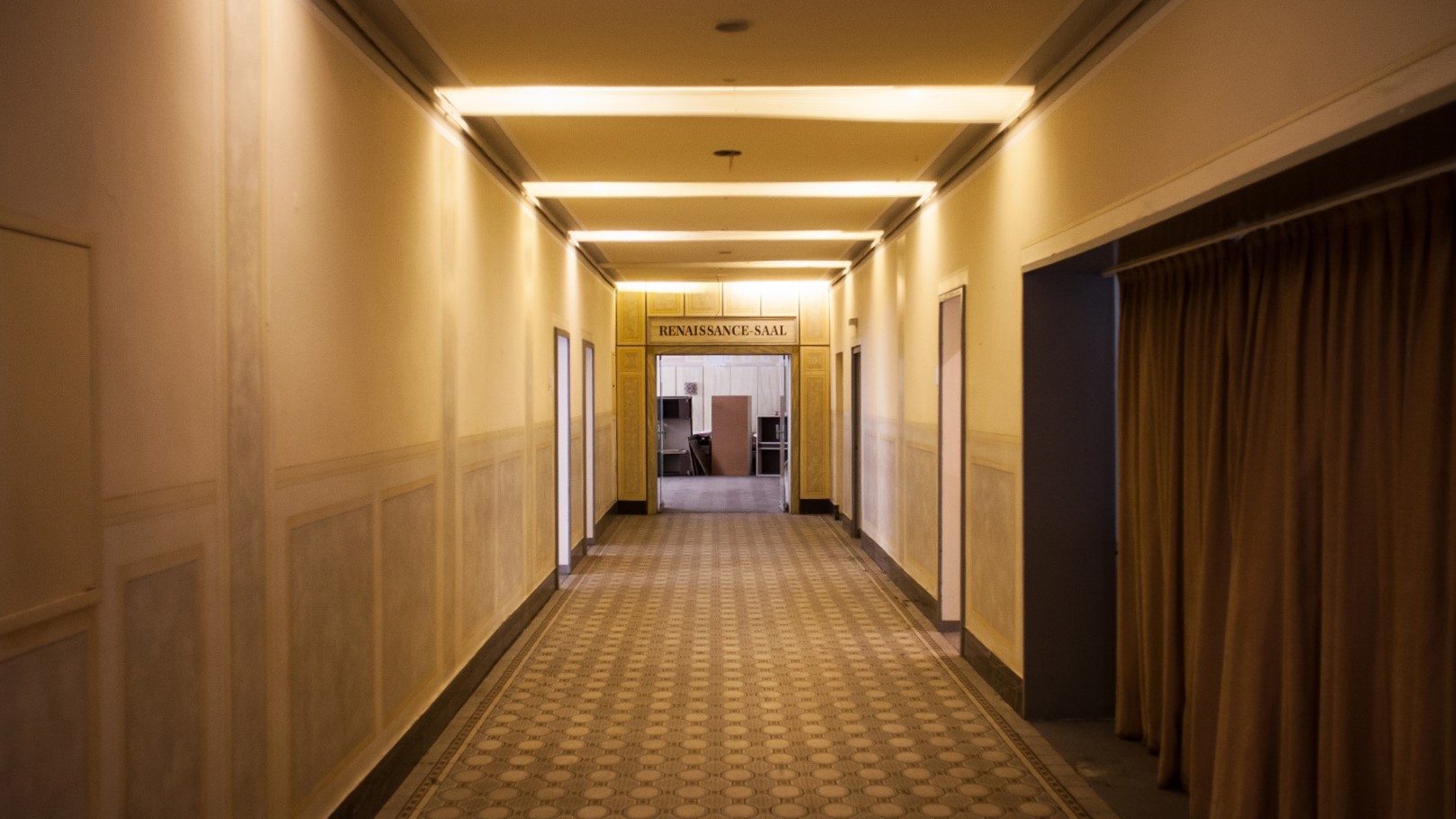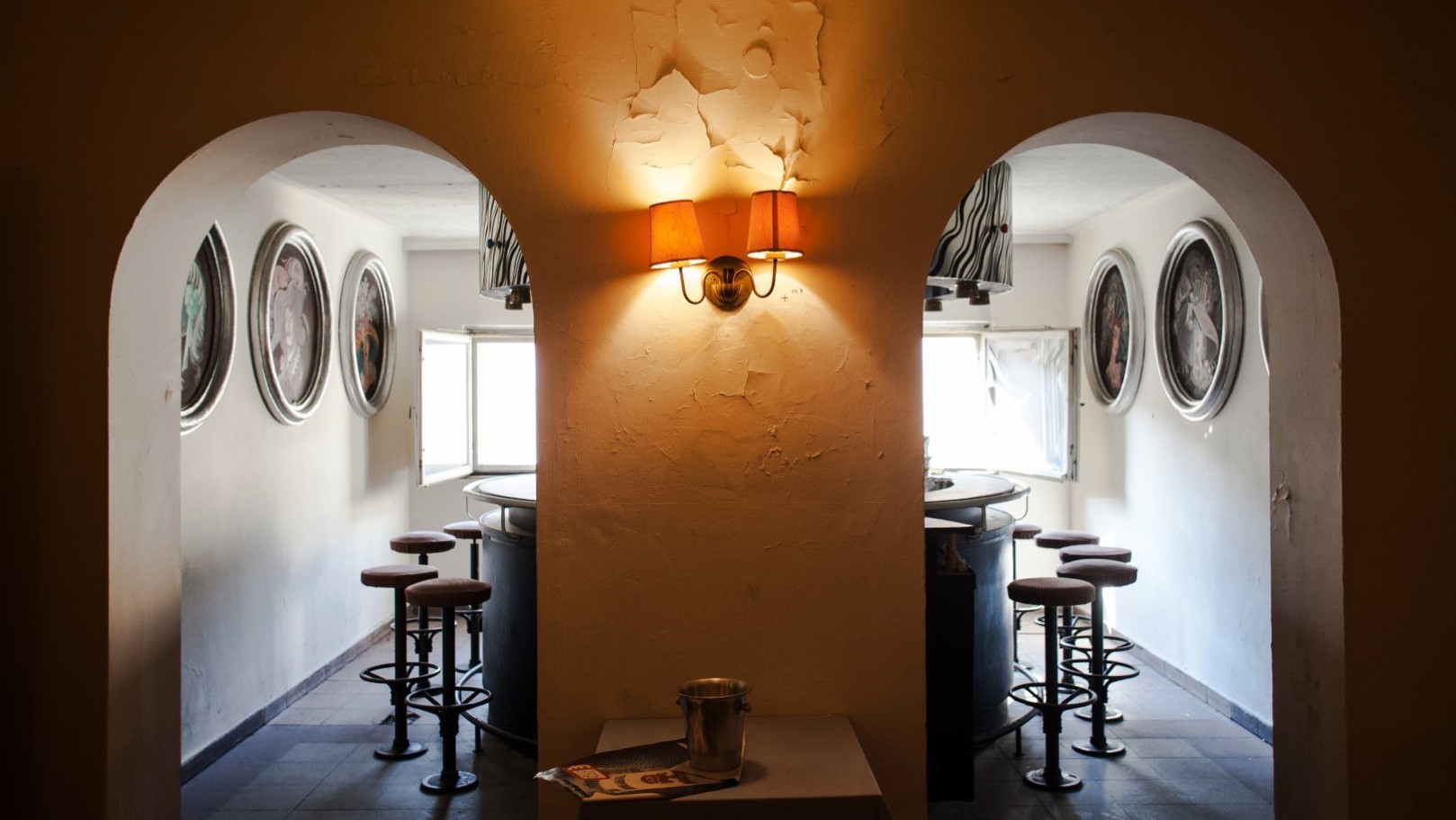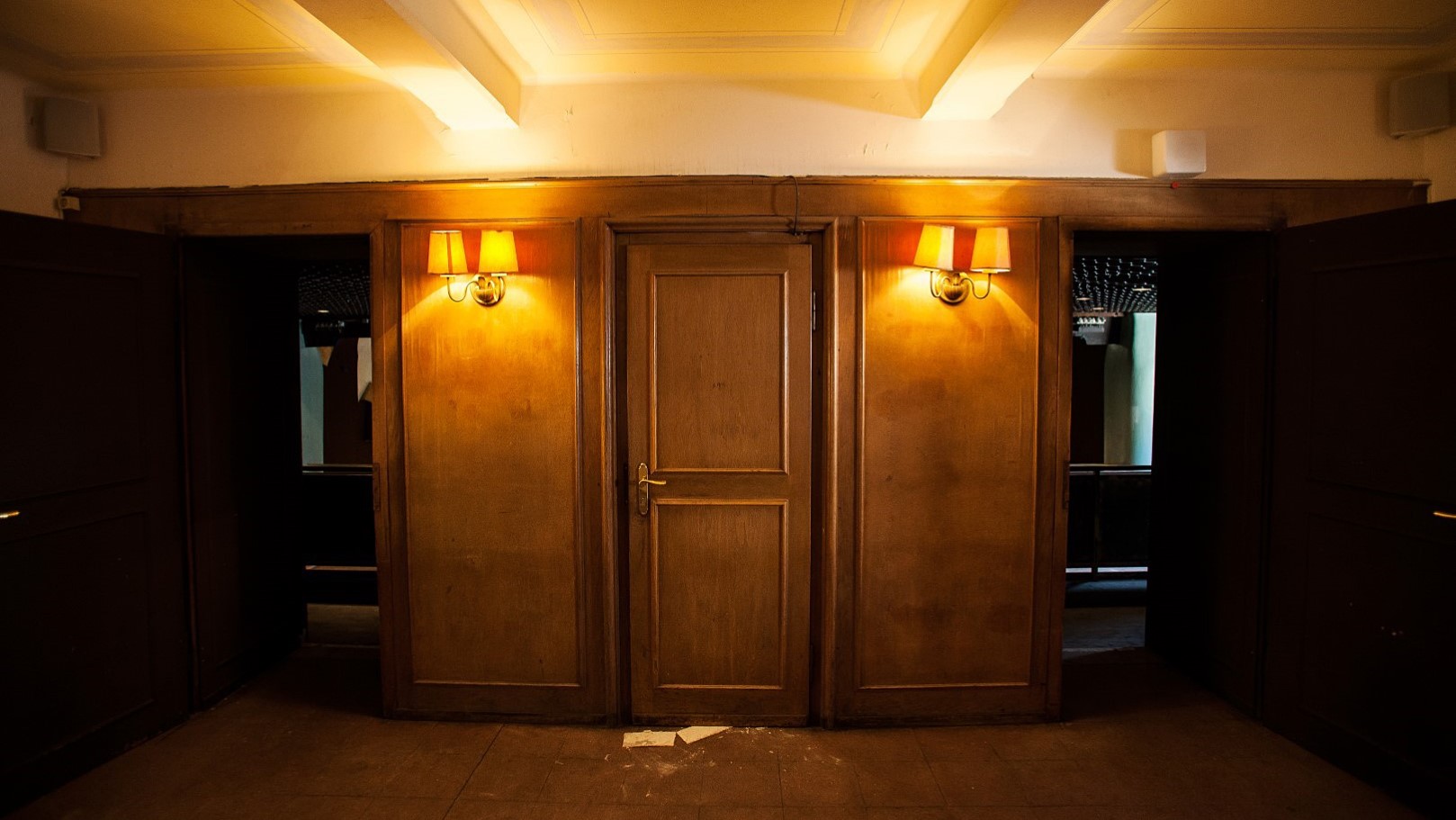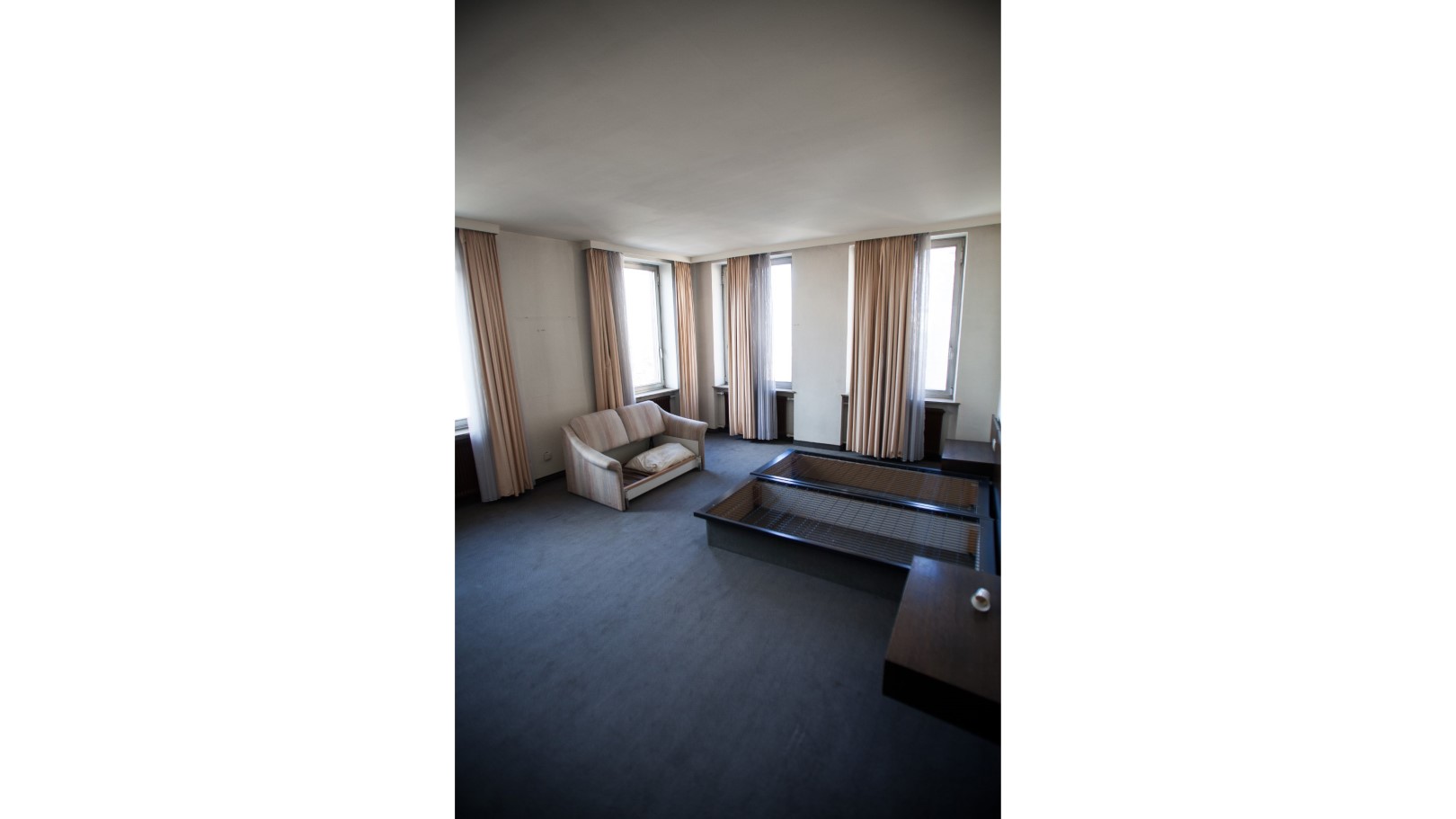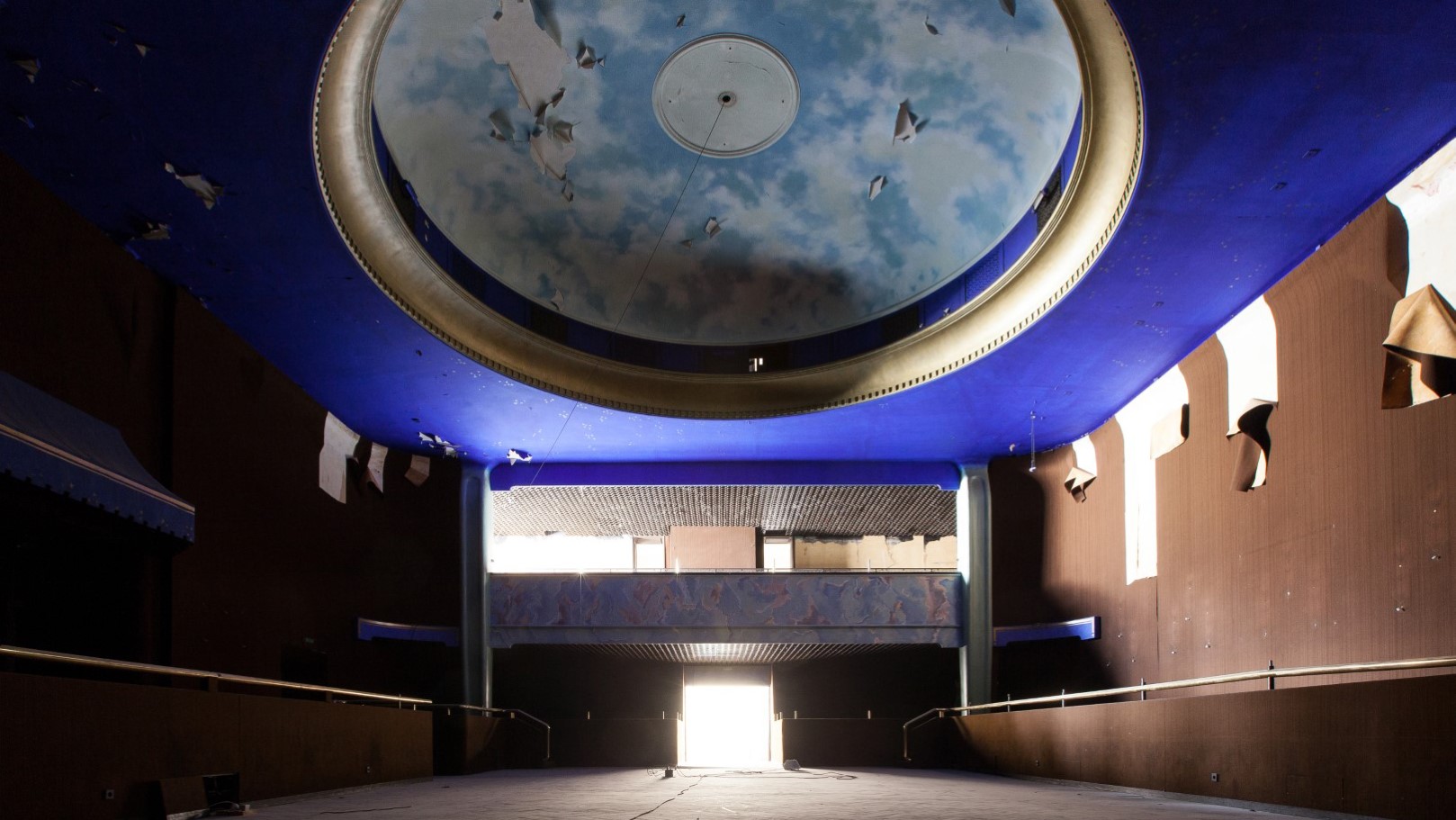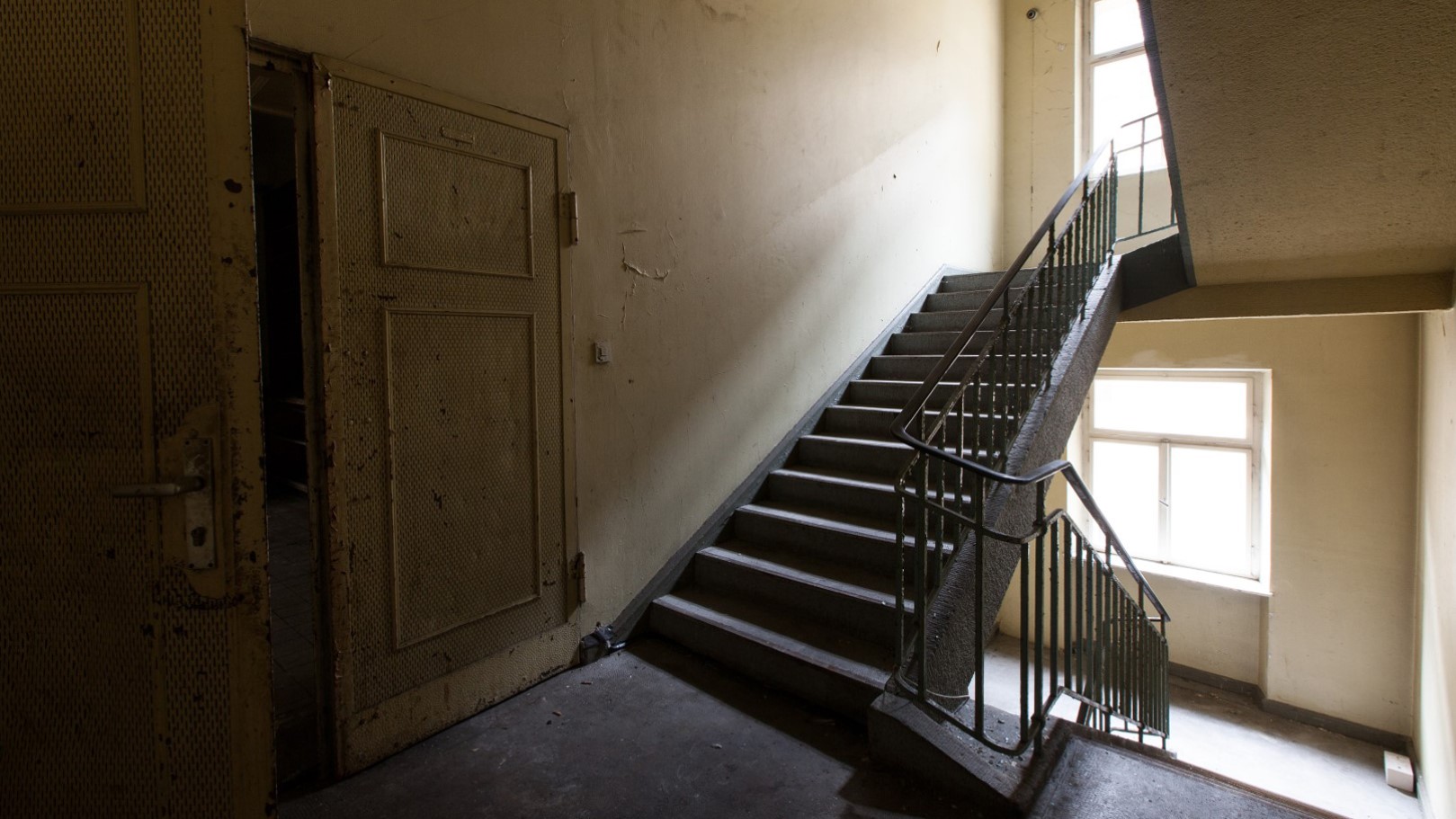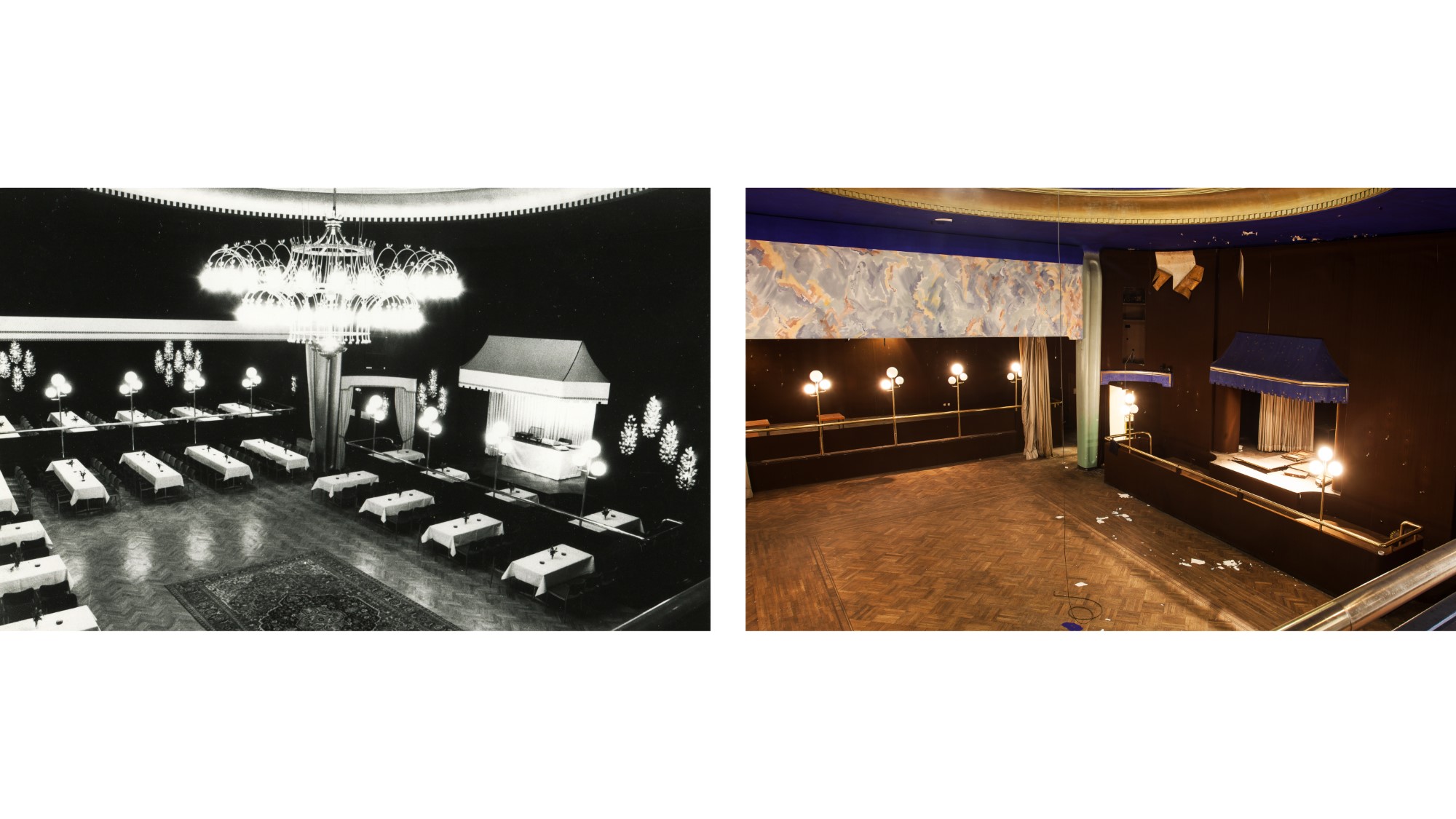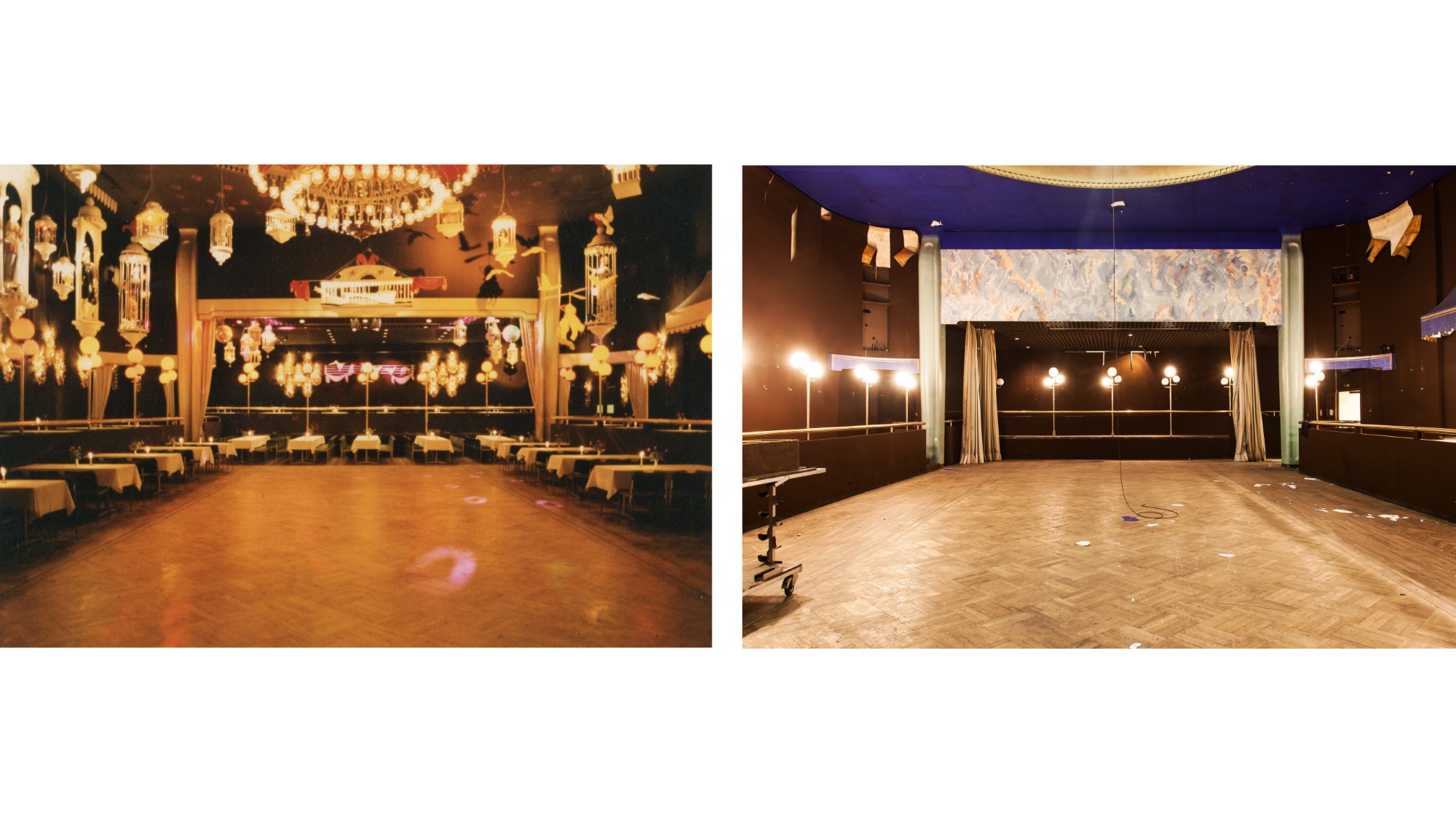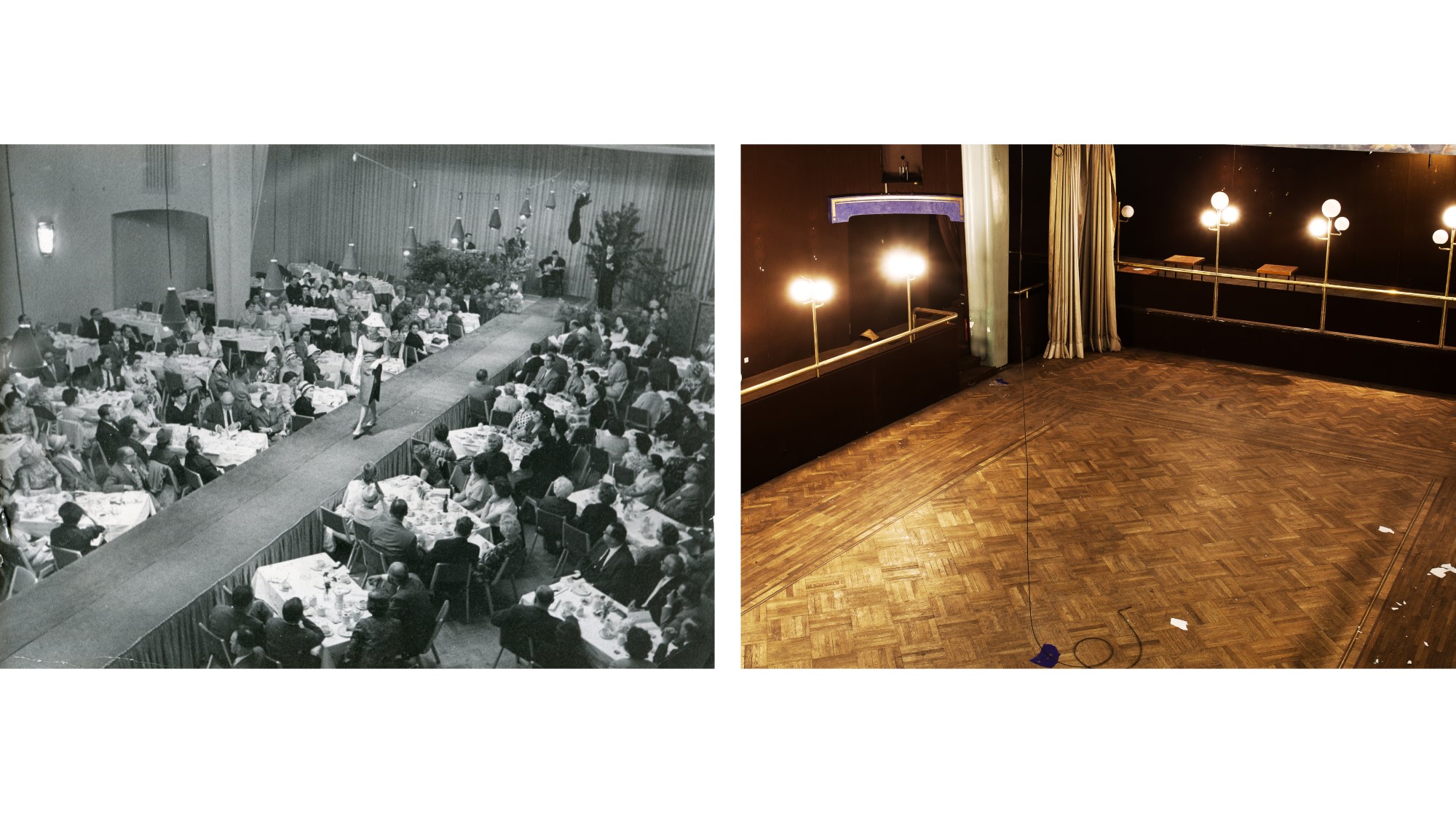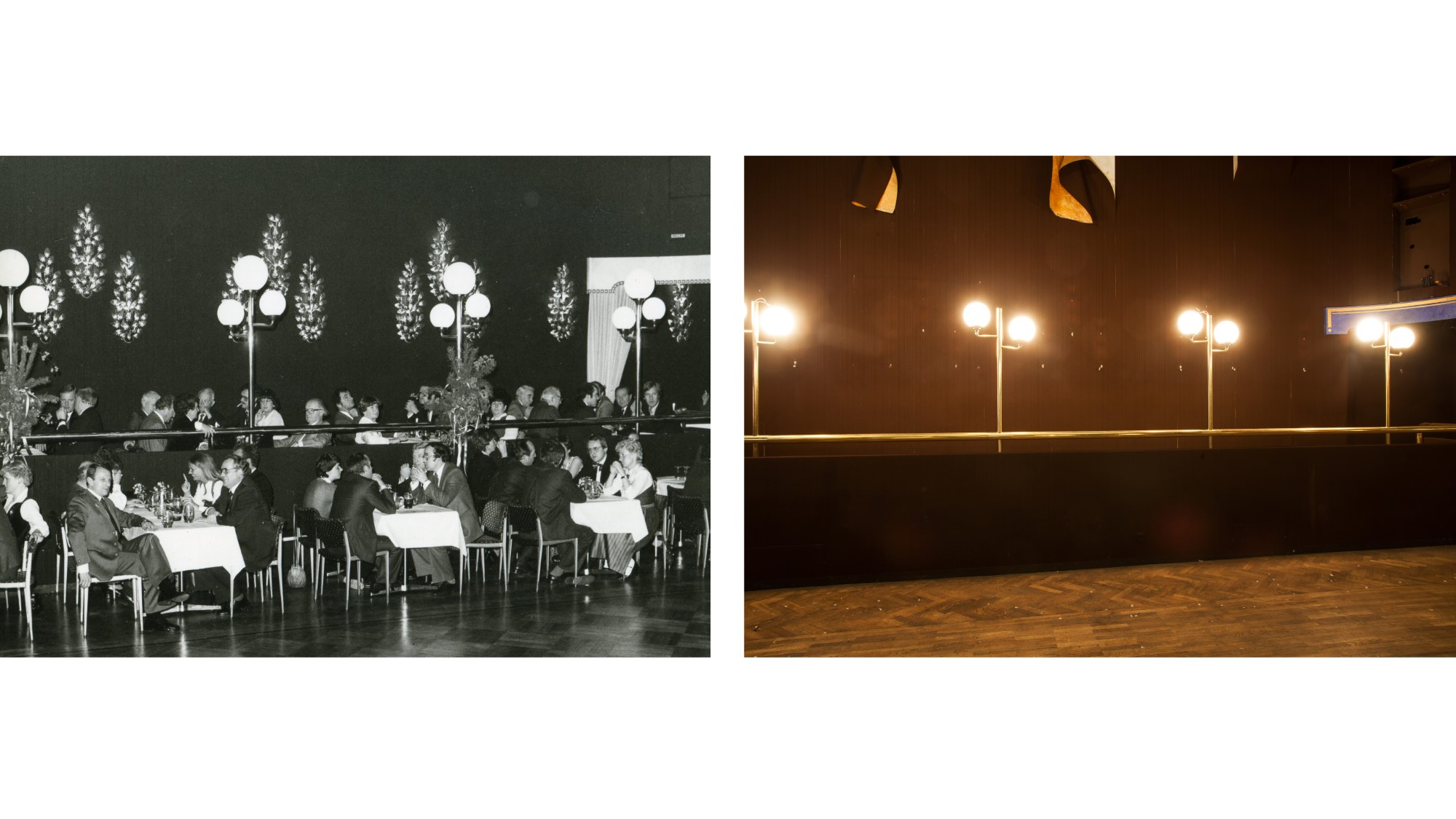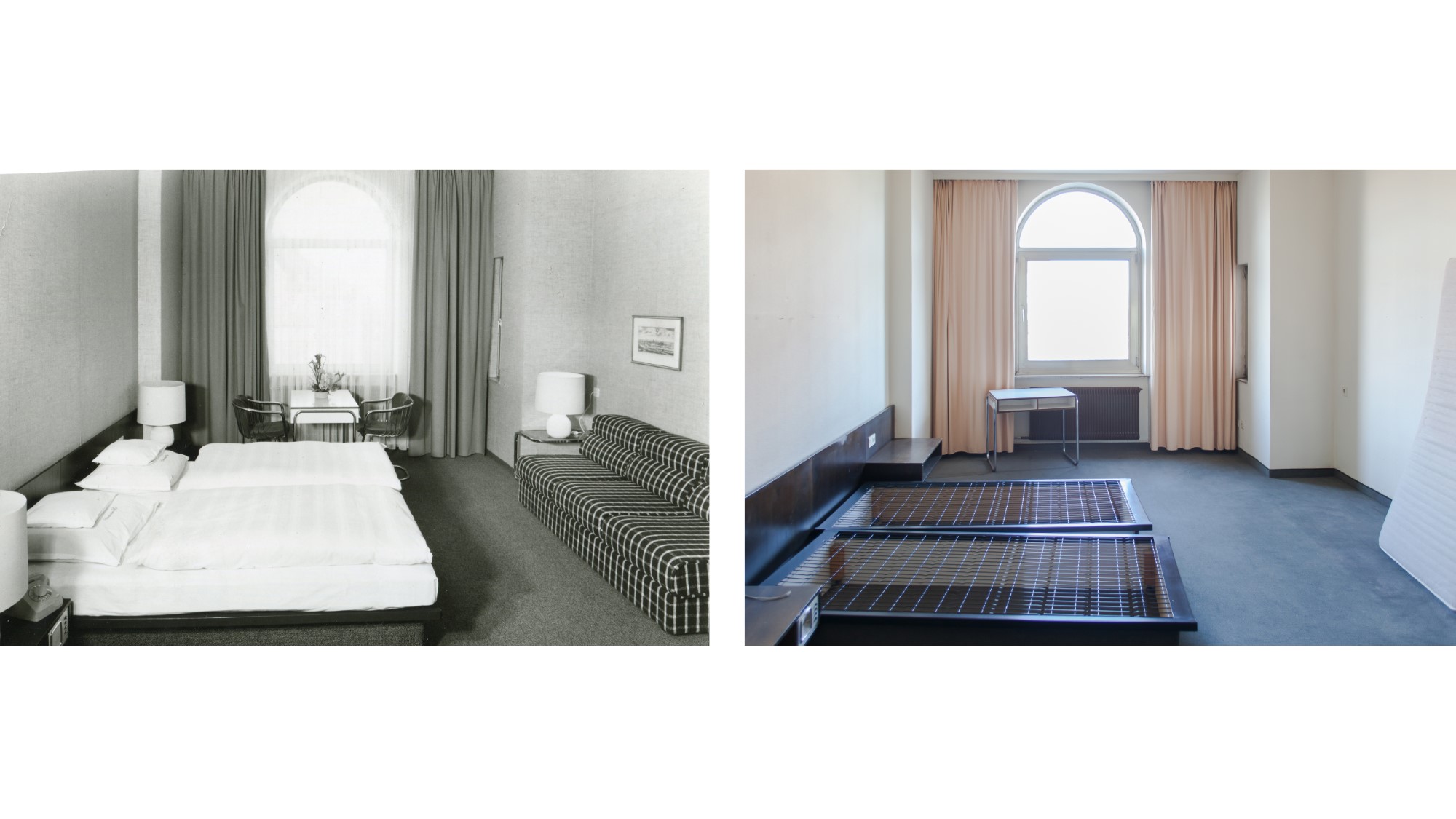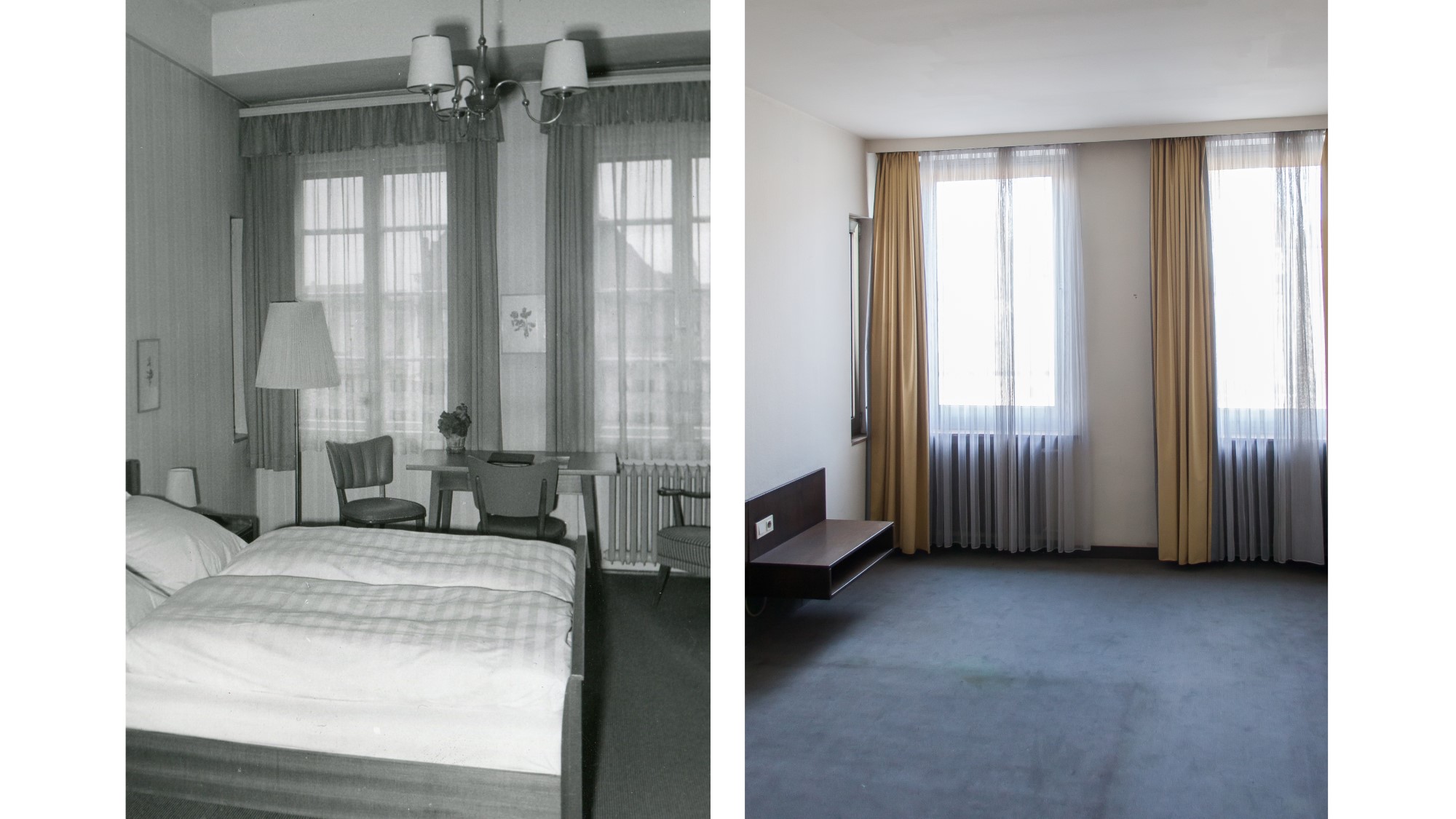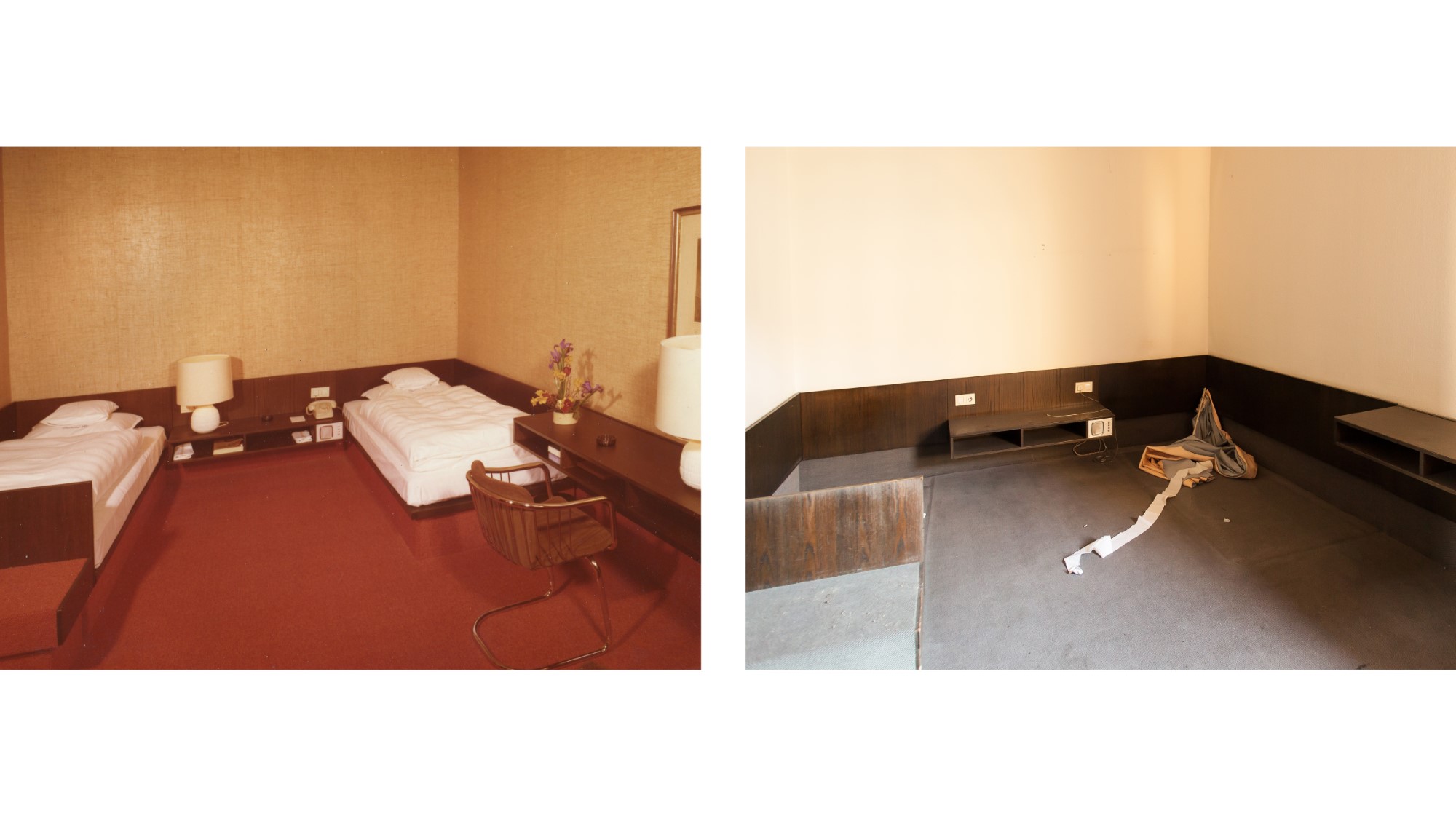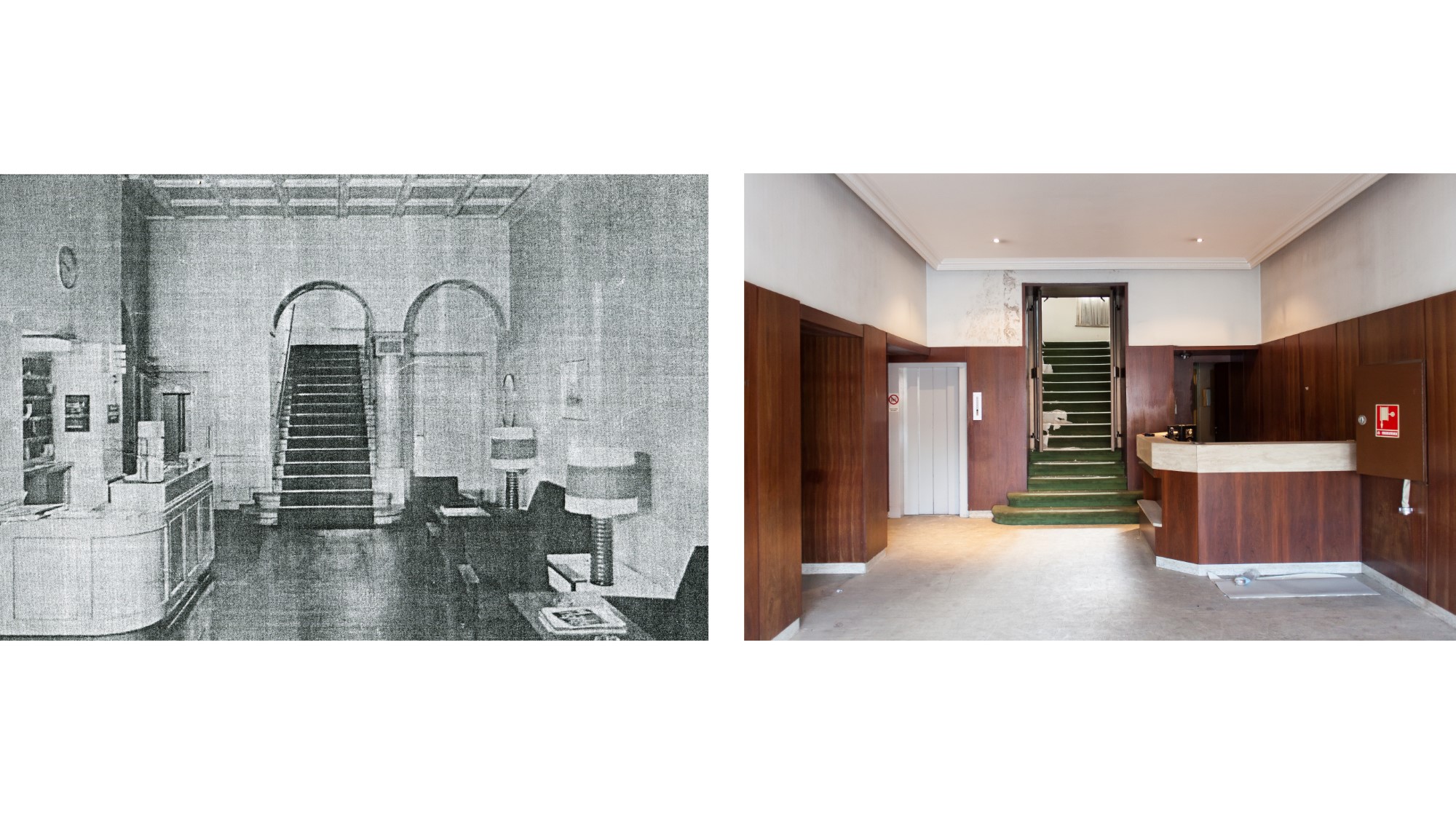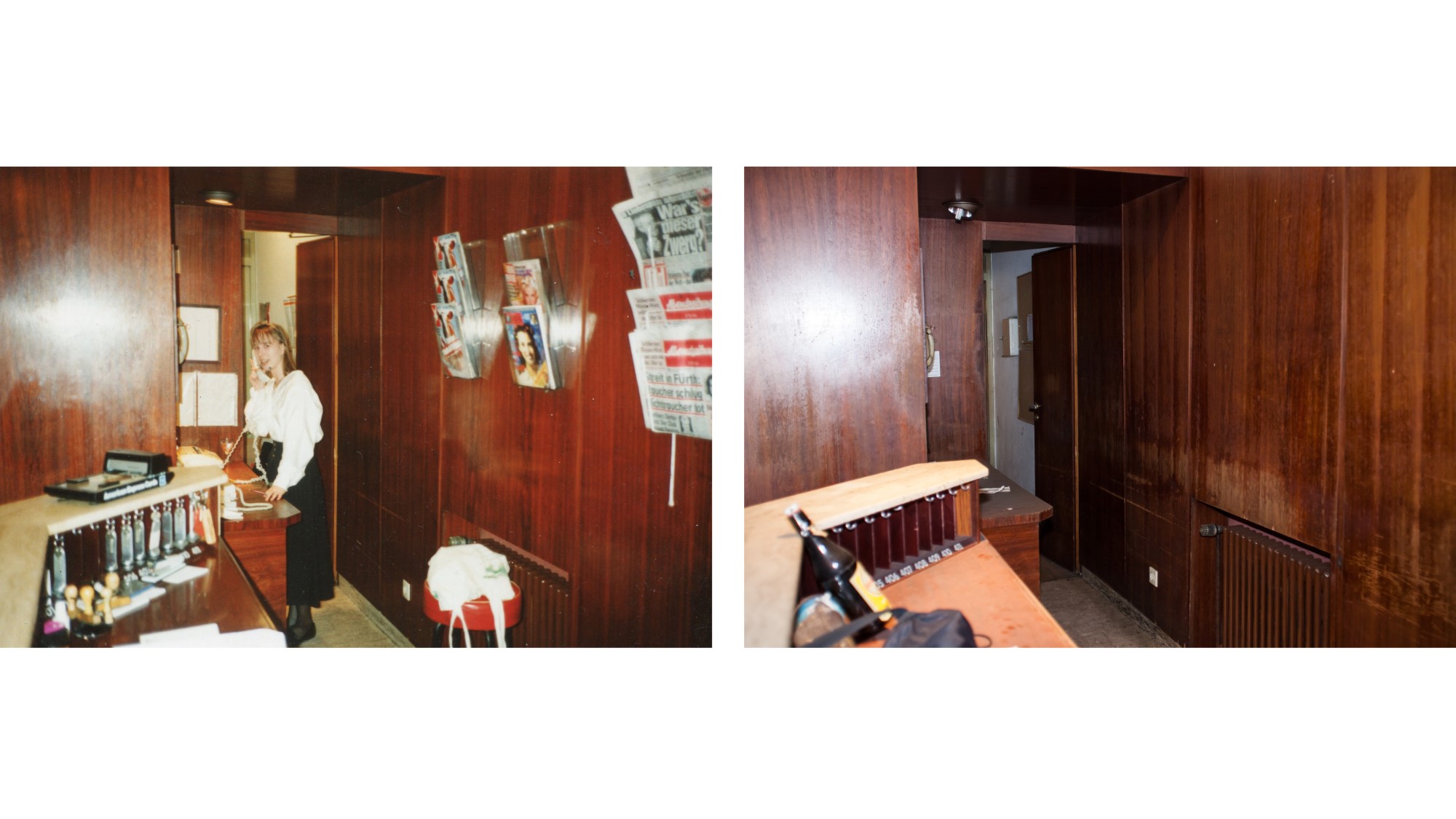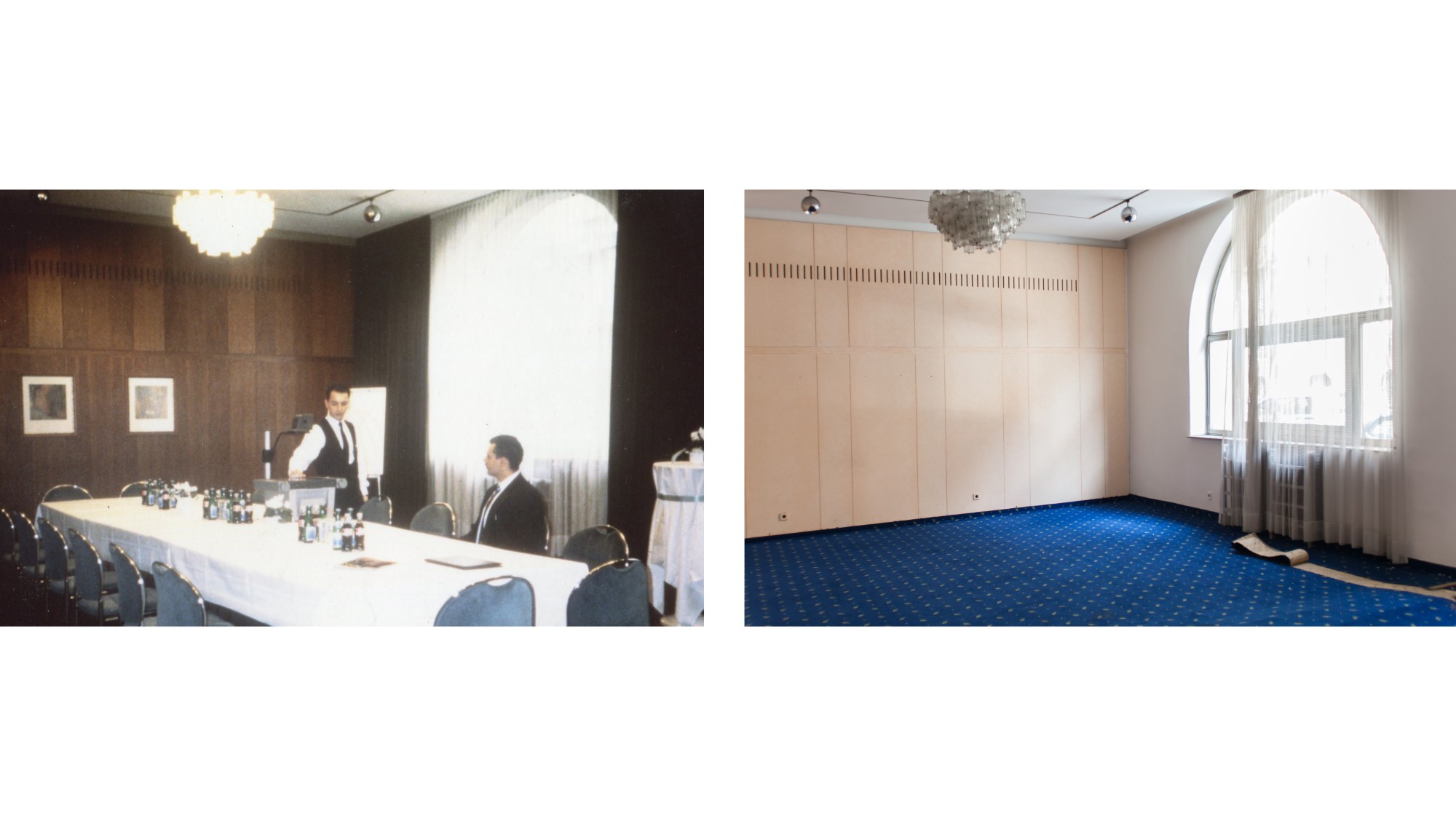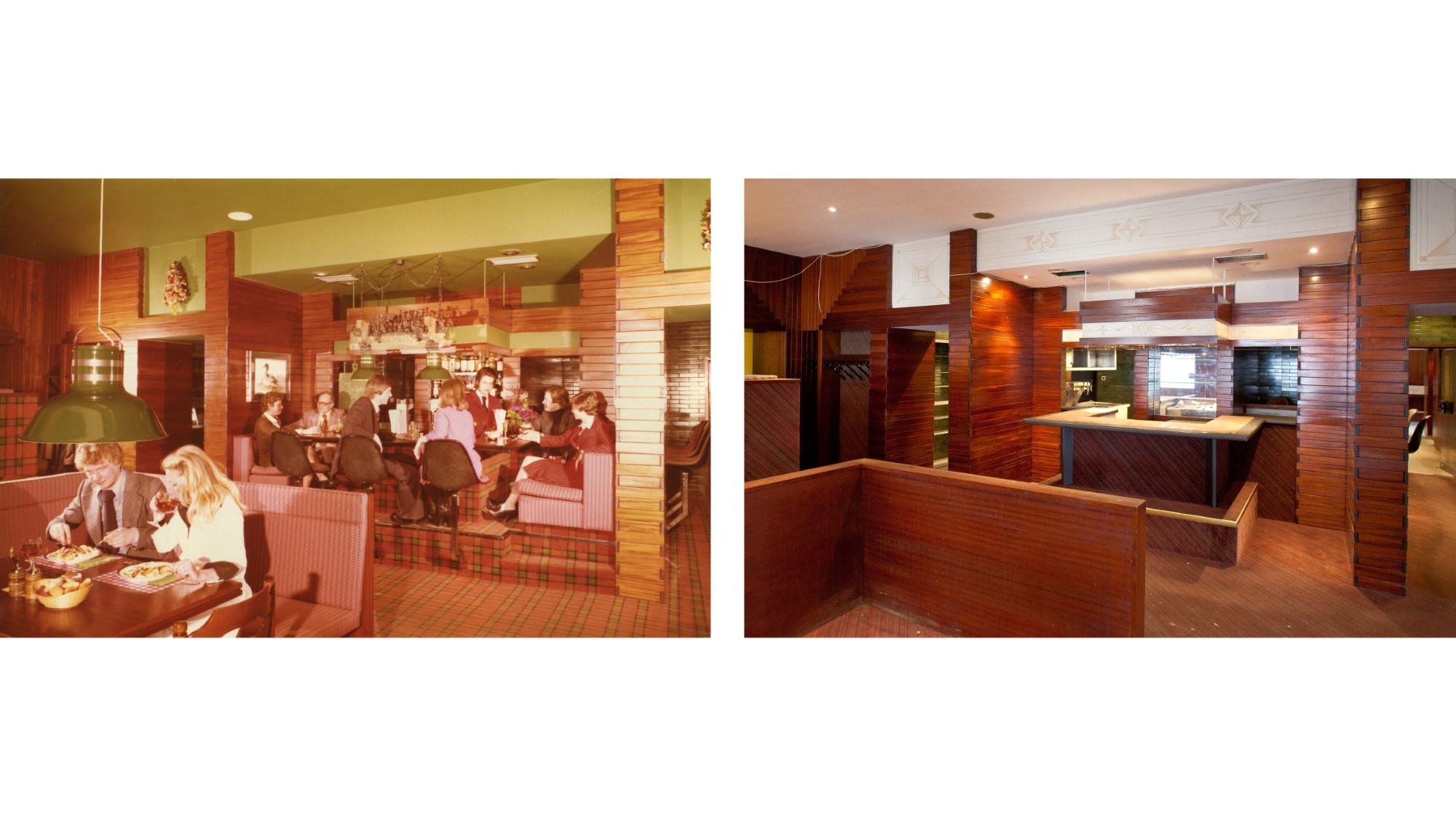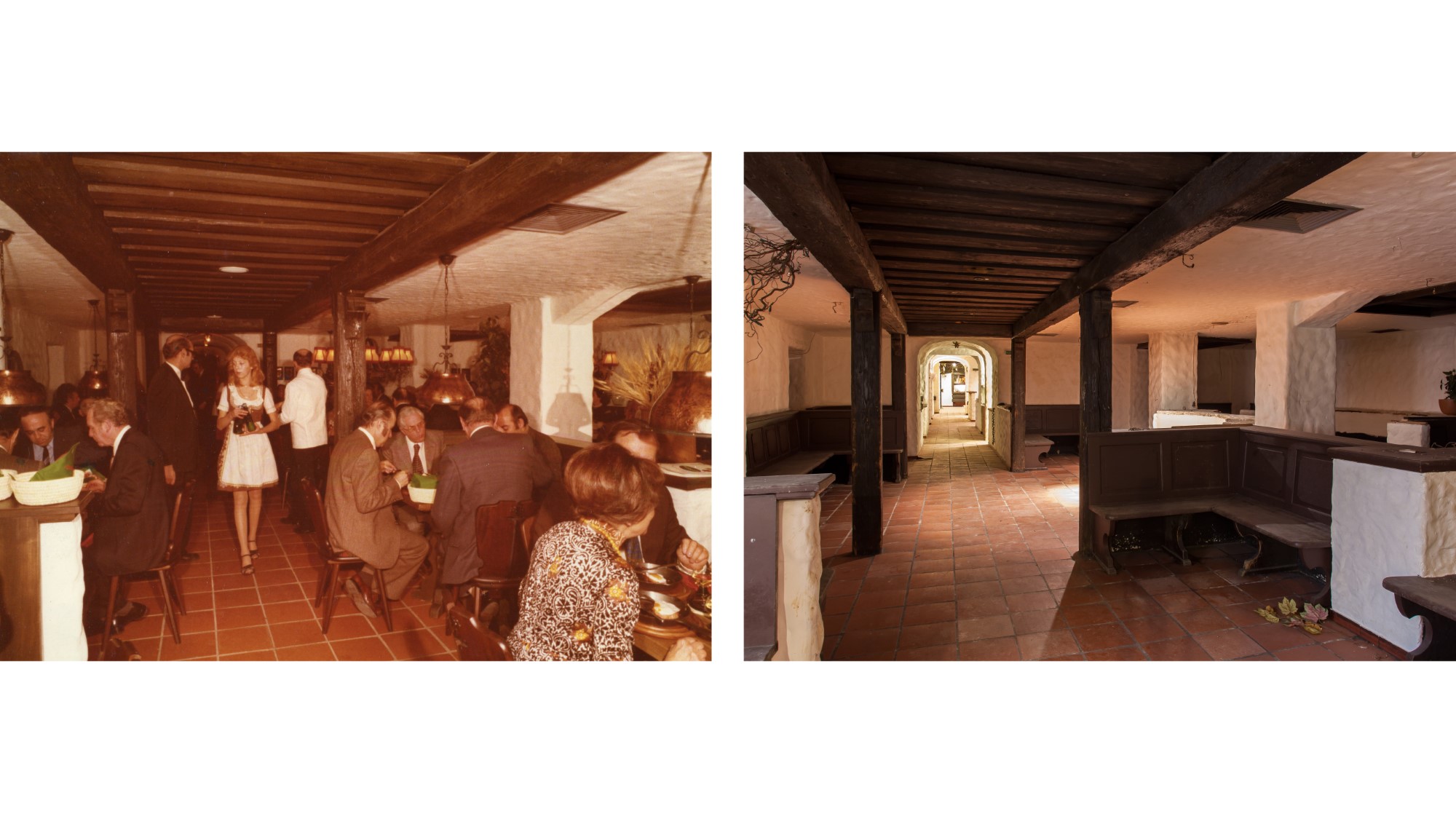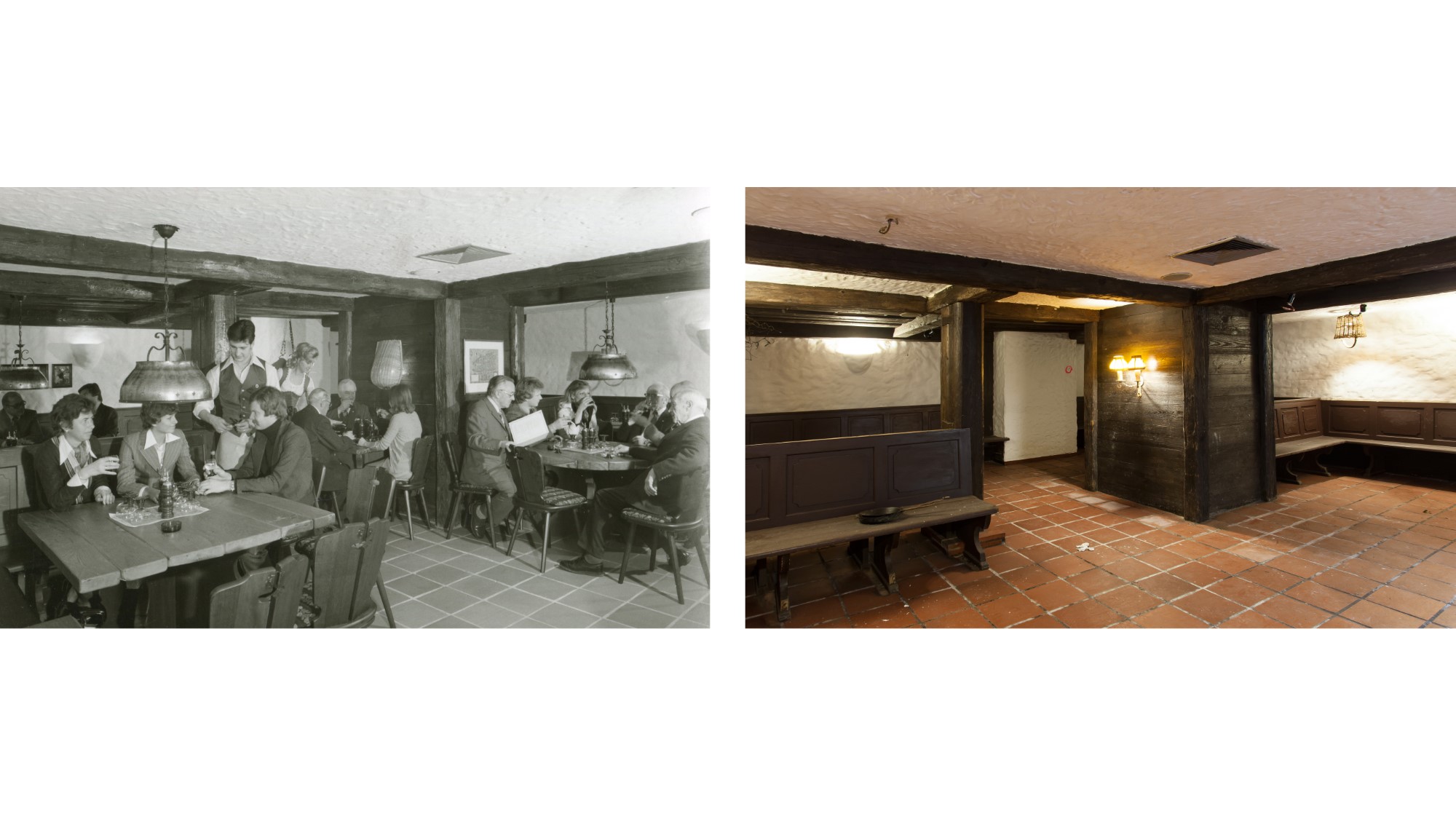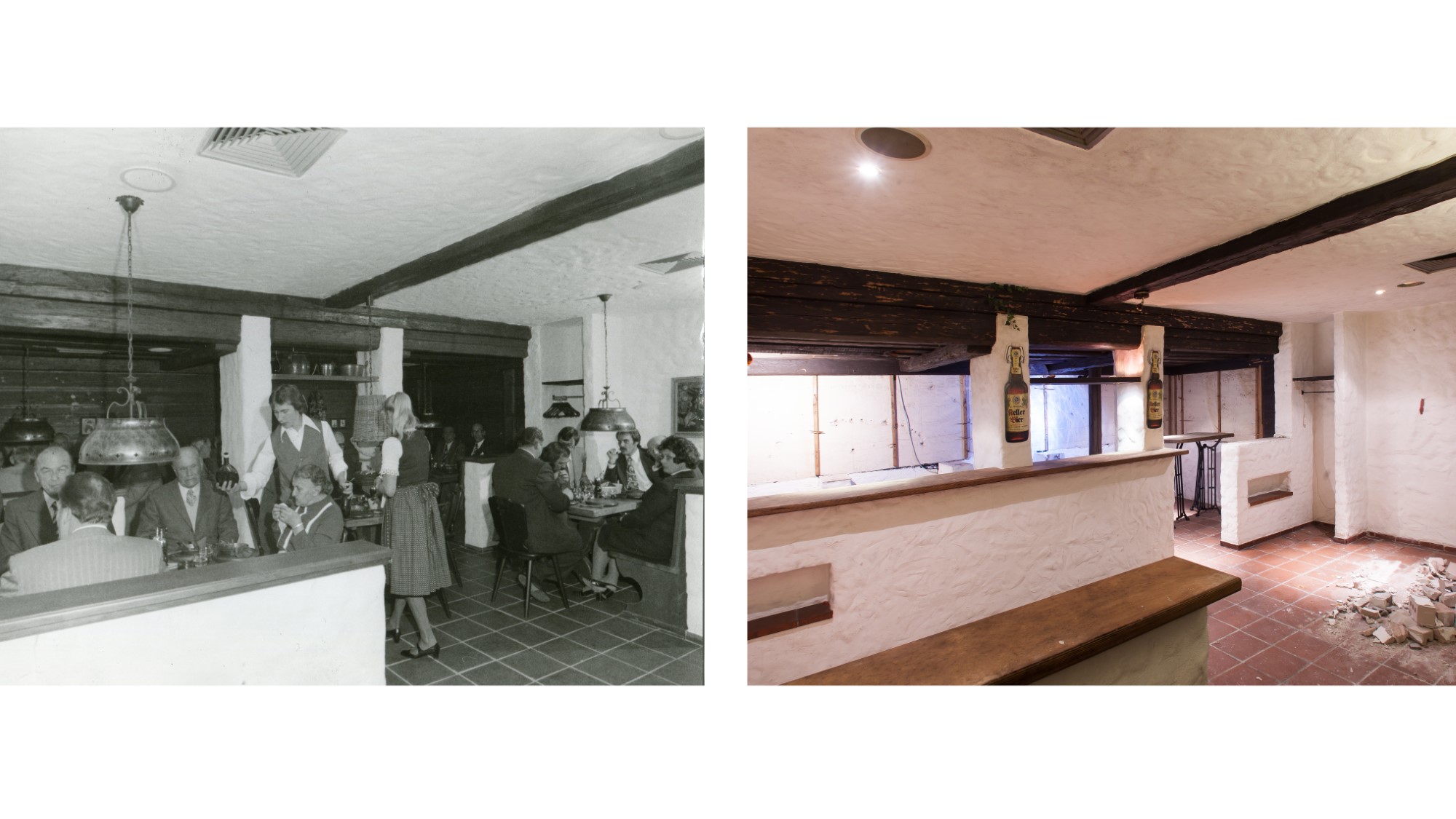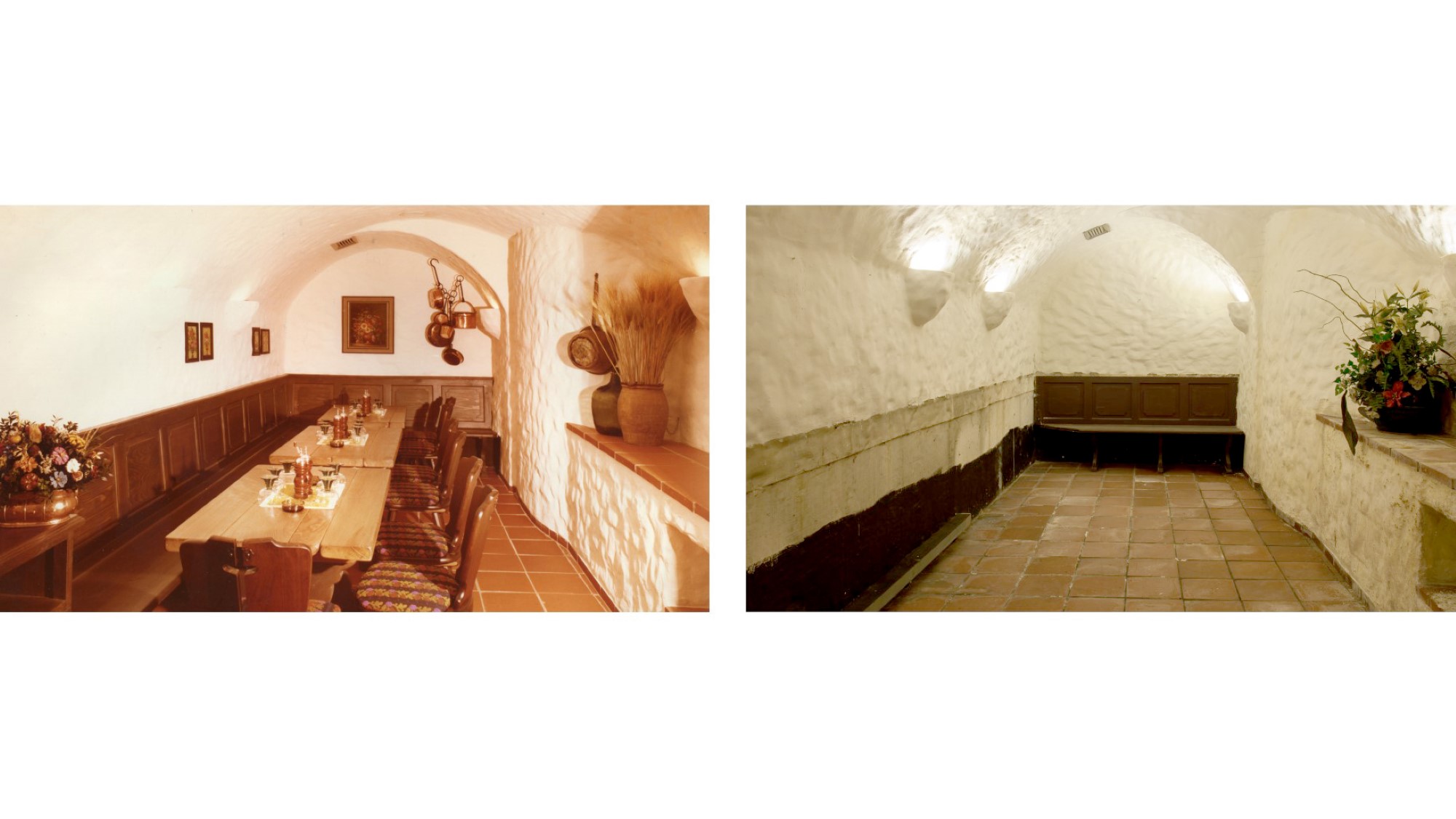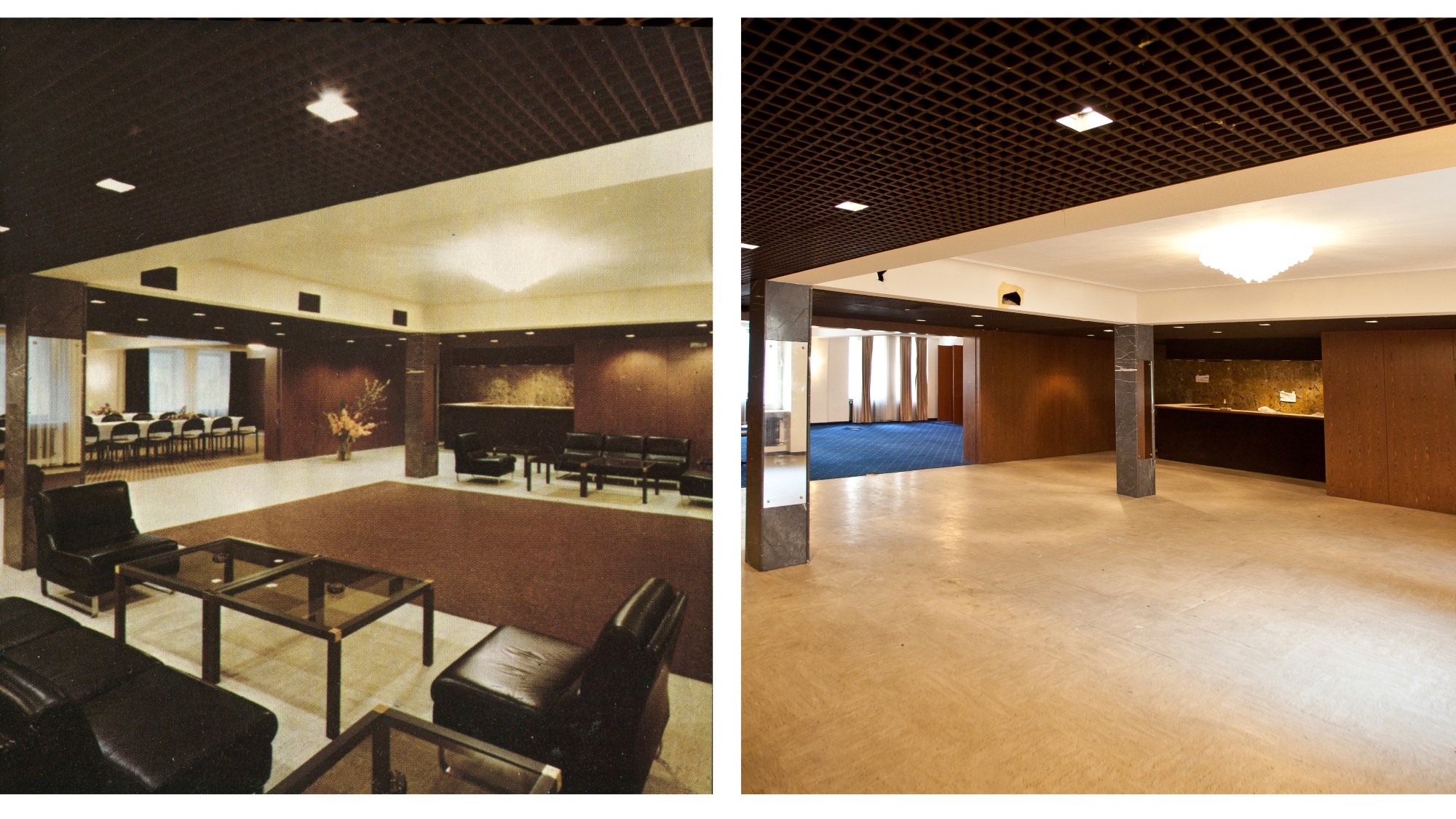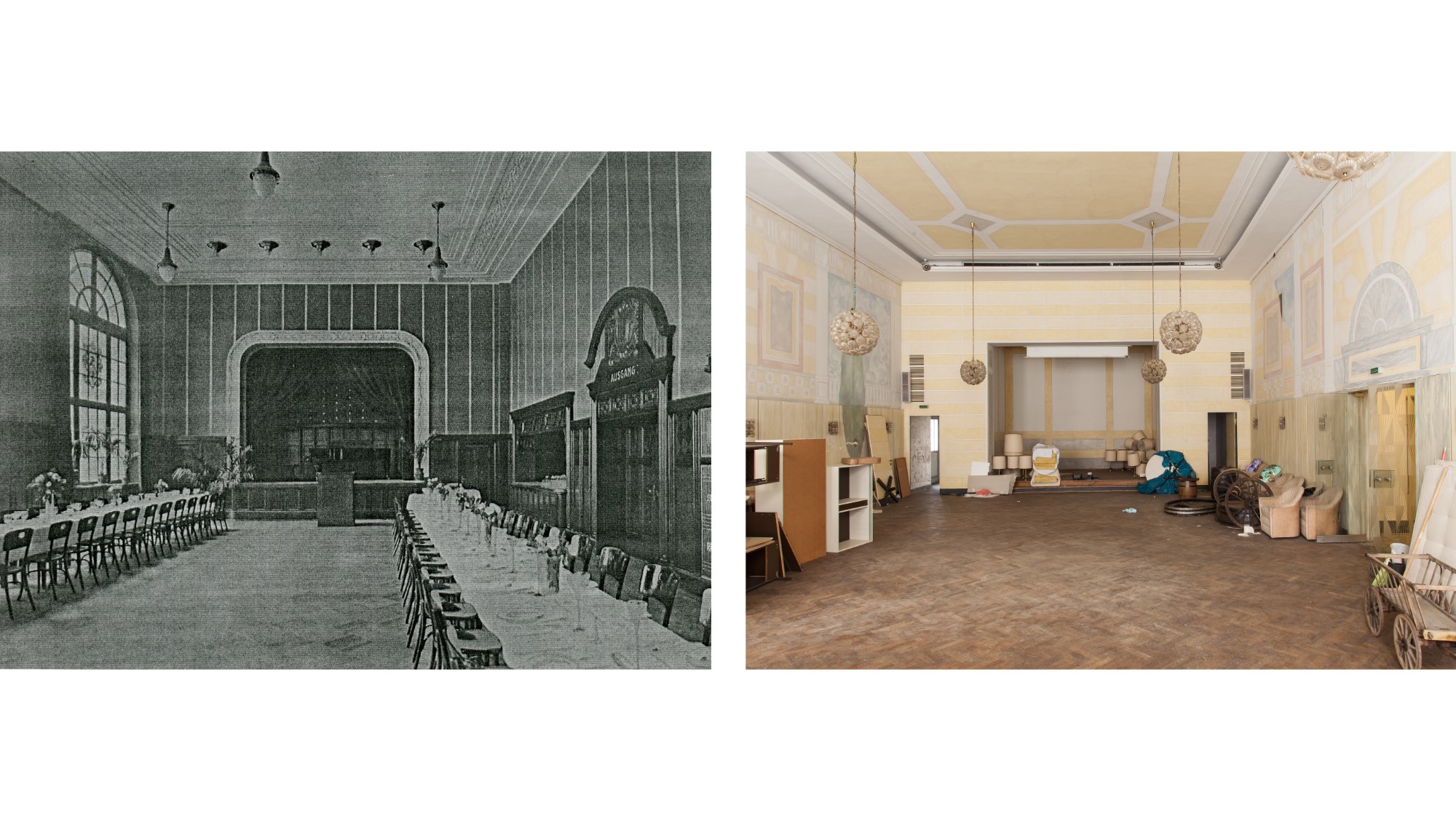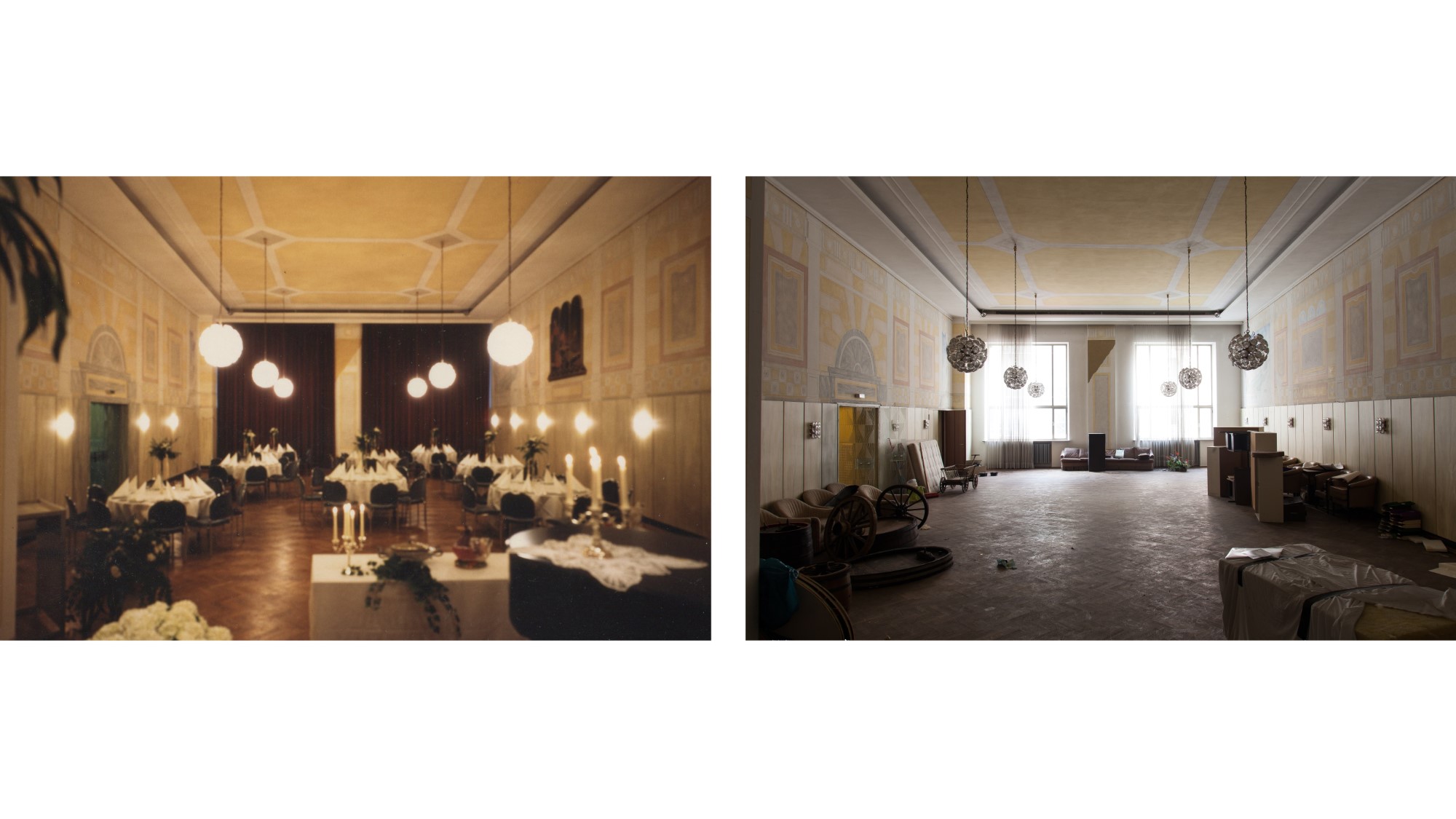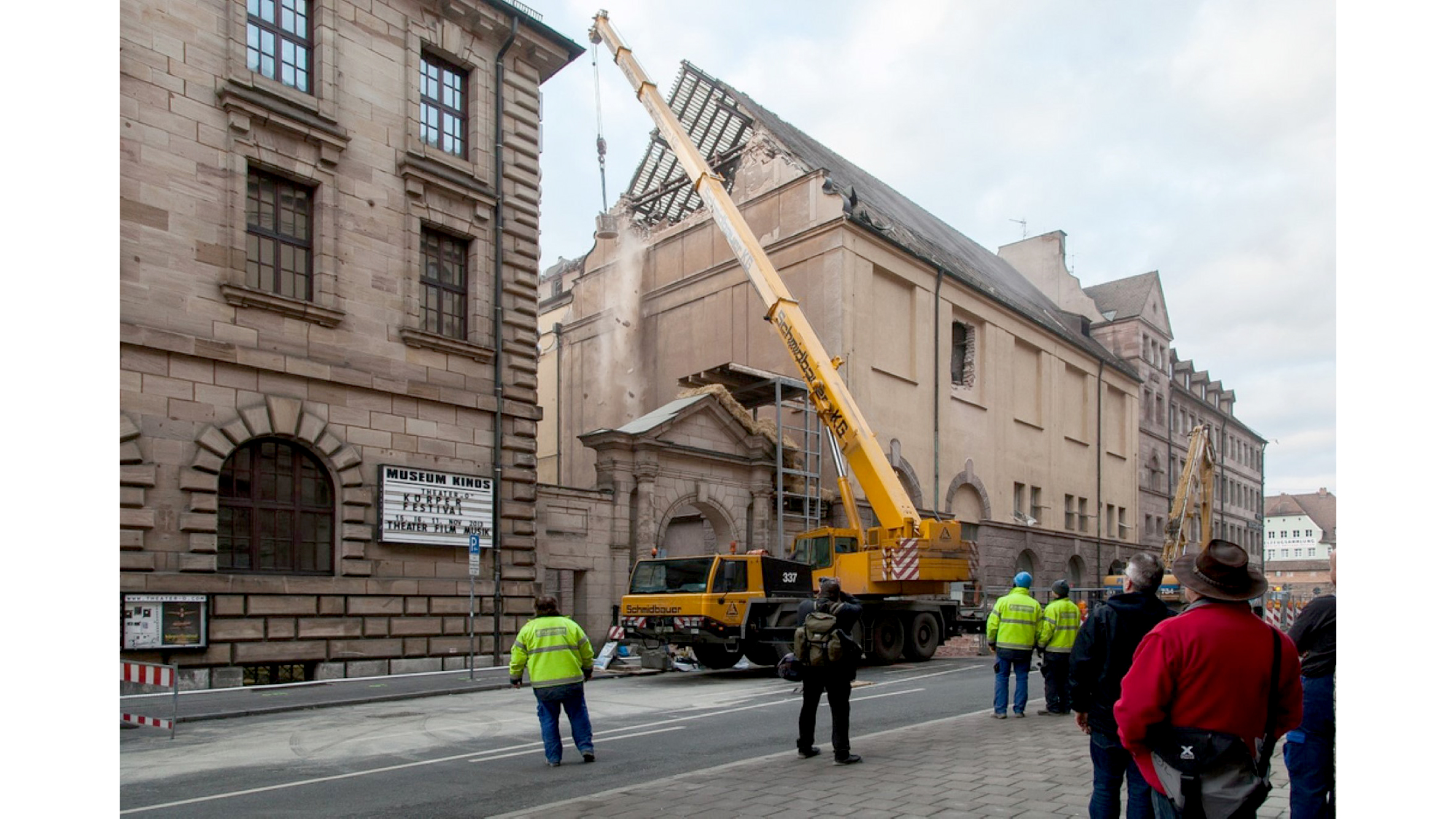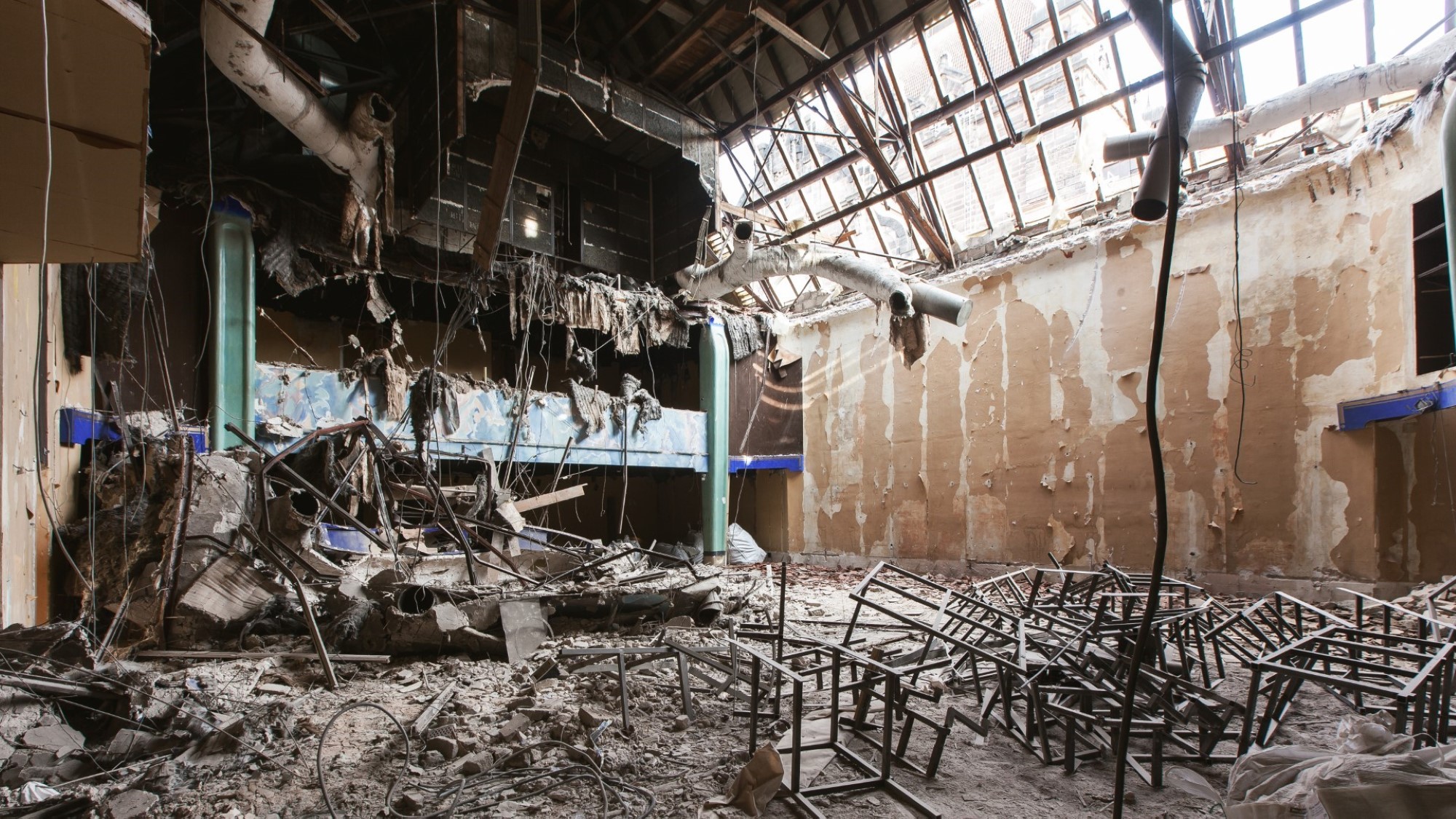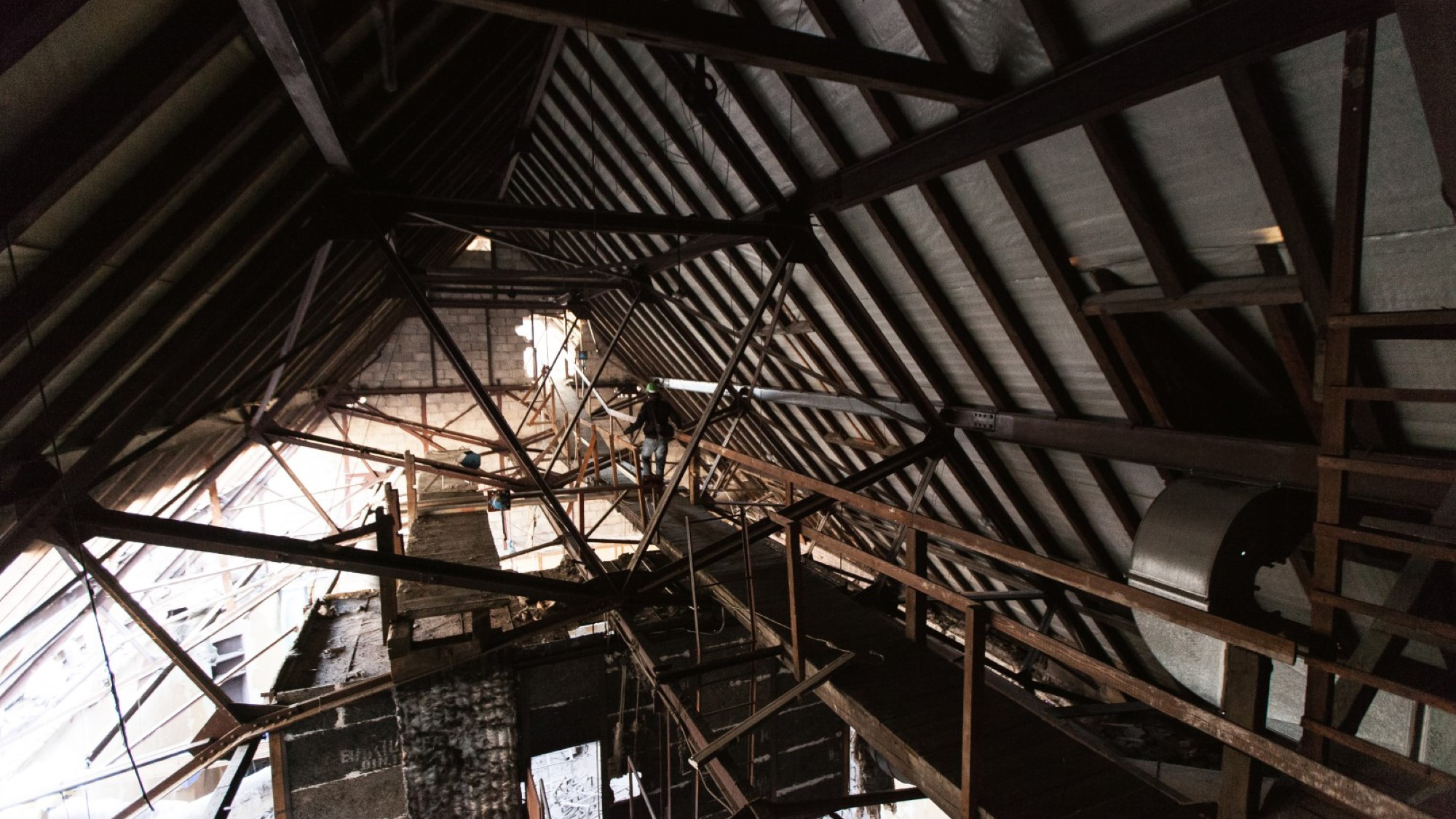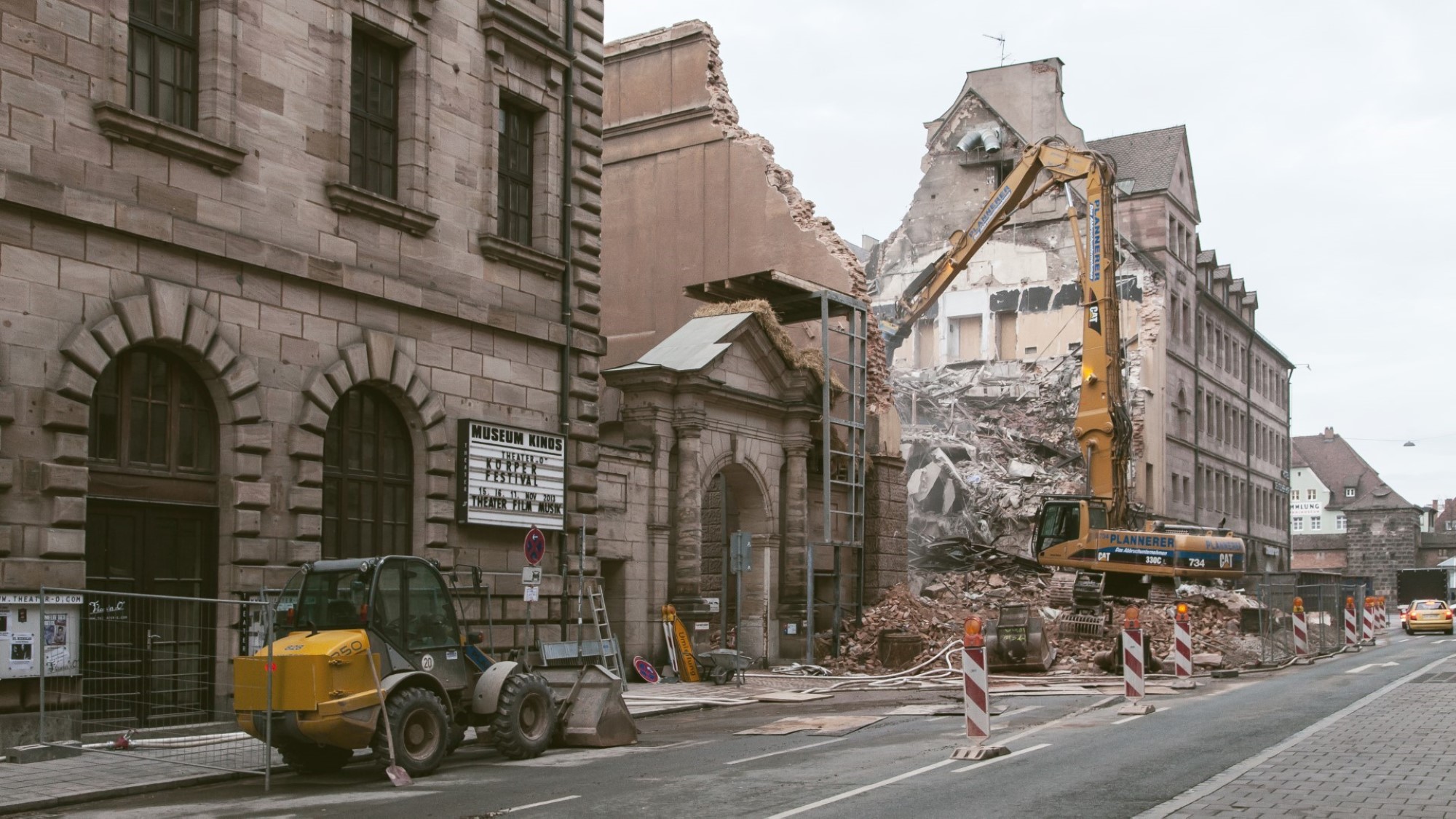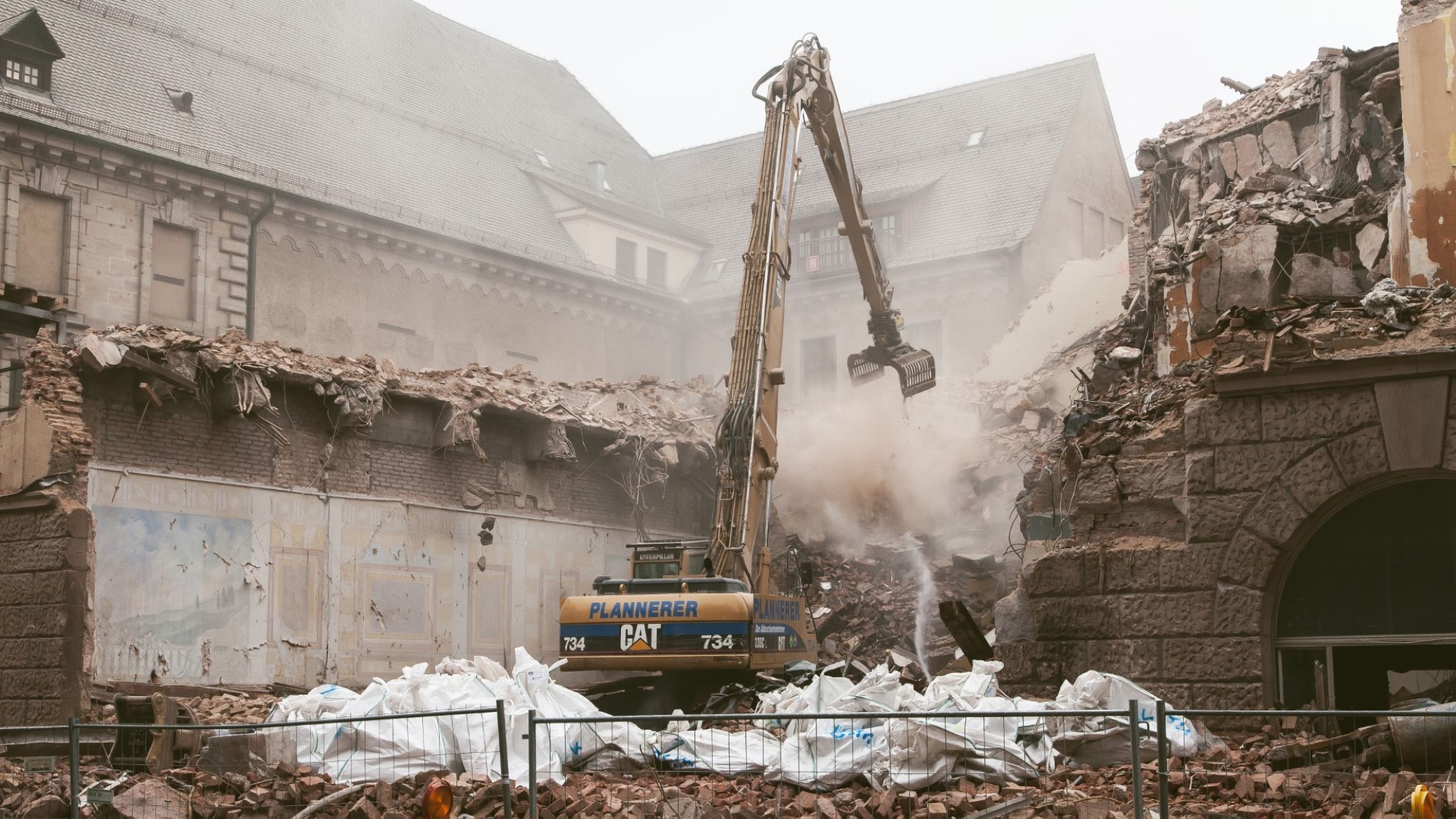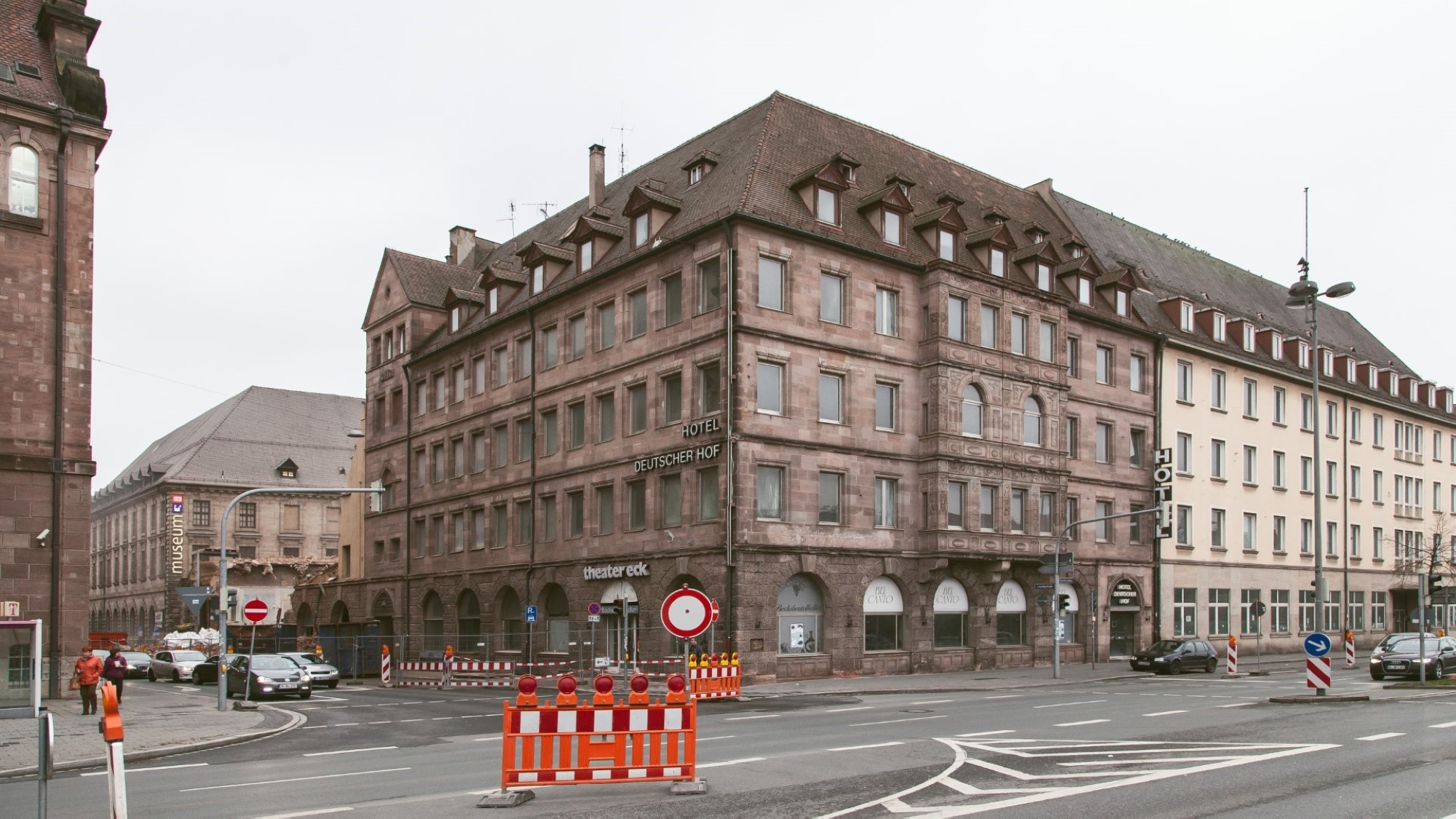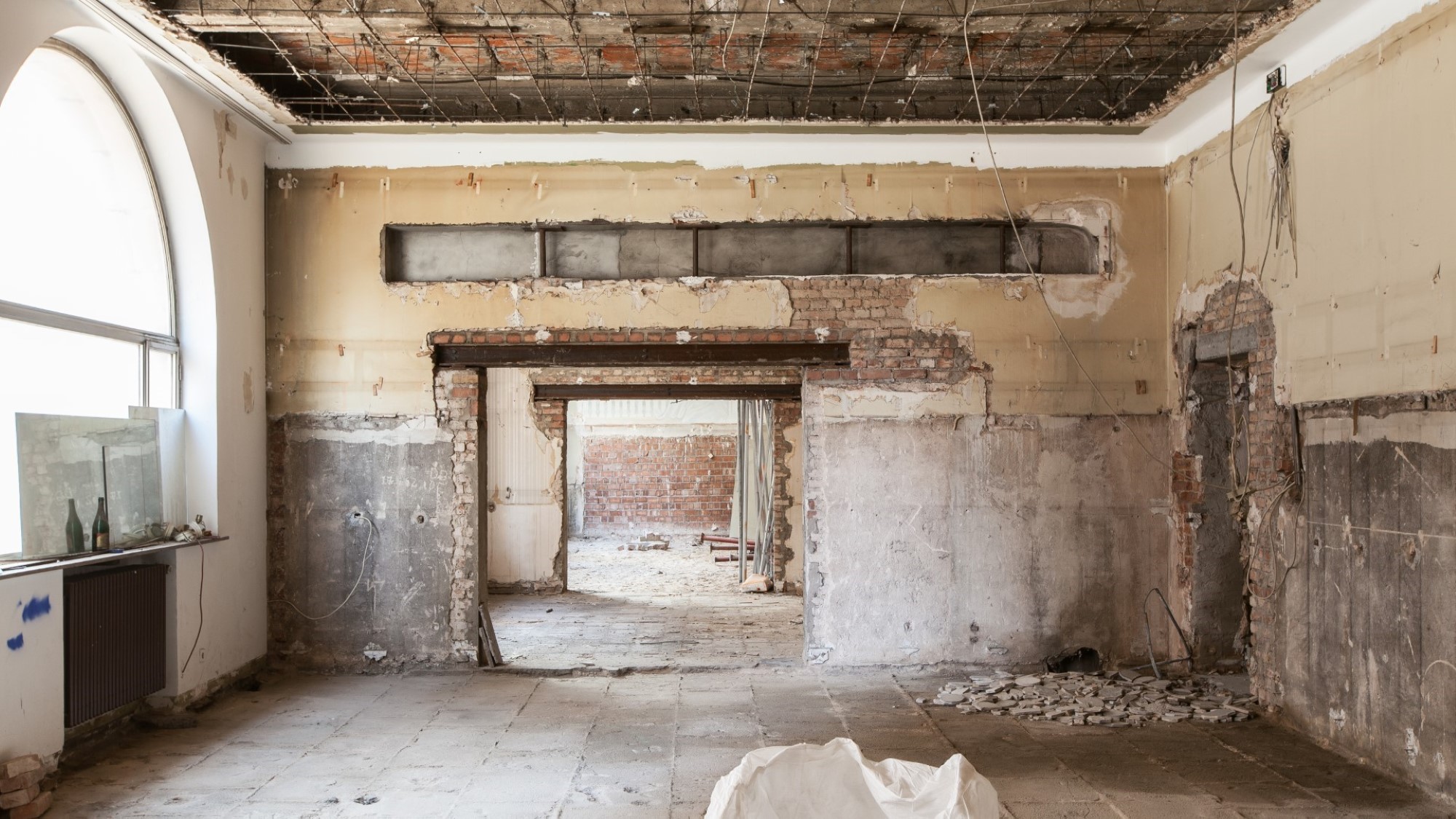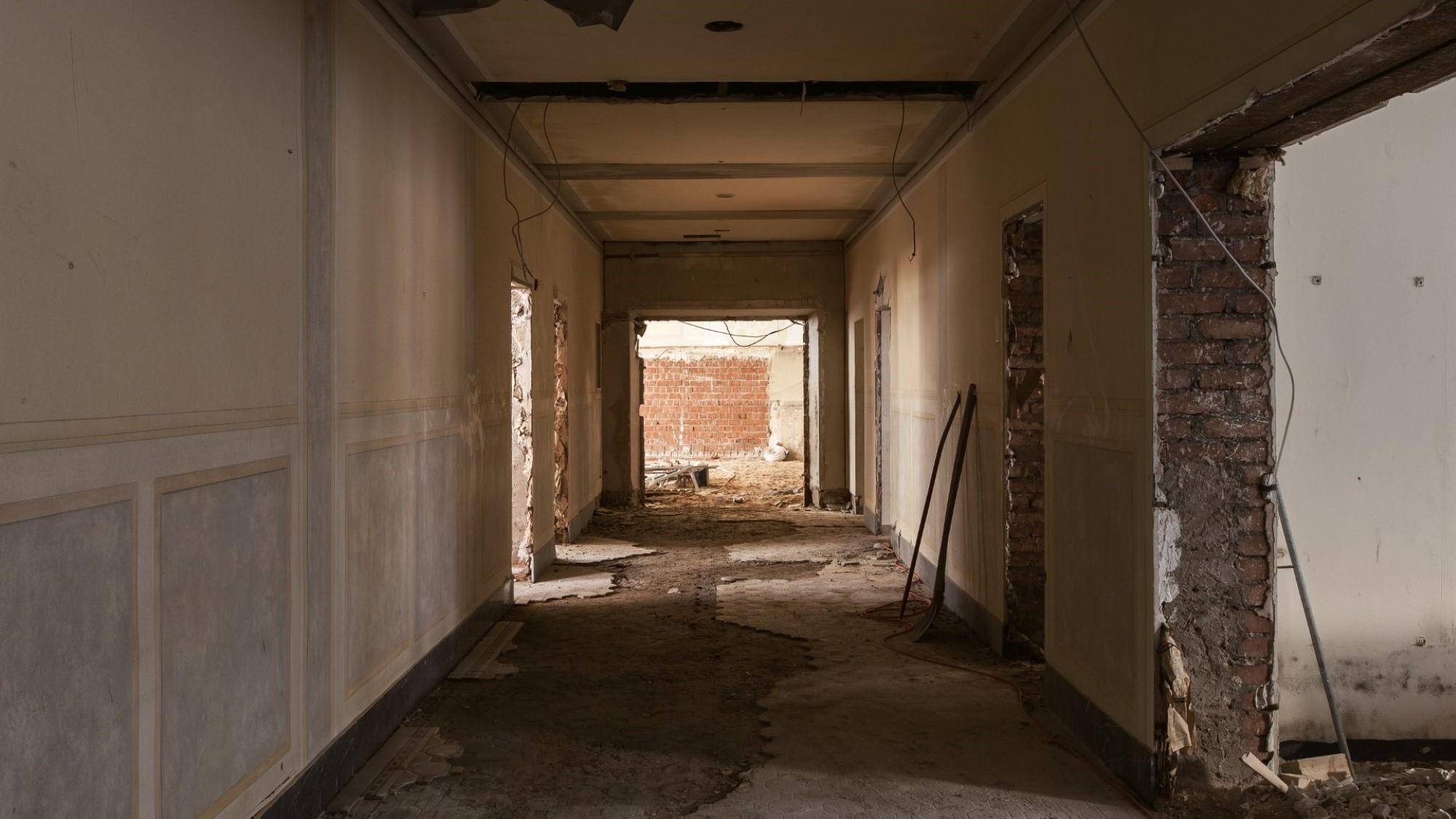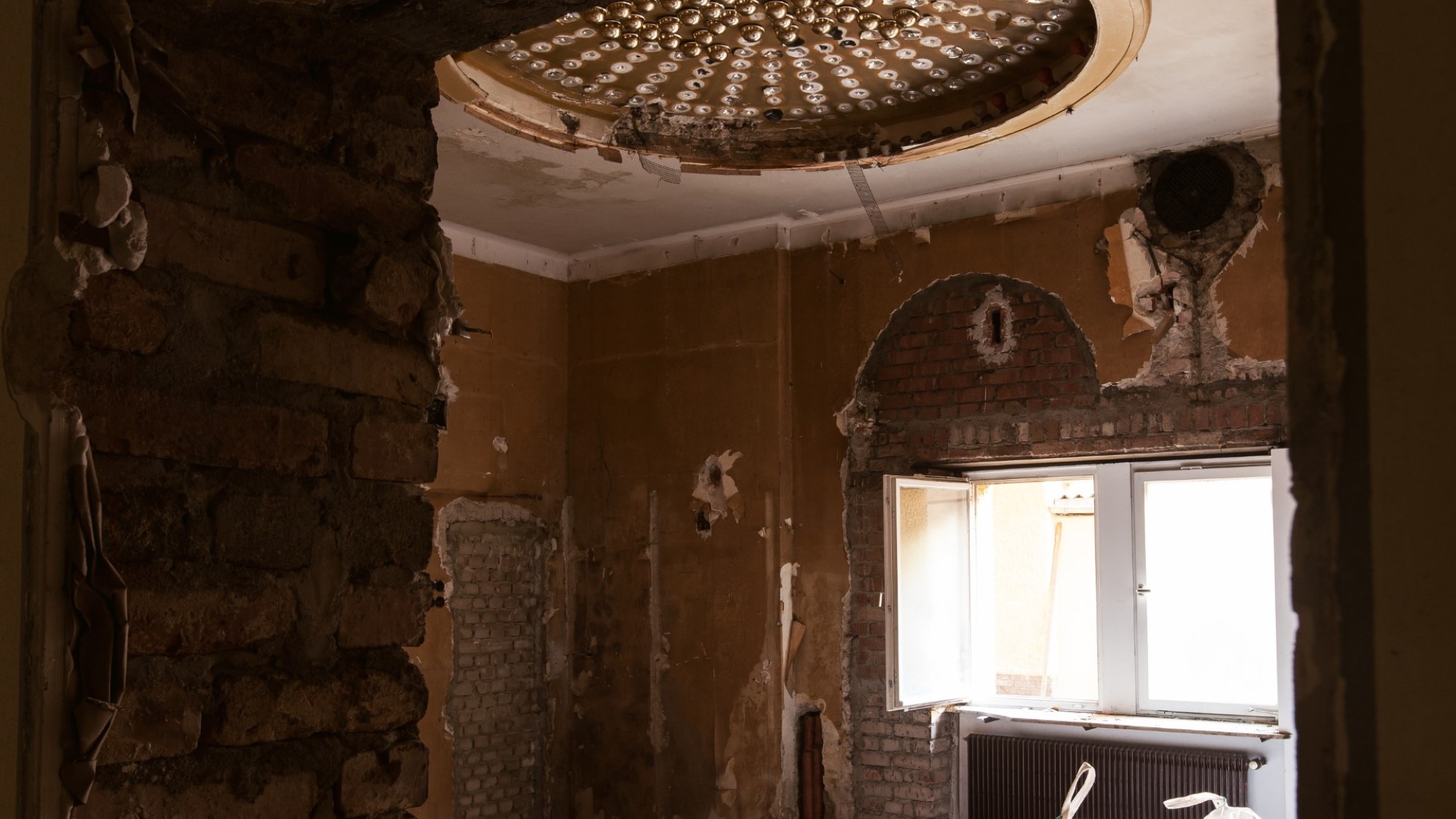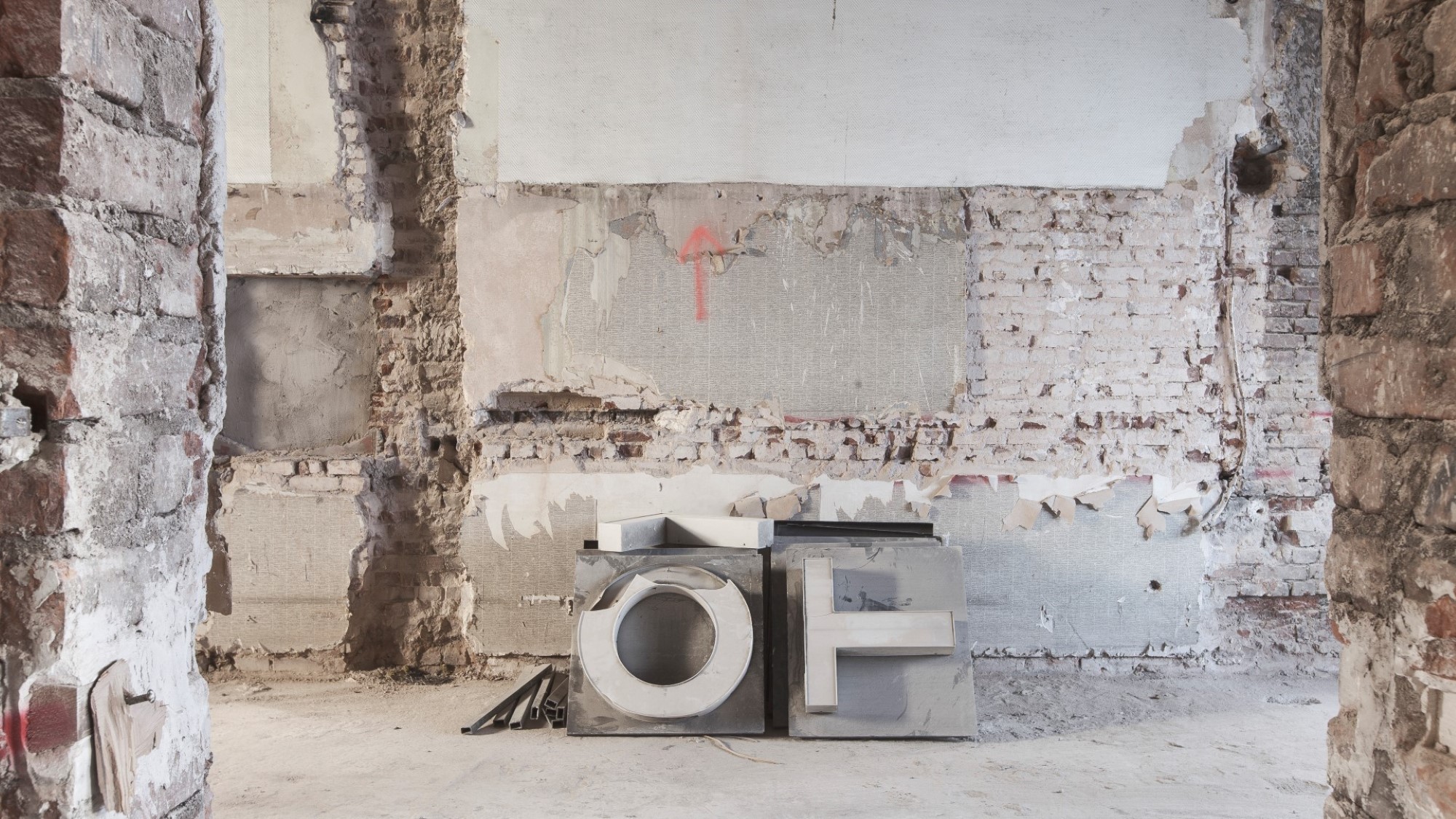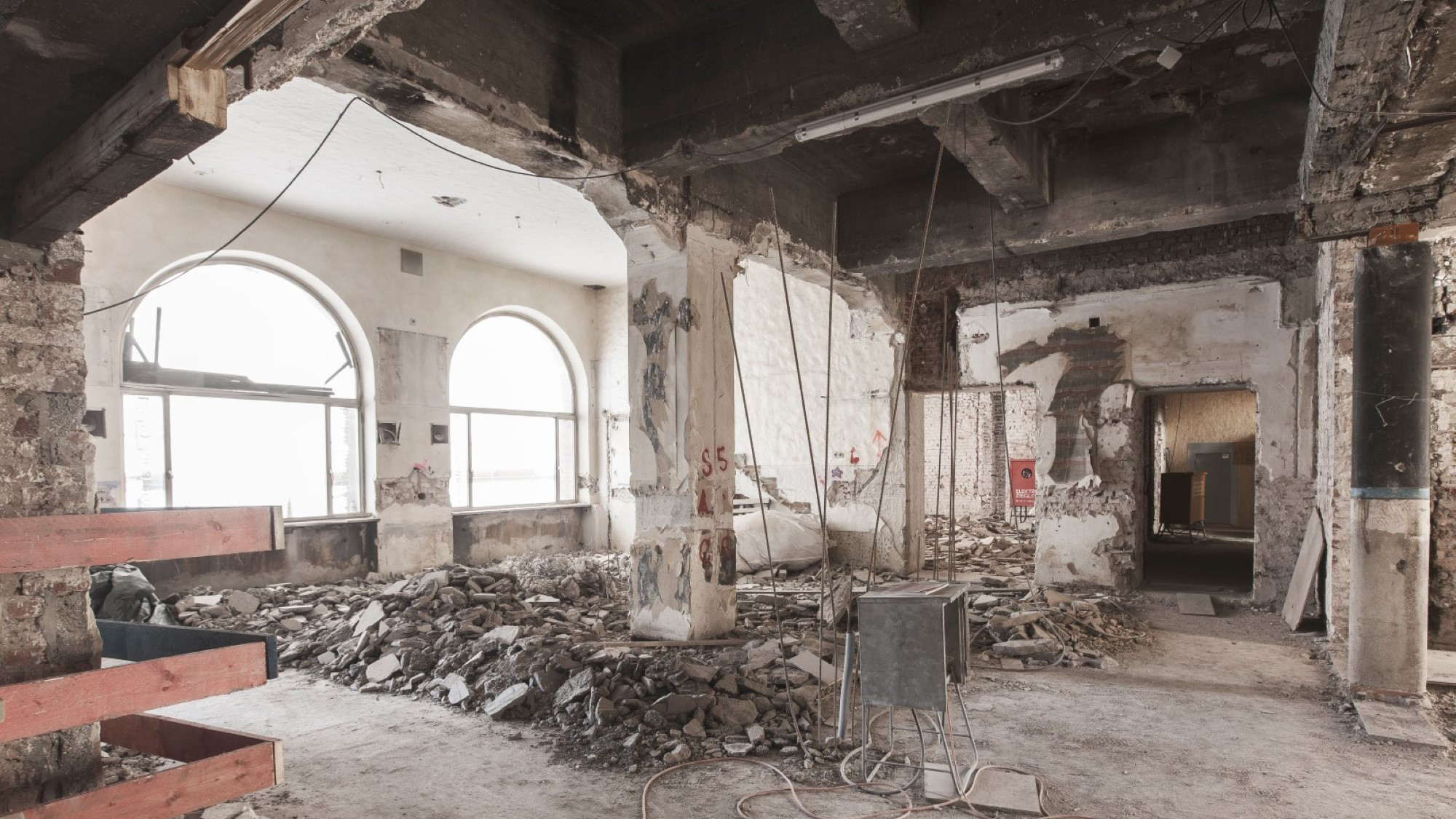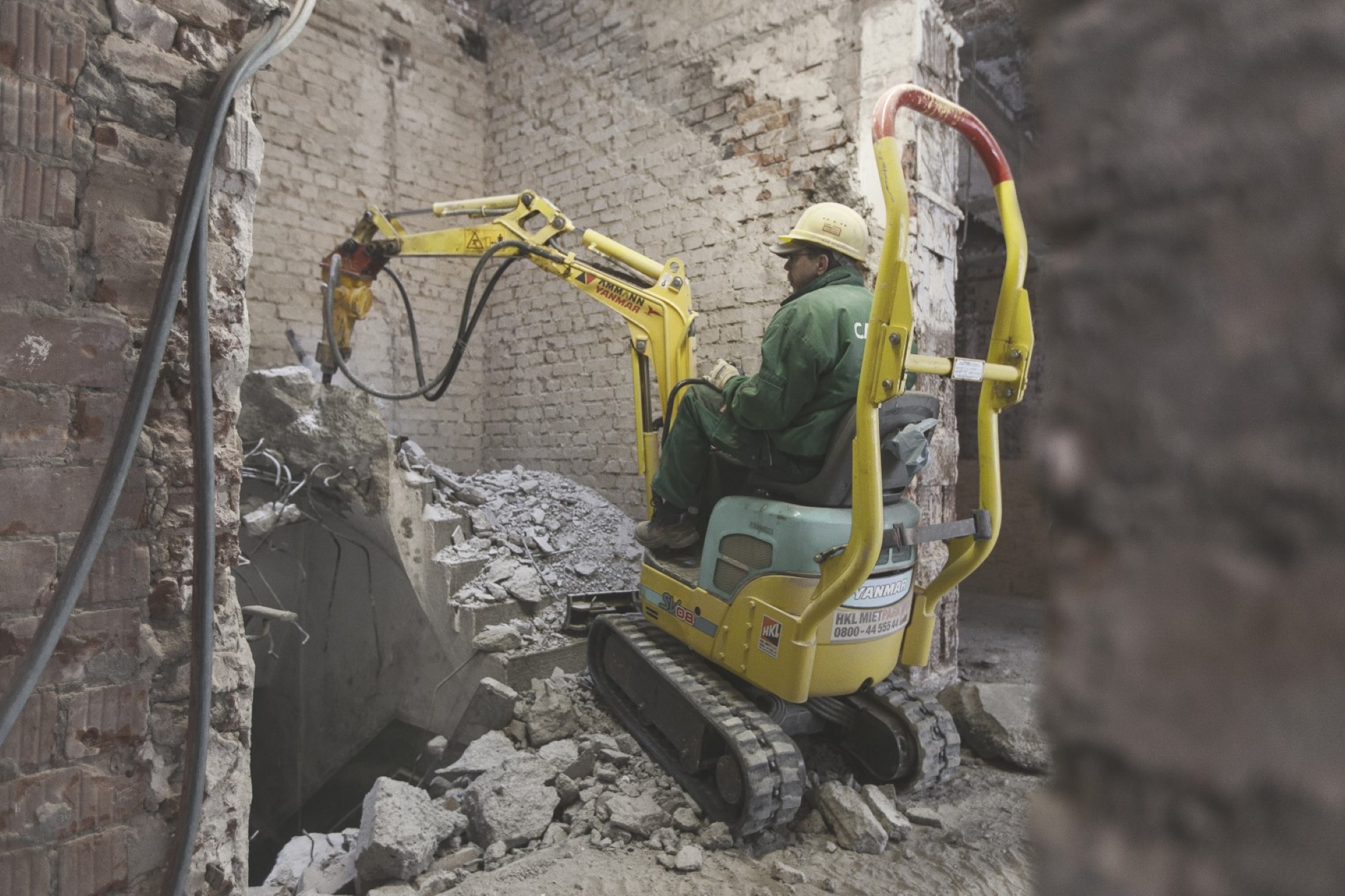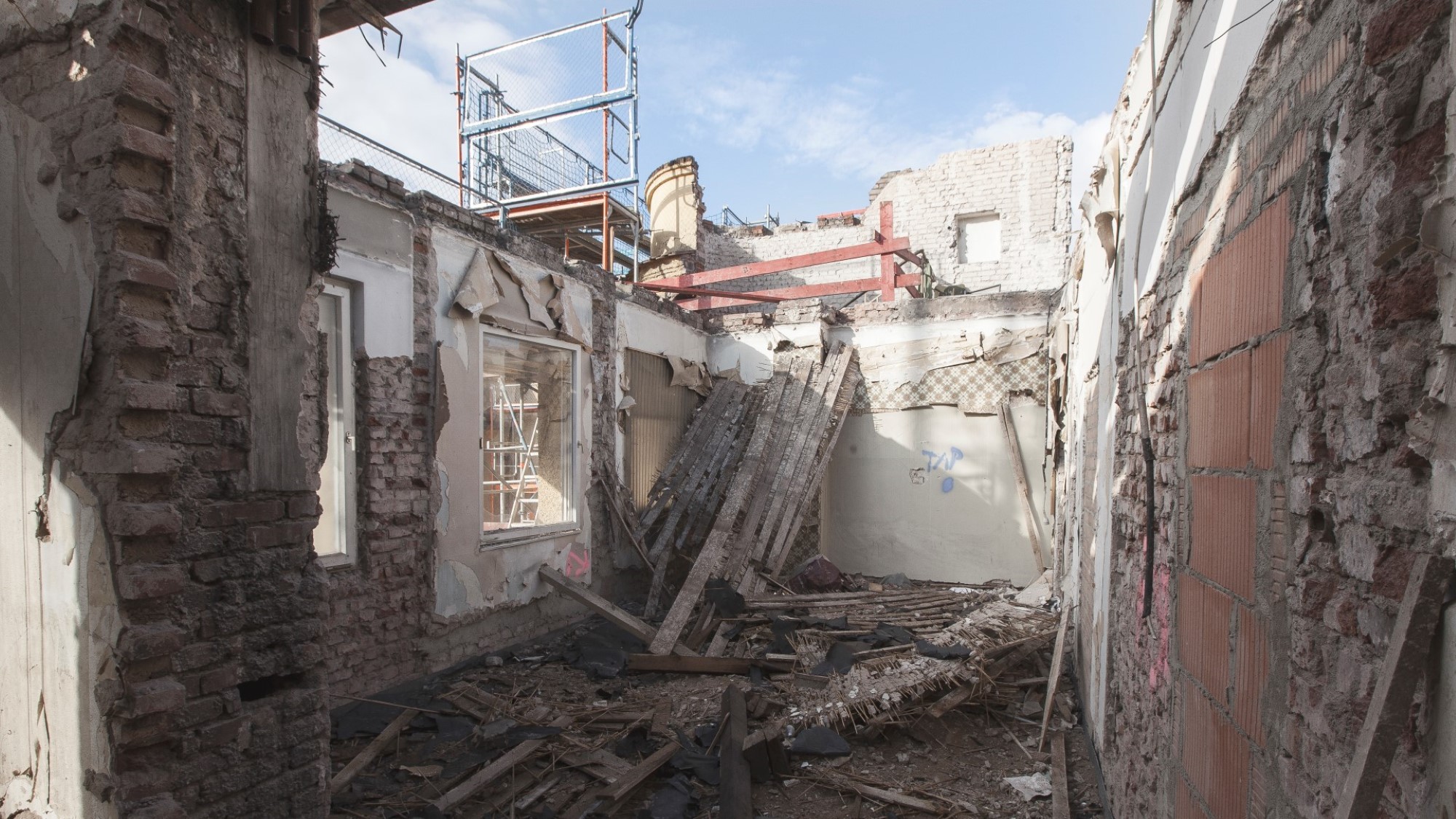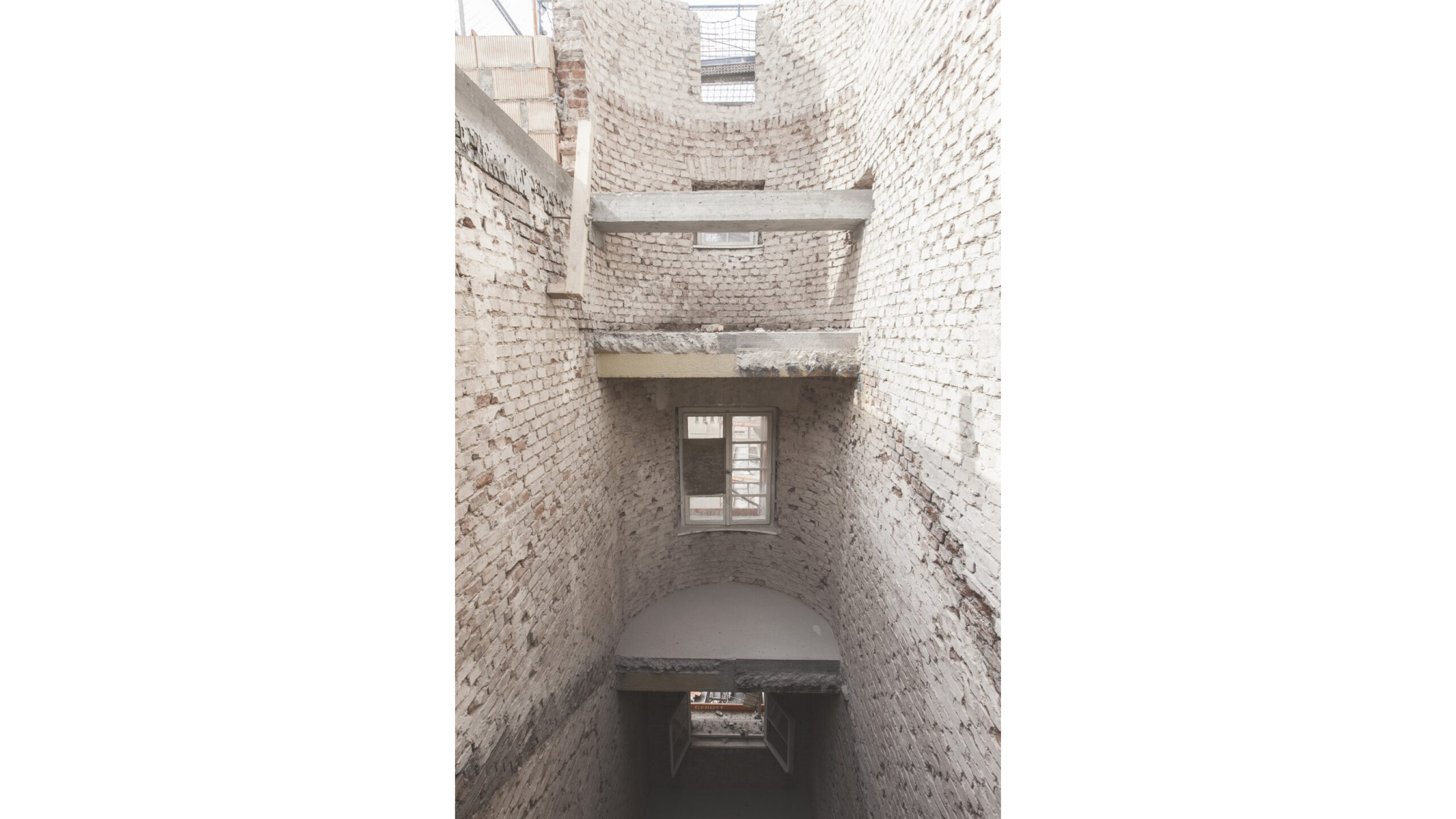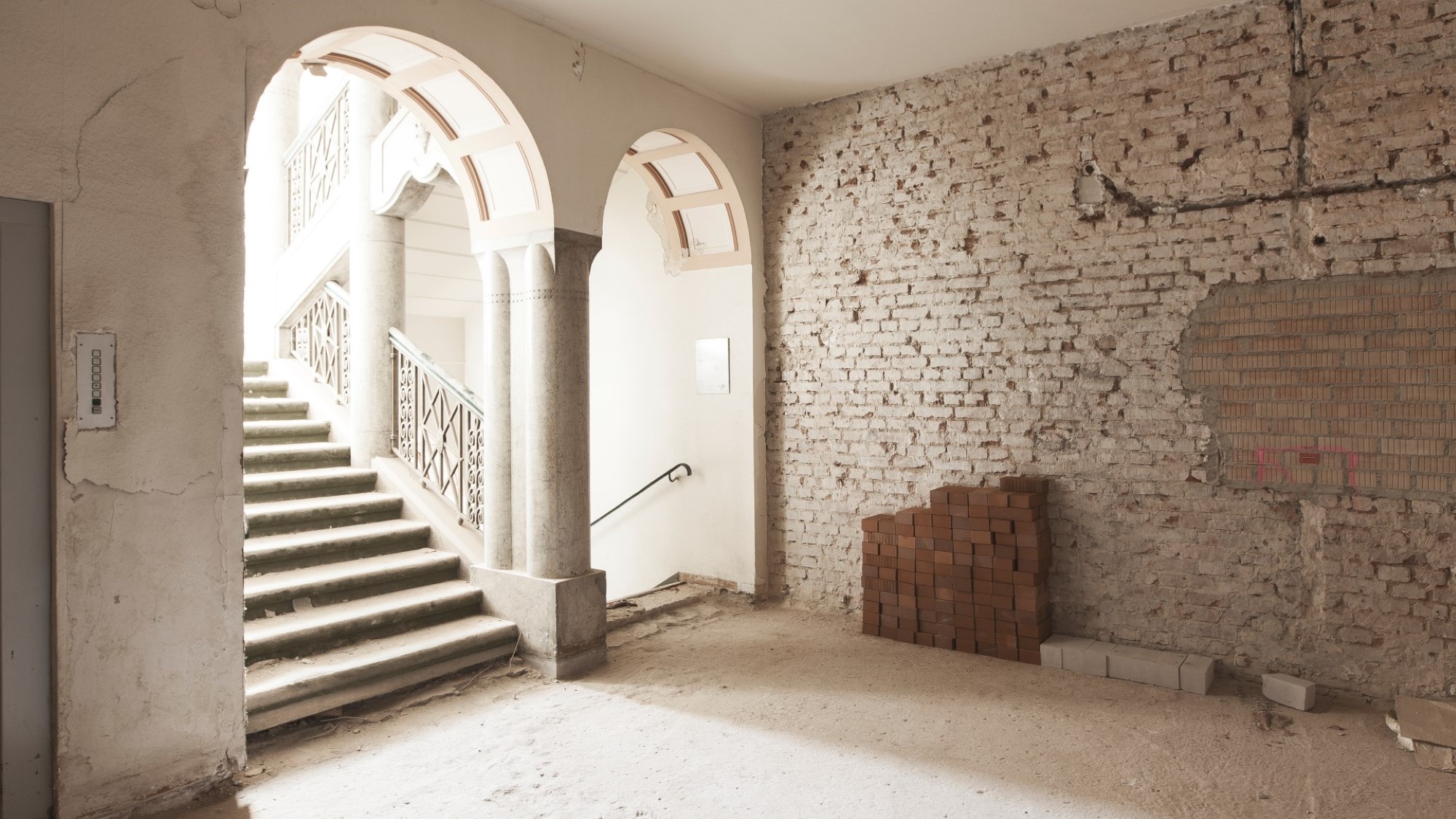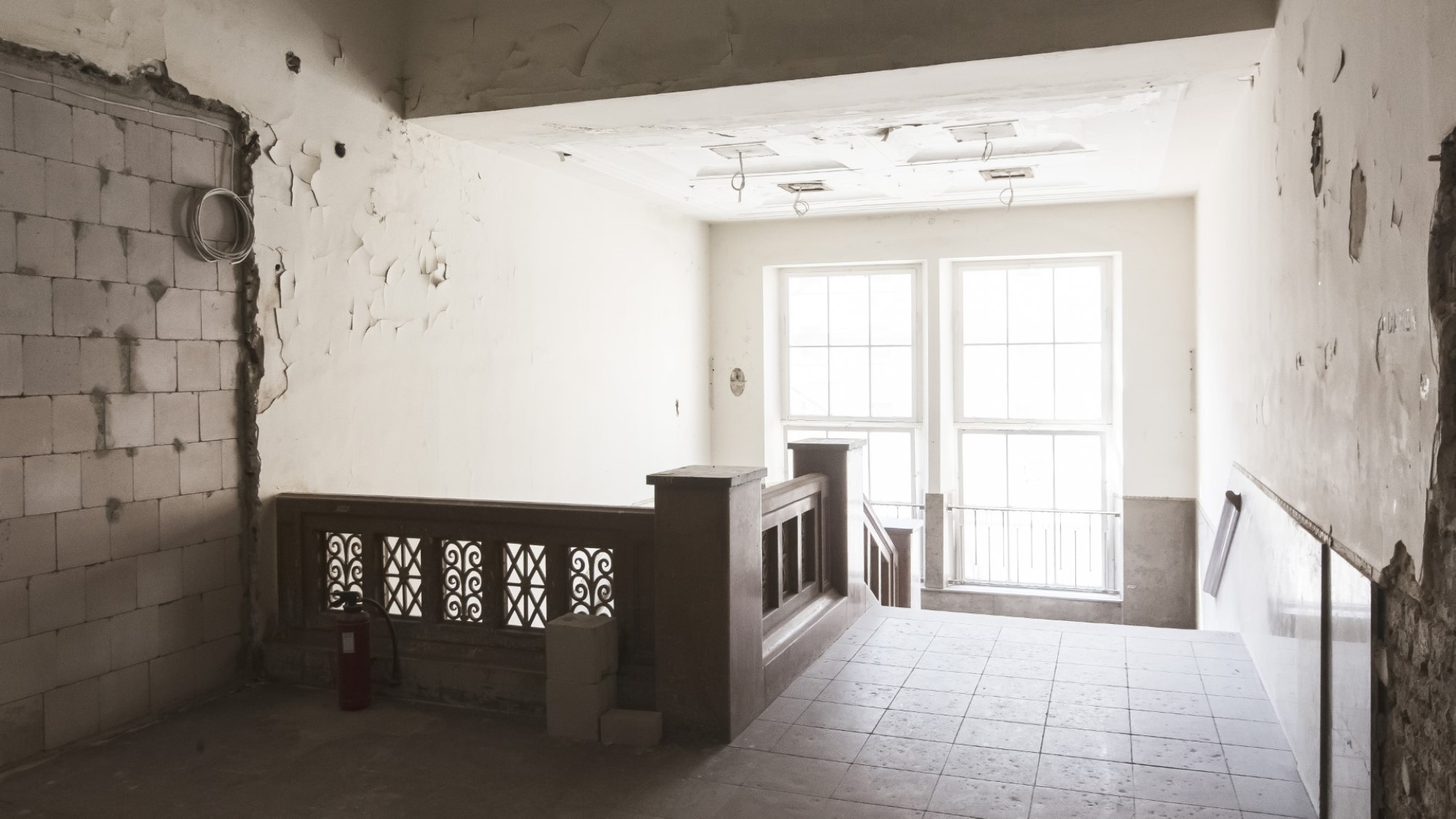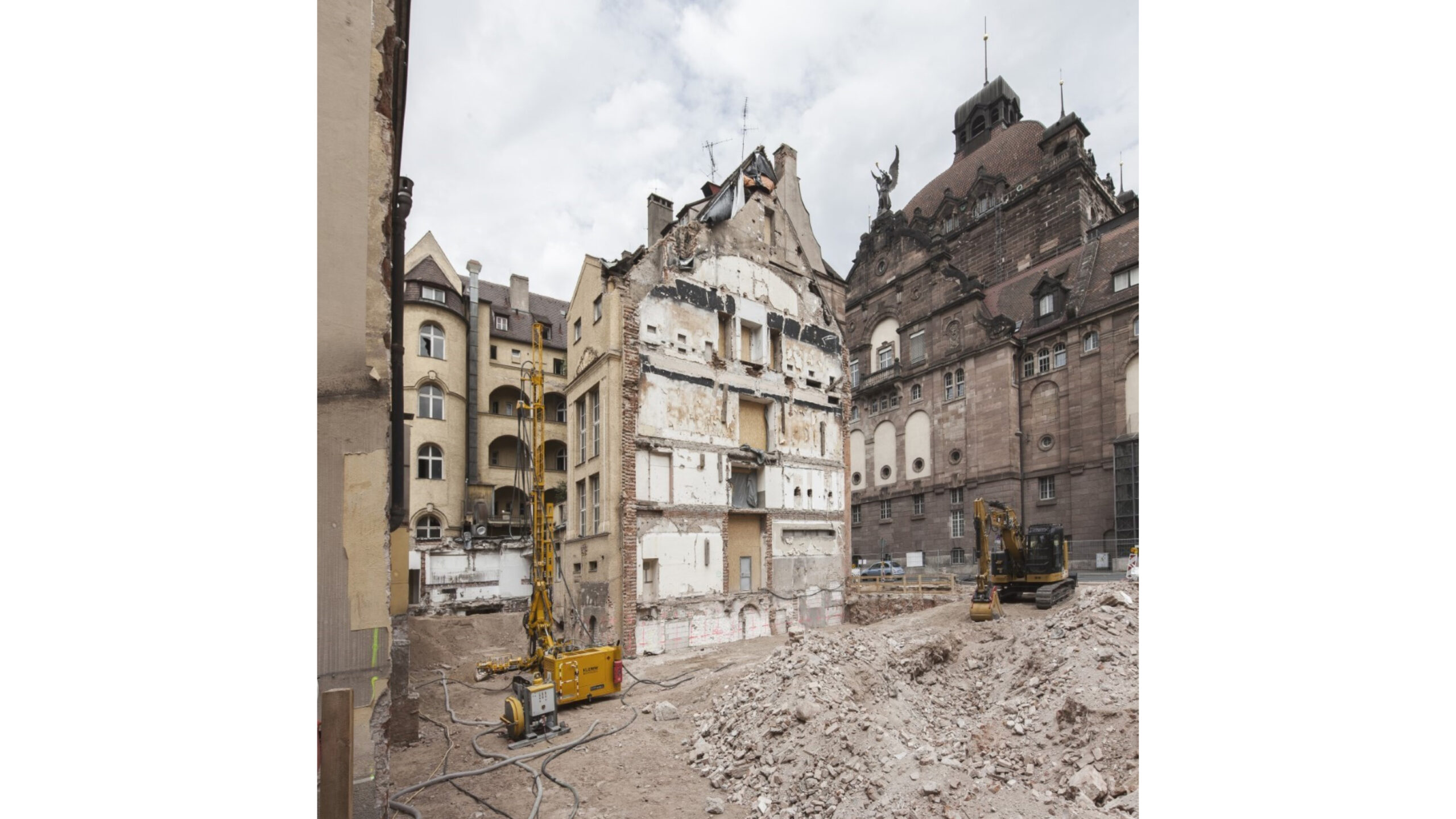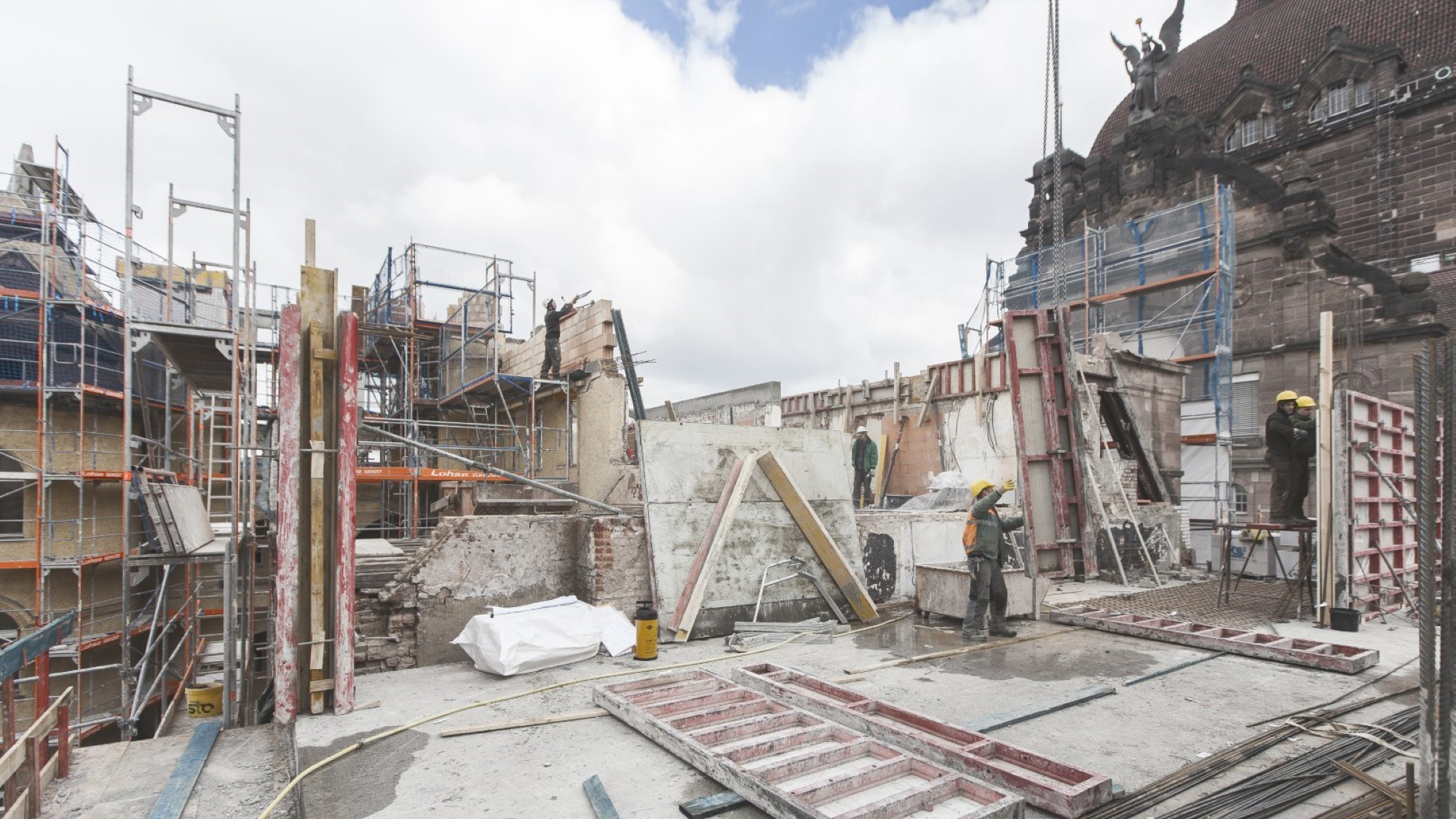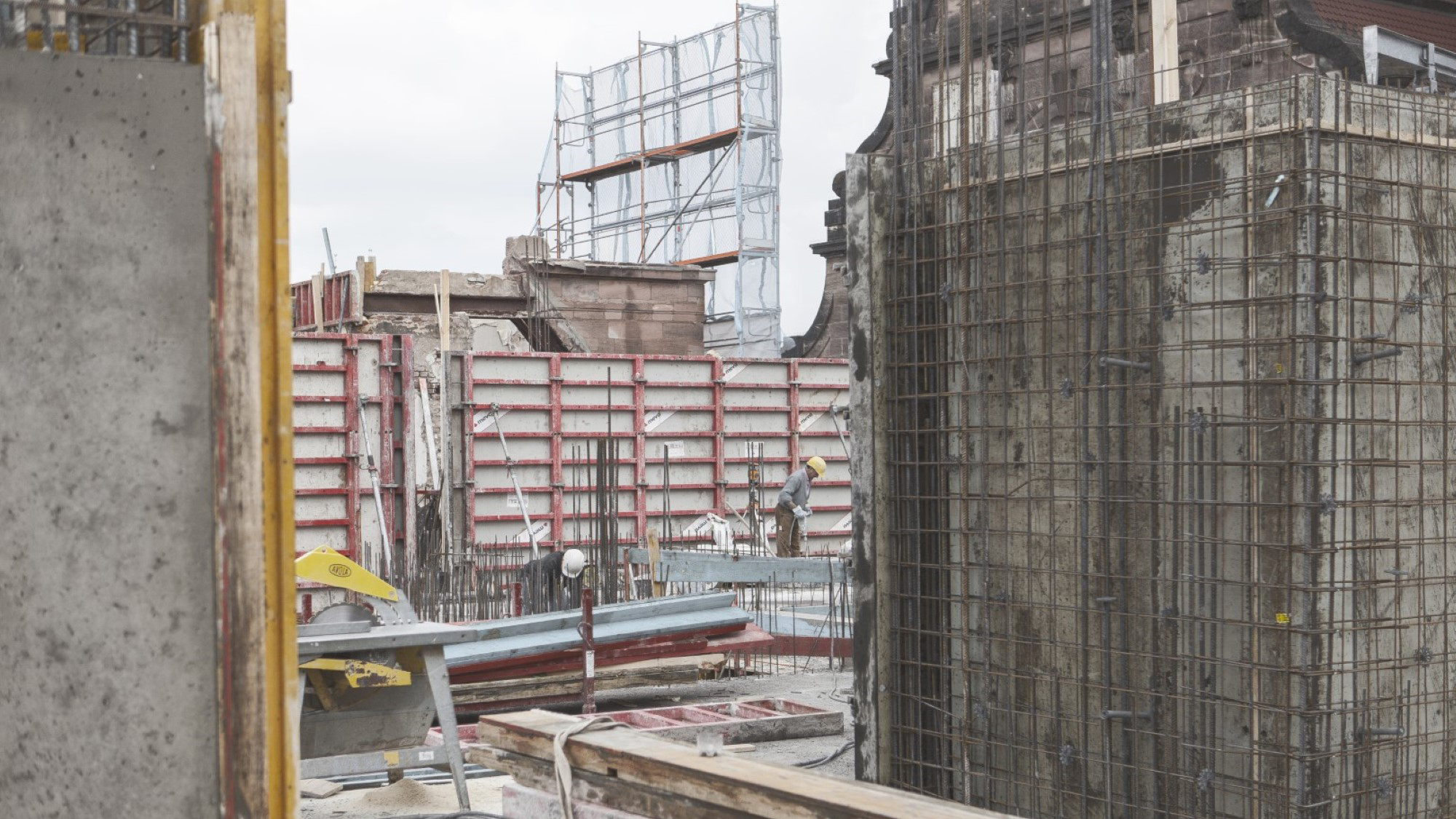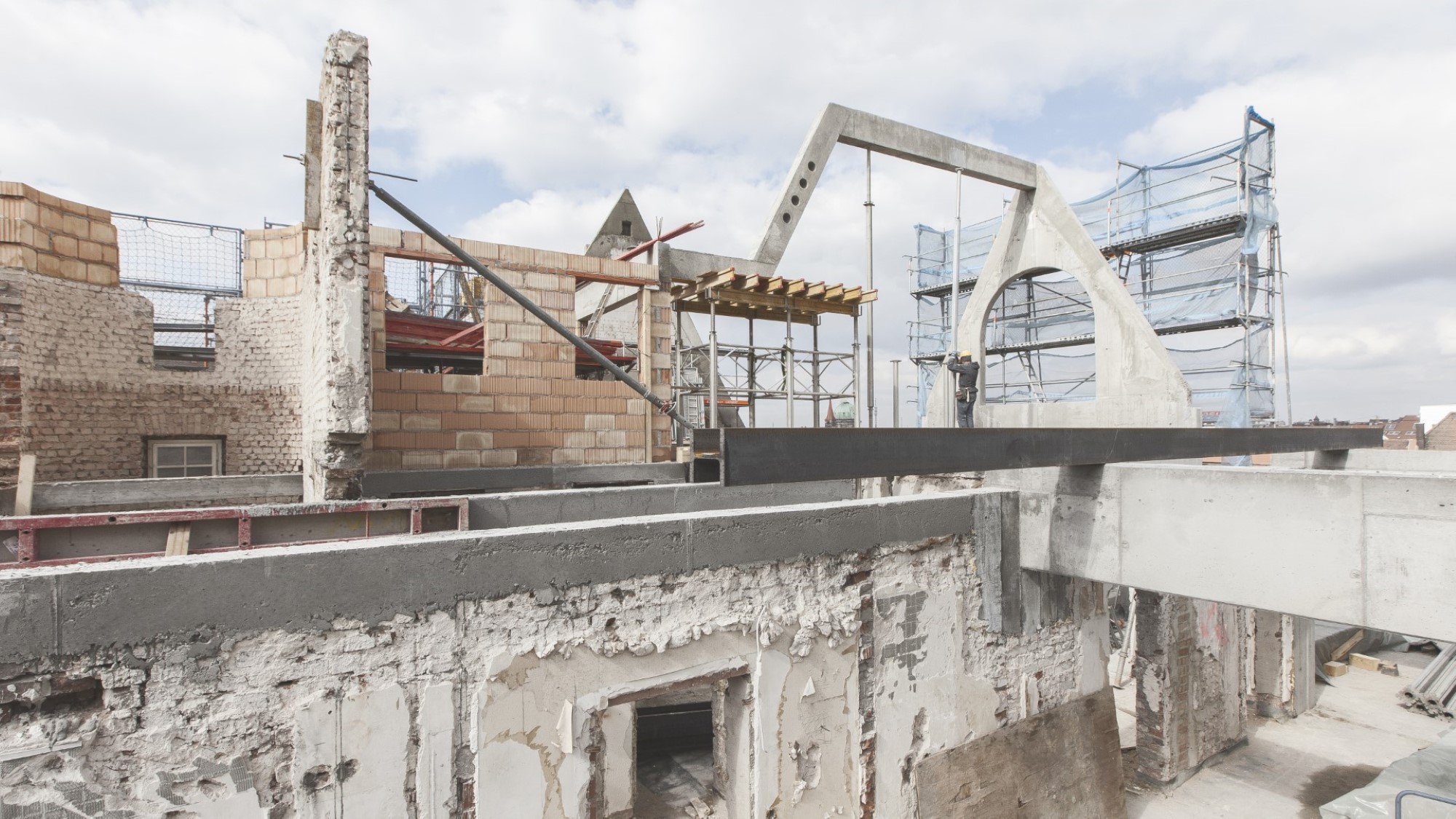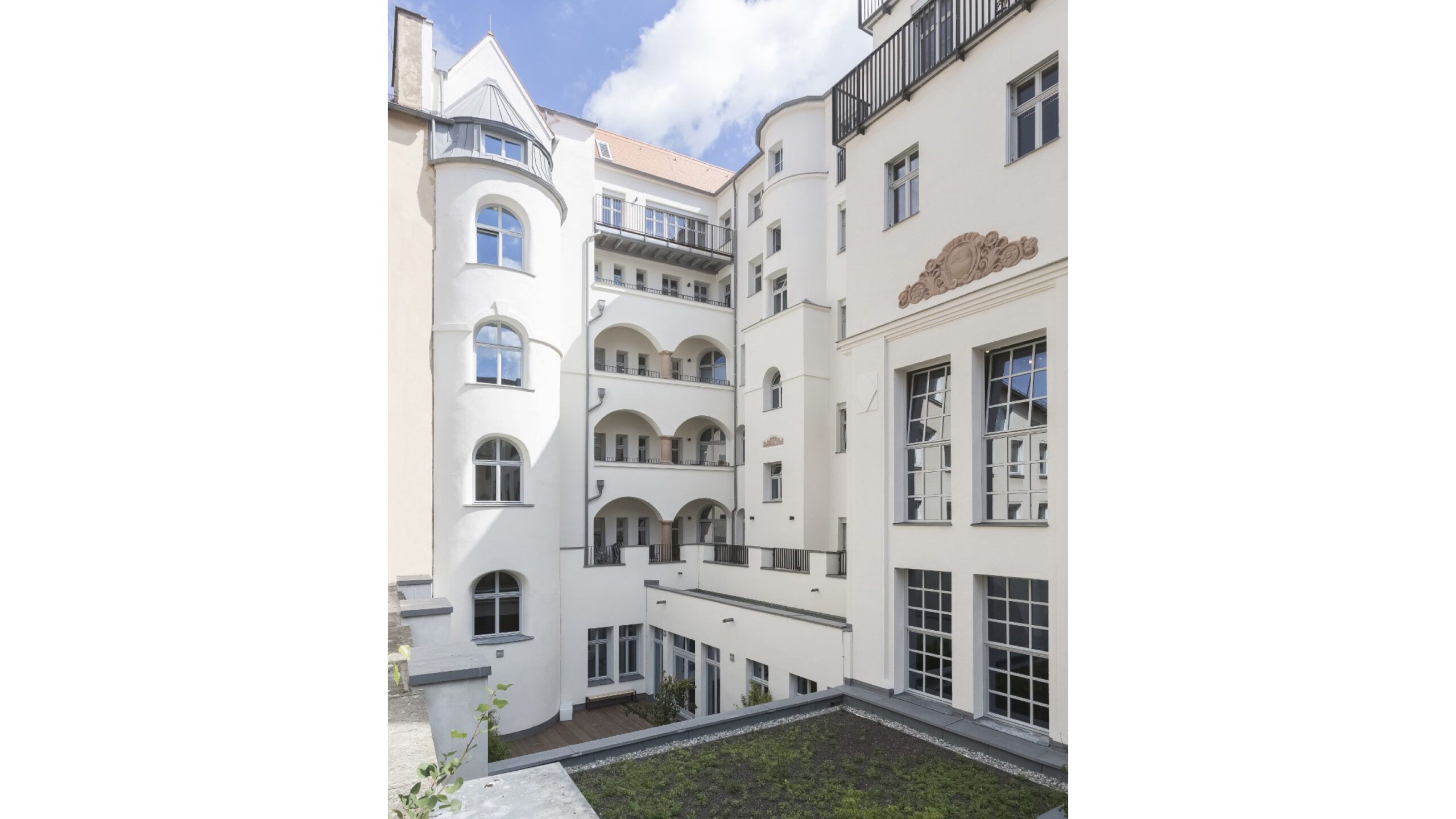Hotel Deutscher Hof
Date
2012 - 2016
Location
Nürnberg, Deutschland
Text
Sebastian Gulden
Images
Jonathan Danko Kielkowski Fotografien 2012-2016, Sammlung Sebastian Gulden Historische Aufnahmen
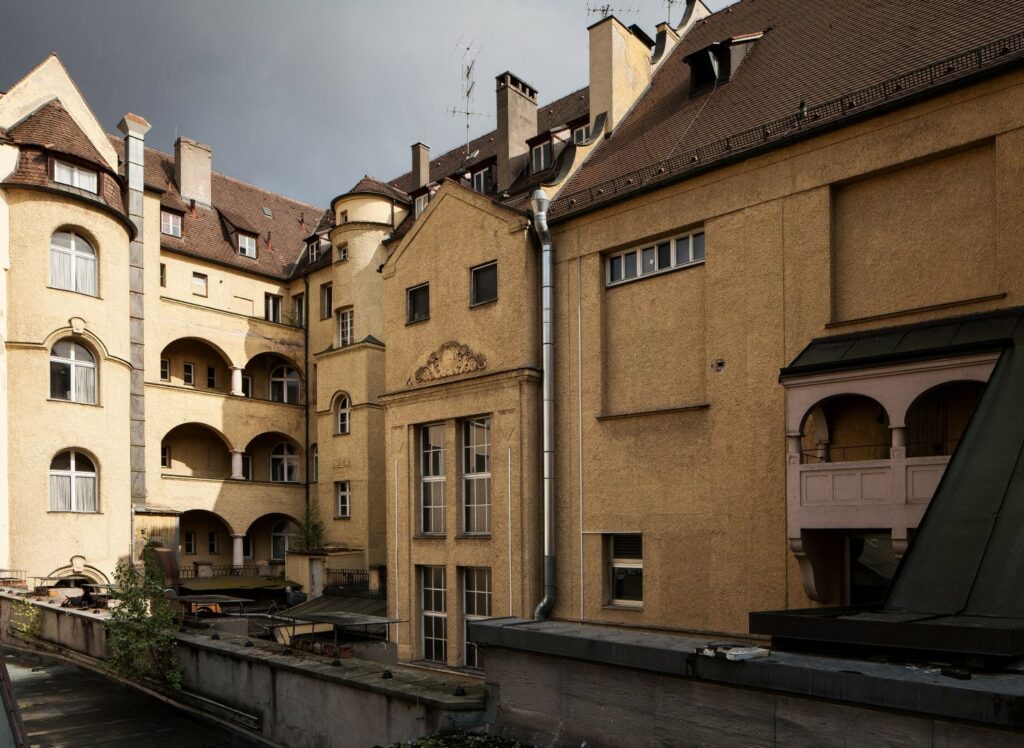
Resurrected
Central, conveniently located, close to the city’s pulse – these are the qualities that make a good city hotel. This is true today, and it was no different over a century ago, including the case with the Deutscher Hof, built between 1912 and 1913 on Nuremberg’s Frauentorgraben. Although it has been over a decade since anyone stayed here, Nuremberg’s residents still associate the imposing building with hotel operations – and its most infamous regular guest. But more on that later.
In fact, the hotel in the Deutscher Hof was a stopgap solution. The building was initially created as a clubhouse for Nuremberg’s teachers. Around the turn of the last century, they ambitiously planned to acquire their own club house with a library, social rooms, and two halls for cultural events and celebrations, which were very popular in the society of the 19th and early 20th centuries.
After several years of unsuccessful search for a suitable plot – a parcel on Tuchergartenstraße in Maxfeld seemed too remote for the teachers – the Lehrerheim association finally achieved a major coup. They secured one of the prime spots on the southern part of the Ringstrasse, just west of the city theater (today’s opera house), inaugurated just eight years earlier. The plot, which had been the site of the old hospital’s west wing, was owned by the city in 1911. However, there was a catch: the high costs for acquiring the land and, not least, for the construction itself. The Nuremberg city leaders demanded architecture befitting the rank of a cosmopolitan promenade at this neuralgic point.
The financial solution: a luxury hotel with a café, billiard room, and restaurant, which, alongside the rental of the halls, should ensure the association’s coffers were always full. The architectural solution: a capable architect of rank, whom the Lehrerheim association found in Hans Müller (1864–1951). He had convincingly demonstrated with the construction of the Brauhaus Nürnberg on Schillerstraße (1895) and the private bank Kohn on Königstraße (1910) that he was capable of creating architecture far above average. However, the commission would prove to be a severe test of patience for him, as the extremely cautious association board, focused on thrift but also on fairness in awarding contracts, let just about every detail – from the carpeting to the toilet paper holder – be discussed and decided by specially created committees staffed only with laypeople (!).
Müller placed the hotel wing prominently at the front on Frauentorgraben, so that the best rooms enjoyed direct views to the north of the silhouette of Nuremberg’s old town and the Kaiserburg. To harmonize with the neighboring opera house and the city wall opposite, the facades were clad with red quarry sandstone. The lavish, imaginative ornamentation and figure reliefs and the two now-lost porticos at the main entrances were created by Nuremberg sculptor Johannes Müller.
The cubature of the building part was enlivened by a multi-story box bay window, open arcades at the corner of the building at the intersection with Lessingstraße, and a richly structured roof landscape with a corner-side roof terrace at the level of the third upper floor and two mighty dormer windows, which gave the building its characteristic silhouette. The rich detailing and picturesque elements primarily served to give the actually massive building mass a certain lightness.
Müller moved the teachers’ association home away from the promenade to the south on Lessingstraße. The execution of the hall building and the club locale in the styles of Heimatschutz and Neo-Baroque emphasized by their more intimate effect the function of the buildings as places of gathering and club life. The ground floor, also executed in red sandstone, stylistically connected the tract with the hotel building on Frauentorgraben; in contrast, the upper floors were finished with rough plaster and a light paint.
The dignified furnishing of the two halls, guest and club rooms with dark furniture and Art Nouveau lamps complemented plaster fields, ornamental wall coverings, and paintings by Nuremberg painter Karl Selzer. The large hall on the first floor of the tract on Lessingstraße was spanned by a massive barrel vault. What appeared to be made for eternity was actually a comparatively lightweight construction in Rabitz construction method – which only made sense for structural and cost reasons.
Ah yes, the most infamous regular guest! That was Adolf Hitler, who officially chose the Deutscher Hof as his personal “headquarters” from 1933. His frequent presence – he resided at the Hotel Deutscher Hof on every visit to Nuremberg starting in 1920 – is indirectly owed to the Lehrerheim Association. The association demonstrated a keen sense of business when, after several unsuccessful appointments, it signed a lease with the enterprising war veteran Johannes Klein. Politically, however, the native Alsatian was positioned far to the right even by the standards of the time and was involved in völkisch-nationalist circles, which gained momentum after World War I.
Given these connections, it is not surprising that the NSDAP coveted the Deutscher Hof. Hitler’s compliant henchman, the Nuremberg Mayor Willy Liebel, described the situation in 1935 to the director of Siemens-Schuckert-Werke, Oskar Ritter von Petri, in these words:
“Tradition plays such a decisive role for the Führer and the party that the Hotel Deutscher Hof will not only remain the Führer’s Nuremberg residence for all time, but that the party itself also attaches great importance to becoming the owner and landlord of this hotel in the planned expanded form.”
With the support of the Middle Franconian Gauleiter Julius Streicher, the NSDAP indeed managed to take ownership of the Deutscher Hof in 1935. Whether the Lehrerheim Association agreed to the sale voluntarily or under duress is unknown. At least the teachers were allowed to continue using their club house as tenants. Ironically, things turned out badly for the staunchly right-wing tenant: a specially founded operating company took over the management of the hotel and its gastronomy and sidelined Johannes Klein.
With the “planned expanded form,” Liebel referred to the acquisition of the neighboring property to the west, the Nuremberg administrative headquarters of Siemens-Schuckert-Werke. The Nazis also seized this magnificent building, completed in 1923 according to plans by Hans Hertlein. In exchange, Siemens-Schuckert received three plots of land at what is now Richard-Wagner-Platz, where the Sigmund Schuckert House was built by 1940. Between 1936 and 1937, Hitler had the extension of the Deutscher Hof rebuilt in the style of austere neoclassicism according to plans by Franz Ruff and equipped with a balcony. From this “Führer’s balcony,” the dictator henceforth reviewed parades on the Frauentorgraben during the Reich Party Days. This was only beneficial for the media staging of the “Führer,” as in previous years Hitler had to lean out of his room window in the old building to be seen by the cheering crowds (and cameras). Thus, the Deutscher Hof, along with the neighboring opera house, became an integral part of the choreography of the Reich Party Days.
During the renovation, the decorative elements of the “old” Deutscher Hof also had to be sacrificed: the two porticos with their crowning concrete sculptures and the naked putto sitting on the corner terrace at the junction of Lessingstraße had to be removed without replacement. The domed roof turret of the Lessing Halls – which served as the outlet of the ventilation system – became a victim of material deliveries to the armaments industry during World War II due to its sheet metal cladding.
When the British bombing rained down on Nuremberg’s Old Town and Tafelhof on January 2, 1945, high-explosive bombs hit the junction of Lessingstraße and Frauentorgraben. They destroyed the north wing of the opera house. At the old building of the Deutscher Hof, they tore away the entire corner of the building down to the basement, and the new building burned out. The writer and teacher Fritz Nadler witnessed the downfall:
“It was a clear autumn day. The sirens wailed in the early afternoon. Then the bombers came. For only twenty minutes, the explosions roared during this first day of major attack. […] Bombs had also fallen on the ‘Ring’, trams were lifted off the tracks, piled up and shattered into each other. Flames licked out of a hundred windows of the ‘Führer’s hotel’. A devilishly black column of smoke rose to the cloudless sky, from which the sun, glowing red as if drenched in blood, shone down on the inferno […].”
As the former property of the NSDAP, the Deutscher Hof passed into the ownership of the Free State of Bavaria after the war. Until 1949, the Nuremberg teachers fought for the rear building of the old building – with success. The new building, however, remained state-owned and served as the seat of the Federal Employment Office and the city’s employment office after its reconstruction.
By this time, the teachers had long since rebuilt their Deutscher Hof. Under the direction of architect Hans Albert Wilhelm, the building was externally restored in close resemblance to its original condition. However, the rich roof landscape was omitted in favor of optimal space utilization, and for the same reason, the open arcades at the junction of Lessingstraße were bricked up to windows.
The teachers initially could not get to the Great Hall: in 1946, the State of Bavaria leased it along with the rear building to the actor Karl Pschigode, who set up the city’s most famous and opulent post-war theater there – naturally with a refined interior design that closely adhered to the classicizing “steamship style” of the Nazi era.
Financially, however, the “Lessing Theater” proved to be a failure. Already in 1949, the city had to take over the lease, and in 1959, when the new playhouse at Richard-Wagner-Platz opened, the final curtain fell next door at the Lessing Theater. But not only the theater landscape was under massive pressure in those years. The rising prosperity and the equally rising demands of guests posed an unprecedented challenge for hotels. Thereafter, hardly a year went by at the Deutscher Hof without modernization, renewal, and construction at some location – but ultimately only with limited success.
In 1975, tenant Heinz Rübsamen and the teachers once again resisted the economic imbalance, and they did so with full commitment: the hotel rooms were given a general overhaul, and finally, private bathrooms and toilets. Even the GröFaZ (Greatest Field Commander of All Time, a sarcastic reference to Hitler) had always had to use the toilet and bath “down the hall.” Since the basement rooms with their modern concrete ceilings were anything but spectacular, interior designer Friedrich Feuerlein helped with plenty of chicken wire, textured plaster, and rustic furniture. The “Bocksbeutelkeller,” a refuge for opera goers and night owls for decades and the epitome of rustic tavern architecture of the 1970s, was born.
But all efforts were ultimately in vain, despite the popularity of the hotel’s gastronomy and, in particular, the halls, which had been a coveted location for carnival parties, fashion shows, conferences, and dance events over the decades. In 1990, after 77 years, the Lehrerheim Association had to sell its house with a heavy heart to the Maritim Hotel Company and moved around the corner to Weidenkellerstraße 6. But even Maritim finally parted with its acquisition in 2004: the gigantic building on the Ring with its gigantic halls and especially its gigantic maintenance costs simply no longer paid off.
In the following years, what the Nurembergers know from other “difficult” major construction sites in the vicinity of their city happened, such as the post-loading railway station on Allersberger Straße, the Milchhof, or the main post office: decay and more decay, interim uses, then ambitious investors with even more ambitious plans, and in the end: nothing but expenses.
Only in 2012 did the tide turn for the Deutscher Hof. The Nuremberg terraplan group, led by its managing director Erik Roßnagel, bought the house with the aim of renovating it in accordance with historical preservation and giving it a new, permanent use. The plans were drawn up by the Nuremberg architect Georg Hagen and the office Matuschek from Heroldsberg.
The internal structures, which had been completely overturned after the war, had to be largely abandoned in the course of the renovation. Only the two main staircases and the foyer of the hall building with their magnificent Jugendstil fittings were preserved and restored. In return, the hotel building regained its picturesque roof landscape – albeit in a contemporary interpretation.
The plan to include the Lessing Halls in the renovation project failed due to the high renovation costs and the lack of parking spaces that had to be demonstrated in the course of the conversion. Thus, in 2014, one of the last large hall buildings of turn-of-the-century Nuremberg disappeared. Terraplan built the “Opernpalais” residential complex in its place, quoting the cubature of the predecessor building.
Deconstruction
Construction
Centrally located, convenient for transportation, and close to the pulse of the city – these are also the characteristics that make a good office building. Since 2016, when the Deutsche Hof reopened after four years of planning, renovation, and reconstruction, the Professional Association for Energy, Textiles, Electrical and Media Products (BG ETEM) has been using the space for its administration and training purposes. A permanent exhibition in the foyer with photographs and historical artifacts tells the story of the building’s varied history, from its inception through the dark days of National Socialism to its resurgence after years of decay. Meanwhile, the new building next door is awaiting demolition: a hotel is set to replace it – of all things!
